





















































































































































Farmers Guardian,
Unit 4, Fulwood Business Park, Caxton Road, Fulwood, Preston, Lancashire, PR2 9NZ
Editor
Olivia Midgley, 07787 240 750
olivia.midgley@agriconnect.com
Head of News and Business
Alex Black, 07880 490 486 alex.black@agriconnect.com
Chief Reporter
Rachael Brown, 07974 039 778 rachael.brown@agriconnect.com
News and Business Reporters
Jane Thynne jane.thynne@agriconnect.com
Chris Brayford, 07773 110 733 chris.brayford@agriconnect.com
Business Reporter
Cedric Porter
cedric.porter@agriconnect.com
Arable Technical Specialist
Ash Ellwood, 07786 190 188 ashleigh.ellwood@agriconnect.com
Head of Machinery and Farm Technology
Toby Whatley, 07583 054 831 toby.whatley@agriconnect.com
Machinery Reporter
James Huyton, 07787 242 185 james.huyton@agriconnect.com
Head of Livestock
Katie Jones, 07786 856 439 katie.jones@agriconnect.com
Features Editor and Head of Livestock Sales
Angela Calvert, 07768 796 492 angela.calvert@agriconnect.com
Livestock Specialists
Ellie Layton, 07814 997 407 ellie.layton@agriconnect.com
Katie Fallon, 07815 003 227 katie.fallon@agriconnect.com
Online Editor
Emily Ashworth, 07977 706 711 emily.ashworth@agriconnect.com
Creative Services
Mike Begley mike.begley@agriconnect.com
Katie Haydock katie.haydock@agriconnect.com
Picture Editor
Marcello Garbagnoli, 07815 003 236 marcello.garbagnoli@agriconnect.com
Sales 01772 799 500 gemma.thorpe@agriconnect.com
Circulation
Subscription hotline 0330 333 0056
help@subscribe.farmers-guardian.com
Newstrade enquiries 01772 799 434
UK print subscriptions £189; Europe: £226.80; RoW: £283.50. FG digital subscriptions: £109
Published by Agriconnect


LISTEN TO THE FG PODCAST
FOR weekly podcasts bringing you the latest news, engaging debates and real farmer stories from across the UK, scan the QR code or go to farmersguardian. com/podcasts



There was a glimpse of summer for the sheep judging at the Royal Norfolk Show. See p82-83 for the full report.
AFTER an election campaign which has been fraught with drama, comedic photo ops and political leaders falling over themselves to ensure Farmers Guardian readers heard what they had to say, the work behind the world’s most famous black door starts now.
And whoever sits behind the desk at Number 10 today, after being clapped into the building by Downing Street staff, will have an in-tray that is bursting with priorities. Food security might not be at the top of that pile, but with the NHS a key battleground in the General Election campaign, food and farming will undoubtedly come into play here. Or at least it should.
With the UK buckling under the strain of a waiting list backlog, dietary-related ill-health including type 2 diabetes among adults and children on an upwards trajectory, obesity costing the NHS about £6.5 billion a year, plus the use of food banks at an all-time high, it does not take someone with a degree to work out that food is the common denominator. And while not everything comes down to governance, a good amount does.
The previous Government failed to tackle advertisers and the aggressive promotion of cheap junk food, and Ministers faced criticism for delaying a ban on the promotion of buy-one-get-onefree deals on junk food until 2025.
In fact, the Government’s own food tsar Henry Dimbleby resigned in March 2023, after he said the Conservatives’ ‘ultra-free-market ideology’ was preventing the UK from getting on top of its health crisis. Recently, I have heard farmers refer to our
THIS week on FarmersGuardian.com, we are launching a new YouTube series, Next Generation Hill Farmers, which highlights the pride and passion of the people working in the uplands. The videos showcase the histories and stories of these farms, while asking how those taking over will shore them up for the future. The first video features fourth-generation farmer Frank Carr, who farms in the Yorkshire Dales National Park. Scan the QR code to watch or visit the Farmers Guardian YouTube channel.

health service as the ‘national dispensary service’ and the ‘national disease treatment service’.
A Government which fails to recognise food’s role in the health of its nation is missing the low-hanging fruit, literally. The new incumbents must build on the conversations started by the Downing Street Farm to Fork summits and bridge the gap between farmers and the end consumer. Initiatives which put producers and suppliers in front of the people signing the cheques for public procurement is a good place to start.


On this week’s cover: YFC
Not only will these partnerand hopefully create better margins at the farmgate, but



Not only will these partnerships bring more certainty and hopefully create better margins at the farmgate, but by investing in local supply chains that create value allround, the benefits will be meaningful and stretch further than people’s waistlines.

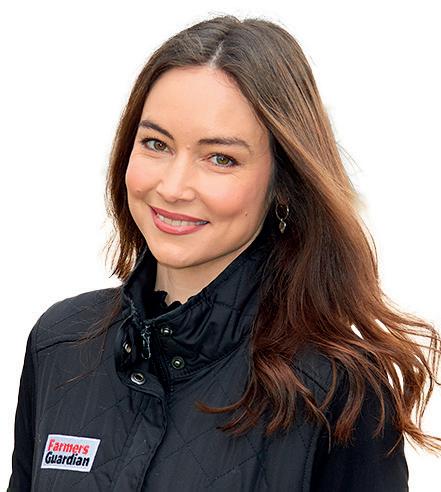
l Communication and understanding vital
REGAINING farmer confidence in Red Tractor was a challenge interim chair Alistair Mackintosh was keen to ‘step up’ to, with him acknowledging it had been lost over the past few months.
And the decision to take on the job was a ‘no-brainer’ for Mr Mackintosh, a beef and sheep farmer in Muncaster, Cumbria, who has been in the role of vice-chair since 2021.
Mr Mackintosh, who has previously held roles including NFU livestock board chair and vice-chair of CopaCogeca, said communication and ensuring that farmers understood the importance of Red Tractor for their business was critical to rebuilding confidence, alongside improving the audit system and working closely with technology.
He said: “If you said to a farmer, or anybody, ‘how do you feel about being inspected?’, everybody is going to turn around and say they do not want that.
“But if we say, ‘how do you feel about being audited so that you can access all these different markets and actually, potentially add value to your

business?’, that might be a different way of putting things.”
After months of tumult, the beef and lamb sector requested a vote of no confidence in April.
This was delayed to allow Red Tractor to implement changes. Mr Mackintosh said ‘we are listening to farmers’ as the body sought to reduce bureaucracy, highlighting 100 audit points had been removed since October.
He said he was confident there would not be a vote of no confidence, and ‘any disquiet will be put to rest’.
“Everybody will realise that, actually, the senior leadership team is a fantastic group of people, who are highly professional and dedicated to Red Tractor,” he said.
He added he found it ‘quite frustrating’ some farmers did not understand that and it was a challenge he wanted to address as chair. In recent months, Red Tractor chief executive Jim Moseley has faced criticism, with calls from some in the industry for a complete change at the top.
Mr Mackintosh added such comments were unfair and it was a ‘collective responsibility’.
“They [senior leadership team] are not inventing off-the-wall standards just to annoy farmers, there is a whole governance structure in there where farmers are involved, retailers, processors, vets, everybody is involved in this.”
He added they delivered what the boards told them, not the other way around.
“Although some farmers feel it is. I promise you it is not,” he said.
With some farmers frustrated at not receiving a premium or adding value to their farm business as part of reaching Red Tractor standards, Mr Mackintosh said, on his farm, he found he received the cost back ‘10 times’ –referring to the money he saved through his Red Tractor animal health and welfare plans.
With the assurance board losing sheep farmer members, Mr Mackintosh said it stemmed from people ‘not understanding what Red Tractor can
THE Agricultural Industries Confederation (AIC) said Red Tractor’s development of a new entry level feed standard (ELFS) must ‘not compromise essential food and feed safety requirements’, adding it needed to provide the supply chain with confidence in what is being proposed.
Red Tractor Combinable Crops and Sugar Beet chair, Kit Papworth, said the new standard would aim to be in line with the legal minimum and
provide more choice for farmers who only want to sell into the feed grain market.
A final decision will not be made by the sector board until further discussions with the supply chain.
Mr Papworth acknowledged its feed assurance scheme partners at AIC and merchant members needed to consider the proposals carefully.
A spokesperson for AIC said it welcomed Red Tractor’s consultative approach and that over the past year
it has worked with the body on the development of ELFS.
A spokesperson said: “AIC is clear that Red Tractor’s existing Combinable Crops Standards satisfy market demands and are a cornerstone of the UK’s world-leading food and feed safety record. Food and feed safety is paramount and AIC remains open to supporting any scheme which upholds core standards as defined by the supply chain and UK legislation.”
By Jane Thynne
FARMING and rural groups outlined what they believe should be priorities for the new Government, following this week’s General Election.
Voters were getting ready to head to the polls as Farmers Guardian went to press, with Labour still holding a significant lead.
The National Sheep Association said now was the perfect time for UK political leaders to commit to a policy that ‘protects and enhances the UK’s food systems’.
The body has published its eight priorities, which include a call for food production to be recognised as a public good and for a commitment to an increased agricultural budget across the nation to be made.
The NFU said during the campaign period it had contacted 904 candidates and met with 378.
Tom Bradshaw, NFU president, said incoming Ministers had choices to make about ‘the priorities they value’.
“When it comes to food, do we want to safeguard our world-leading standards of environmentally-friendly, high-welfare British food, or ship our environmental footprint abroad along with our conscience?”
Mr Bradshaw also urged the new Government to think about rural areas and the importance farming plays in their survival.
“The small villages, market towns and farms up and down the
ARLA MELTON MOWBRAY
SITE SET TO CLOSE
■ ARLA has ceased production at one of its sites in Leicestershire which has been making dairy products such as stilton cheese for more than 200 years.
The farmer-led creamery confirmed it would be stopping production at its Tuxford and Tebbutt Creamery site in Melton Mowbray on June 25, with around 60 jobs at risk.
In January, Arla said it was conducting a ‘strategic operational review’ of the site in order to return a ‘fair price’ to its UK farmers, following a ‘decline’ in the cheese market.
However Fran Ball, vice-president of production at Arla Foods, announced a proposal to cease production at the Melton Mowbray creamery.
“We have spoken to colleagues who are affected by these proposals and we are now entering in to a period of consultation with those colleagues,” Ms Ball added.


country are not just places of work, they are areas rich in tradition with generations working to shape, protect and enhance the land they farm,” he said.
“Without clear recognition of the importance of farming, these areas risk becoming depopulated as people move away from a countryside where they cannot
“Our priority right now is to support our colleagues impacted during this challenging period.”
BFA HOST JIM SMITH LANDS
BBC COMEDY SHOW
■ PERTHSHIRE farmer and comedian
Jim Smith, who was last year’s British Farming Awards host, has landed a show about life as a modern farmer.
The beef and sheep farmer will be sharing his unique take on farming in a five-part Radio 4 series entitled, Me and the Farmer. Each episode will feature anecdotes about life on his family farm, which Mr Smith has promised will be ‘an honest, behind the scenes look at what it takes to be a modern farmer’ and includes topics such as growing up on a farm, attending agricultural college and being part of the Young Farmers movement – where he got the bug for comedy after writing sketches for the group’s panto.
make a living; effectively eroding a way of life that is integral to our national character.”
For chief executive of the Rural Services Network Kerry Booth, ‘fair funding’ for non-urban areas must be top of the agenda if the new Government is to ‘harness the vast potential’ of rural areas. The organisation has laid out nine key asks, covering servi-
■ NATURAL England has confirmed it is to go before a tribunal after a farmer challenged constraints placed on his farm by the agency.
A hearing will take place later this year after Cornwall-based farmer Sam Nankervis challenged constraints placed on his Penwith Moor farm following the area’s designation as a Site of Special Scientific Interest (SSSI) in June 2023.
Mr Nankervis has claimed requiring consents for actions such as wall and path repairs were too restrictive.
A spokesperson for Natural England said: “We can confirm that there is a hearing scheduled for November 12. The hearing will be overseen by an inspector from the Planning Inspectorate to determine if Mr Nankervis’ appeal against Natural England’s consent to carry out various requested activities on part of the
ces including connectivity, transport, health and housing development. Ms Booth said: “By focusing on fair funding for rural councils... the Government can foster thriving rural communities that contribute significantly to the nation’s prosperity. Addressing these key areas will enable rural areas to not only survive but thrive, benefiting the entire nation.”
These activities are
limited to a maximum 10-year period. However, Mr Nankervis is appealing to have them granted in perpetuity.”
■ ALDI is set to introduce new stocking density requirements for its fresh chicken suppliers, in a move which it said will further improve the quality of life for livestock.
The transition to the higher welfare standard, which will be complete by the end of October 2024, means that Aldi fresh chicken will have 20% more space than the industry standard.
The supermarket said it will give each animal more space to engage in natural behaviours and will ensure the birds continue to have increased access to environmental enrichment such as straw bales, perches, pecking objects and natural light.
By Jane Thynne and Chris Brayford
ONE-in-three farmers described their on-farm debt as ‘high or very high’, according to a new survey.
More than two-thirds also said they have experienced rising costs over the past two years in the study
which was carried out by Investec Wealth and Investment (UK).
Of those people who reported rises, the increase was said to be around 12.92% over the past two years.
However, more than a quarter (27%) said inputs had gone up by more than 15% in this time frame.
Scott Jones, divisional director for Southern Offices at Investec Wealth and Investment (UK), said the impact of rising costs was just one of
NEW entrants and those looking to expand their business within the first 10 years of entering have been urged to apply for a dairy mentoring scheme.
Let’s Farm Foundation, formerly known as ‘Dairy Futures’, offers mentoring to new entrants, via its trustees of successful dairy farmers across different farming systems.
As part of the mentoring, it supports farmers with writing up business plans, budgets, cashflows and tenancy applications.
George Brown won the coveted National Milk Records and Royal Association of British Dairy Farmers Gold Cup award in 2023. He runs a dairy
herd of 600 cross-bred cows near Ringwood, in Hampshire, as part of a contract farming partnership.
Mr Brown applied for mentoring support within the scheme which he said was a ‘no brainer’.
He said: “It was very helpful to have another outside pair of eyes that did not have an agenda, that was not trying to sell me something,” he said.
He added it was ‘really valuable’ in the early stages of business when cash was tight.
Sophie Gregory, an organic dairy farmer from Devon and one of the trustees, has also previously benefited from the mentoring support when her business partner offered her a chance to buy him out.

several challenging external factors facing farmers at the moment.
However, the survey also revealed many farmers were taking advantage of Government grants and subsidies to relieve pressure on their bottom line.
More than 28% of respondents believed themselves to be ‘excellent’ at making the most of incentive schemes, although 97% said they get some form of help when applying.
The most popular option was to employ a consultant or adviser (71%), but more than half (53%) said they got help from a family member or employee. A quarter (25%) opted to speak to a community or industry organisation.
Mr Jones said: “Our survey shows a large majority are making the most of the Government subsidies and grants that are available to
them. It is also very positive to see farmers getting the help they might need to access these, in order to benefit from the support they provide.” It comes as more farms continue to struggle with high costs.
Matthew Cawston, of Hill House Farm, Woodton, near Bungay, which this week sold its milking herd at auction, blamed the ‘tough economic climate’ and labour shortages.
Despite stating an intention to keep some of its youngstock and heifers, Mr Cawston said it was going to be ‘devastating’ to sell the businesses’ milking herd.
“We are struggling to find a replacement for our herdsman,” he said, highlighting they were looking for two people and could not even find one.
“It is a very difficult decision, but you speak to anyone out there looking for staff, it is not just this industry but across any industry.”
It was very helpful to have another outside pair of eyes that did not have an agenda
GEORGE BROWN
“The foundation came in at the time to give us some mentoring, look at the proposal he had given us, and actually without their help we would not have been able to get the agreement that we did in the end,” she added.
Ms Gregory was also keen to highlight the unsecured loans that were available to farmers.
MORE INFORMATION
To find out more information on how to apply, visit letsfarmfoundation.org
FARMING charity RABI’s ‘Return to School’ grant will be available to farming families for the third consecutive year from July 8.
The campaign has provided around £2 million of financial support to farming families across England, Wales and Northern Ireland since its launch in 2022.
This year, eligible parents and guardians can apply for a fixed sum of £200 per child for up to six schoolaged children (four-16 years). Applications are open to both working and non-working farming families.
RABI director of services, Caron
Whaley, said: “Our Return to School grant is committed to ensuring that thousands of schoolchildren across our farming community are equipped and ready to thrive when they return to their classrooms in September.” As well as alleviating some of the pressure of back-to-school costs, the campaign is an important gateway to providing more members of the farming community with RABI’s practical, financial and emotional services.
INFORMATION For more details, visit rabi.org.uk/ returntoschool




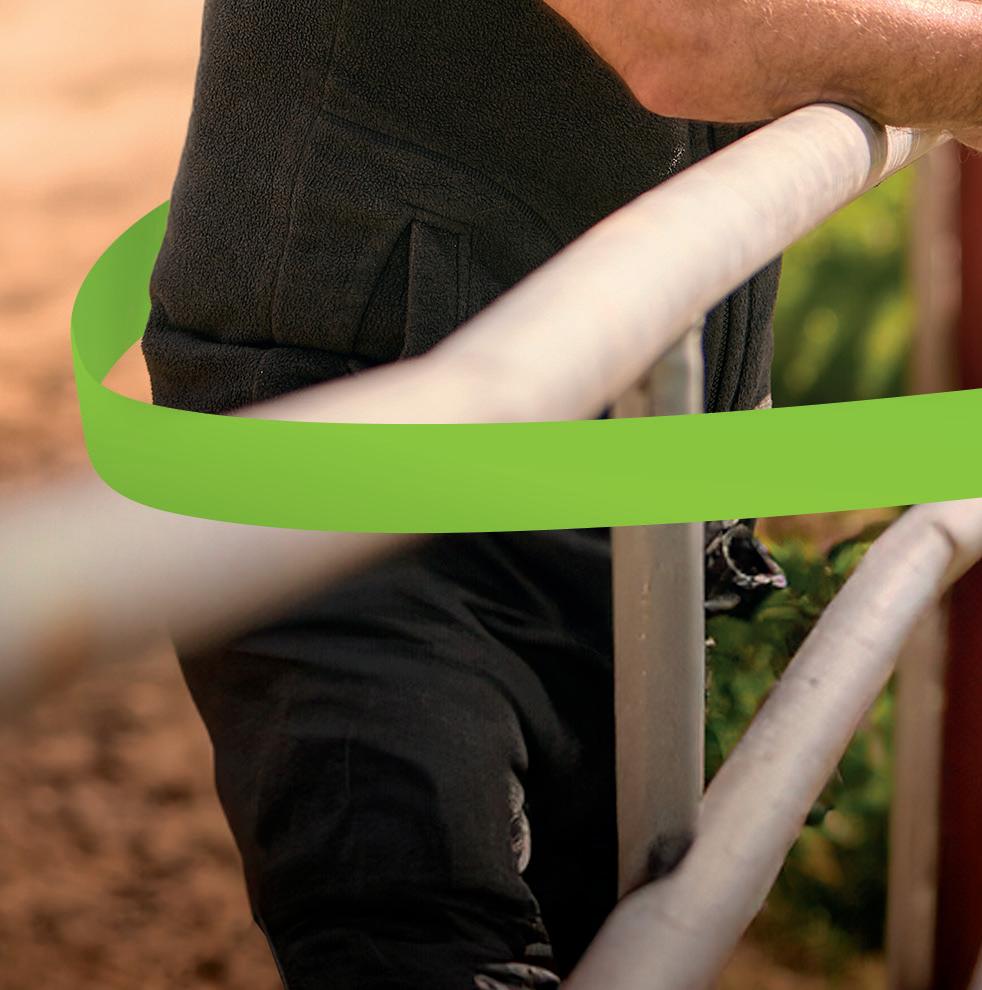










By Alex Black
CHANGES to the calf scheme threaten the ‘very fabric’ of Scotland’s rural economy, with smaller farmers, smallholders and crofters to be hardest hit.
That was the message from Institute of Auctioneers and Appraisers in Scotland (IAAS) executive director Neil Wilson, adding three months had passed since the Scottish Government announced additional conditions to the Scottish Suckler Beef Support Scheme, but the argument over its impact rumbled on.
Mr Wilson said: “Recently, IAAS and the industry were presented with a report from SRUC, commissioned by the Scottish Government, which tried to show the conditionality would have only a minor impact on funds received by median and mean farm types. In short, it was a flimsy attempt to justify an ill-conceived policy.”
He added changing access to funds would impact every suckler beef farm in Scotland, but smaller farms were ‘likely to bear the brunt’.
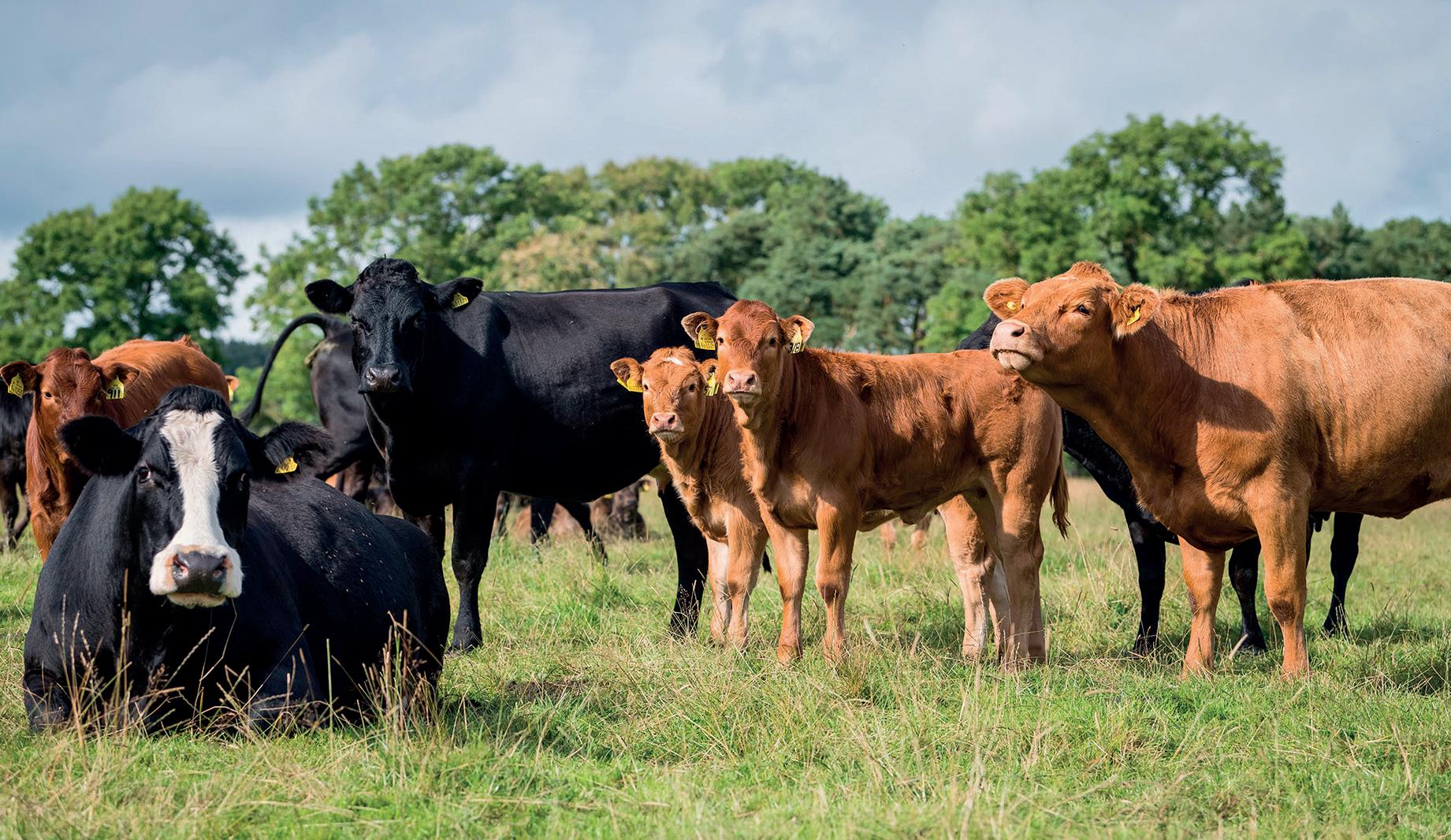

“Smallholders, crofters and parttime farmers are vital to our beef sector and deserve proper representation and consideration. Unfortunately, this has been neglected,” he said. He added feedback at marts had been ‘overwhelmingly negative’ and better
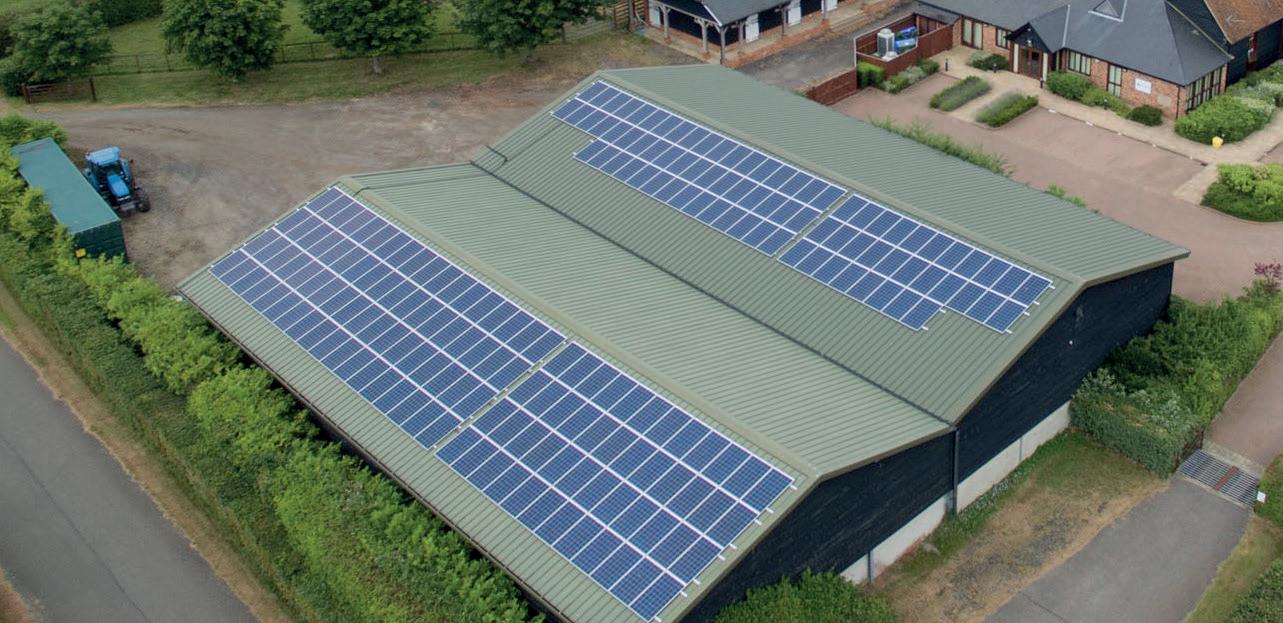
development by the Government and organisations could have avoided this.
“Many beef farmers have anxiety about the scheme, particularly smaller enterprises that cannot justify purchasing a bull – whether it be trying to hire a bull and getting the timing right, only having one bull and the risk that he fails to work effectively,” he said.
“Even with artificial insemination, there are reports of as low as 50% success rate. These are real concerns. Any delay can disrupt the calving interval and jeopardise eligibility for calf scheme money.”
He added risks including disease and weather could hinder the breeding season and affect the calf payment.
“Unfortunately, it appears the Scottish Government has no appetite for a sensible and reasonable force majeure article. Neither do they seem to have the will to support all farmers, regardless of scale. On one hand, they condition a scheme that will hinder smaller farmers, while equally chasing land reform that will hurt larger farmers.”
He added IAAS would maintain its opposition to the scheme.
“The unpragmatic changes to the calf scheme threaten the very fabric of our rural economy by undermining the confidence and viability of our beef farmers,” said Mr Wilson.
THE Scottish Government has opened consultations which gives the public a chance to help shape the future of crofting.
People across Scotland have been invited to have a say on how crofting is reformed through a programme of meetings which will take place from July 3 to August 15.
With the review ending on September 2, Scottish Agriculture Minister Jim Fairlie said it was important for the public to have their say on croft farming reform.

“Crofting has a special place in the cultural heritage of Scotland, and we want it to play its part in our future too,” Mr Fairlie said, adding the Government wanted to ensure legislation supported crofting while allowing for modernisation, innovation, diversification and adaptation.
He said crofting would remain at the heart of agriculture and food production, but was playing an increasing
role in tourism, renewable energy generation, forestry, peatland restoration, beekeeping and small-scale horticulture production.
“The consultation proposals range from relatively small technical changes to significant innovations and I would encourage everyone with an interest to respond to the consultation or come to one of the meetings if they are able.”
Chair of NFU Scotland’s Crofting, Highlands and Islands committee, Arthur Macdonald, encouraged crofters to look at the proposals and think about how changes could make it easier to be an active crofter.
“Amending crofting legislation will help, but we know that the agencies who are responsible for delivering it need to be able to do so, and resources are an issue that we will be considering as part of our response.”
By Jane Thynne
THE UK has seen a significant drop in horticulture production, as new figures from Defra showed decline in both fruit and vegetable yields.
Although the value of ‘home-produced’ fruit increased by 3.1% and vegetables saw a 10% uplift, volumes and planted areas both declined during 2023, with concerns mounting for 2024 due to challenging growing conditions.
The annual data showed vegetable yields decreased by a total of 4.9% to 2.2 million tonnes, while the production volumes of fruit decreased by 12% to 585,000t. The growing area for vegetables also fell by 6.5% to 101,000 hectares.
According to Defra, the figures reflected 2023’s turbulent weather, which saw extensive periods of wet weather in the spring, followed by high temperatures and a prolonged dry spell in early summer. This had a significant impact on brassicas, with cauliflower yields falling by 9.2%.
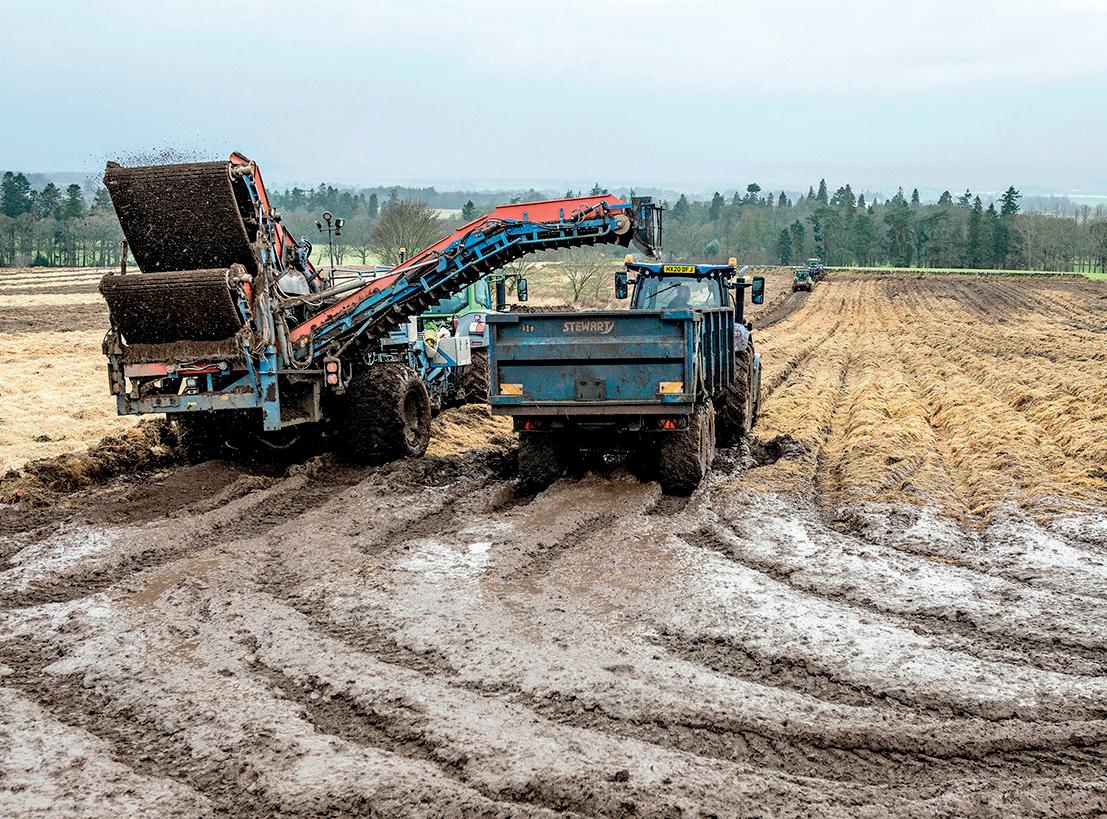

Carrots too suffered as yields decreased by 7.2% to 65t/ha. Although, the value of the carrot crop increased by 21% to £211m.
Jack Ward, chief executive of the British Growers Association, said:
“Basically there are so many challenges for the sector – these figures are I suspect predominantly weatherrelated as the difficulties of the previous season and the effects of climate change have impacted production.
“But there are also technical challenges, and a lack of investment, which has resulted in an exodus from the industry.”
Production of protected vegetables, grown in glasshouses or polythene tunnels also fell by 1.9% to 235,000t, representing the eighth year in a row in which protected vegetable production has fallen.
Lack of investment has resulted in an exodus from the industry
JACK WARD
In terms of fruit, the value of orchard fruit decreased by 24% to £293m, although soft fruit (excluding glasshouse) increased by 21% to £696m. The value of dessert apples decreased by £38m to £152m in 2023, a 20% increase on 2022. Overall supply of fruit fell by 5.3% to 3.7mt in 2023.
THE Cabinet Secretary for Rural Affairs Huw Irranca-Davies has been criticised for a ‘failure to stand up’ for Wales’ interest by not backing calls for the Senedd to have a veto on trade deals.
Plaid Cymru Shadow Minister for Rural Affairs Llyr Gruffydd said Brexit and trade deals were undermining Welsh food and drink producers. He asked: “Do you agree with
Plaid Cymru’s calls for Wales to have a veto on future trade deals if we believe that they are detrimental to the food and drink sector here in Wales?
“And would you agree with Plaid Cymru that we would be better off as part of a single market and customs union?”
In response, Mr Irranca-Davies said: “On the issue of the voice for
Wales in future trade deals, we have had no voice, Llyr. I am not saying veto, I am saying a voice.”
After the debate, Mr Gruffydd said the Minister’s refusal to back a veto was ‘disappointing to say the least’.
“This is a complete failure to stand up for Wales’ interests and is an open invitation for Westminster
Grass mineral analysis can be a useful tool to check nutrient levels, both macro and micro-nutrients levels in grass swards. Silage samples are regularly tested for minerals, but it’s usually with a focus on animal nutrition rather than crop nutrition. So, there is certainly more scope on both grass for grazing and silage to utilise mineral analysis to improve yields and nutrient use efficiency.
A farmer two years ago asked me to have a look at their 1st cut silage mineral analysis report which highlighted a couple of potential problems. Because it was a composite sample from a number of different fields, it warranted a closer look the following spring, so three silage fields were sampled in May, 10 days before harvest.
to trample all over our food and drink sector,” said Mr Gruffydd. He added Westminster cannot be trusted to do what is right for Wales.
“Having a voice is not enough because the Westminster parties have shown time and time again that they are happy to ignore our needs and priorities,” he said, adding a veto would mean Wales could not be ignored.

The three fields had received the same nutrients, a combination of slurry and YaraMila EXTRAGRASS (27-5-5+6%SO3) in the spring. Nitrogen, phosphate, potash, sulphur, calcium and magnesium were within the optimum range for two of the fields, while the report on the third field indicated that phosphate, potash, calcium and magnesium were low or very low.
These three fields had the same history of manure applications, and the most recent soil analysis indicated good levels of soil phosphate and potash. The difference was that the field which had the low grass nutrient levels also had a low soil pH (5.4). This makes sense, as soil pH affects nutrient availability. This again highlights the benefit of analysis and in particular acting on soil test results and correcting low soil pH.
URBAN food security under threat?
A third of our food relies on bees. Bees need flowers.
Local Government has grassed over flowerbeds, which once provided food for bees.
And then we have concrete gardens with not a flower in sight. Humans are strange beings, we cannot live without nature.
P.C. Williams, Llanfach.
DURING the 1980s and 1990s farmers and other workers were poi-
WE asked whether the Danish Government is right to put an emissions tax on farmers (see p21 for full story). Here are some of the social media responses.
■ “No, because it will be cheaper to bring food from Brazil or
soned by sheep dip. Documents have been obtained that reveal that it was not necessary to dip sheep to get poisoned because the dip products were formulated to make the fleeces remain toxic for months after dipping. That seems to have been a requirement for licensing as ‘scab-approved’.
This extended toxicity was achieved by secretly adding to the dip products a mixture of toxic chemicals that were supplied by a very well connected firm which no
Australia and that doesn’t make any sense, but the Governments that don’t know nothing about anything only try to extort money out of hard-working people.”
JAMES MCMURRAY
■ “No, it will just move production
longer exists, but morphed into a well-known firm of which we probably have all been customers.
In 1990 the Government identified the reason why so many people attributed their illness to sheep dip, but instead of ensuring the removal of the secretly added toxins, the Government allowed the products to be used meaning more people were affected for another two years.
The make-up of the extra mixture of toxins was not revealed, so we refer to the mixture of extra toxins as ‘CCX’.
to other places in the world.”
HENRIK STEEN PEDERSEN
■ “No, because grassland is great at soaking up carbon.”
BENJAMIN COOPER
■ “Definitely, especially on anything they import over here.”
ANDREW GORDON
The Government called it ‘phenols’, hiding the truth and the nature of the atrocity it had perpetrated. That deception would protect the suppliers of the toxins and the dip products, and the civil servants that had licensed the products, and would allow justice to be perverted.



Justice was perverted by the lawyers appointed by the Legal Aid Board to bring the claims of damaged individuals. Note that a Government agency, part of the Lord Chancellor’s department, appointed the lawyers that prepared the case against the Government. So the Government controlled both sides of the litigation in which it was a defendant. No wonder justice was perverted.
Late in the legal process, Stephen Irwin KC was appointed Counsel for the claimants, so if you want to know why justice was perverted you could ask him.
Many of the dip manufacturers swiftly sold out to purchasers that may not have known the history of what they were buying. Coopers had sold a scab-approved dip that was 42% CCX. Coopers was sold to Mallinckrodt, a US giant that thus became a defendant in the litigation.
Exposure to the mix of chemicals in sheep dip altered behaviour and several people found themselves being prosecuted for unusual conduct caused by chemicals, the presence of which was kept secret. One such case was Robert Billings, formerly of Rout’s Farm, West Sussex.
Brown brothers bringing in the hay at Home Farm, Woodseaves, Staffordshire. Left to right:
Arthur, Reg, their father Harold, Gordon and Harold
If you have a classic picture you would like to share, please email it to marcello.garbagnoli@agriconnect.com ■ IF
Sent in by Geoff Brown.

would like to send us a letter for consideration, email fgeditorial@agriconnect.com
protecting and respecting your privacy. We are registered under company number 07931451 and have our registered office at Unit 4, Caxton Road, Preston, Lancashire, PR2 9NZ. For the purposes of this policy, we are the data controller of personal data provided to us. We are a UK company specialising in providing information services including news, analysis, data, pricing, insight and market intelligence to agribusiness professionals across the globe. This policy sets out how we do this and applies the use of your personal data that you disclose to us by entering into our competition to win £200 for the Stockjudging Competition or £20 Love2Shop vouchers for the weekly Crossword Competition, referred to throughout this statement as the “Competitions”. How we collect your information: We collect the personal data you have provided to us by filling in the form on our website www.fginsight.com OR printed form when entering the Competitions. If you have entered the Competitions via our site we may also collect some technical information about how you use our site, for example, the type of device you are using, your operating system, IP address, uniform resource locator (URL), clickstream and length of visit. How we use the information you provide: We will use your personal information: • to administer the Competitions, on the basis that the use of your personal data for this purpose will be necessary to enter you into the competitions and, if you are successful, contact you to notify you of your prize; and, • if you are new to Farmers Guardian and where you have agreed to this, to provide you with news and updates from time to time about our services; and, if at any point in the future you do not wish to receive any news and updates from us or from, you can unsubscribe from our marketing list at any time by following the steps below. To unsubscribe from any communications using the link on the email we send you or by emailing us at dataprotection@farmersguardian.com. We will not use your information for any purposes except those listed in this policy without letting you know and getting your permission, if necessary, first. Who do we share your information with? We will not disclose your information to any third parties without your consent, except where: • it is necessary to enable any of our staff, employees, agents, contractors, suppliers or commercial partners to provide a service to us or to perform a function on our behalf; • we have a legal obligation to disclose your information (for example, if a court orders us to); or • there is a sale or purchase of any business assets, or where Farmers Guardian or any of its group companies are being acquired by a third party. Where we use third parties as described above to process your personal information, we will ensure that they have adequate security measures in place to safeguard your personal information. For how long do we keep your personal information? We keep your personal information for 36 months for the purposes for which it was collected or for any period for which we are required to keep personal information to comply with our legal and regulatory requirements, or until you ask us to delete your personal information. Your rights: You have a number of rights in relation to your personal information. These include the right to: • find out how we process your
Another person of interest is Dr Keir Wilson, who was involved in the analysis that led to the alteration of the of sheep dip formulations.
There are parallels with what happened to the sub-postmasters, but the dip poisoning involved more people.
Evan Jones, Via email.
I WELCOME the new Red Tractor entry level grain standard as a useful contribution to the ongoing debate about the future of UK assurance. The standard will give growers more options if they only grow feed grains.
Such innovations serve to better reflect the diversity and flexibility of UK grain markets and should be encouraged. I am sure the Independent Commission on the future of assurance will look at this development closely, and the response to it from both growers and the supply chain will help shape its report.
Tom Clarke, AHDB Cereals and Oilseeds sector chair.
Katie Jones Head of Livestock – katie.jones@agriconnect.com
THERE has been a recent flurry of milk price rises from processors, which is particularly welcome news given the challenges caused by this year’s incredibly difficult spring conditions, which is now being followed by a summer that so far seems pretty determined to disappoint.
A delay in spring turnout for many, a very tricky start to the 2024 grass harvest season and mixed reports about maize crop prospects will mean dairy farmers will be looking ahead to the latter part of the year with some trepidation.
These on-farm challenges also meant the socalled spring flush of milk was much more muted this year, which has had an obvious implication on production and for the first time in quite a while, there could be a sense of nervousness coming from milk buyers who now need to shore up their supply, with reports suggesting that production globally is some way short of where it has been.
But as ever, the big question will be what happens next? It is vital as we move into the second part
‘I
Home life: At home, we keep a herd of 250 pedigree Holstein cows and an autumn block-calving herd along with their replacements which we rear beef through to stores.
On the farm there’s myself, my brother Dylan, my father and my mother who works in accounting at a local milk bottling factory, Cwm Gwendraeth Valley Milk.
Agriculture and farming is at the heart of everything I do, from my daily farming routine to my parttime job lecturing, or to my social circles within the local community and the Young Farmers’ Clubs (YFC). Passion: Farming truly runs in the blood in my family.
I am extremely lucky that my parents have worked tirelessly over the years to grow the business so that both myself and my brother can sustain a living from the farm. They have overcome many

of the year, and a potentially tricky winter housed period with big question marks over forage availability and its quality, that dairy farmers continue to see this upwards trajectory in milk prices.
But as ever, future price movements will largely be dictated by supply and demand, which as reported is finely balanced at the moment. n For more on dairy price rises, see p16
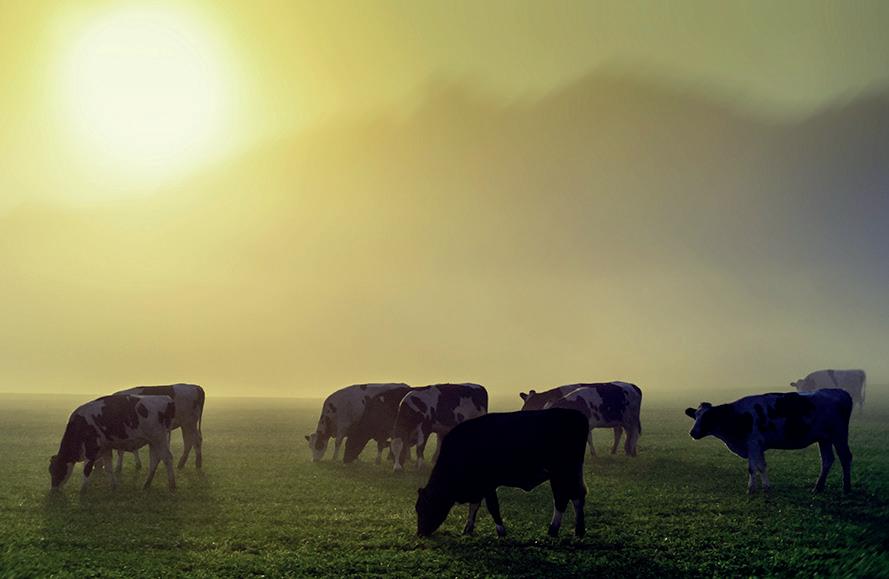
challenges since their early days milking 40 cows on a 60-acre tenanted farm 30 years ago, and we have many challenges ahead of us again today.
Challenges: For instance, we face challenges with the ongoing bovine TB catastrophe here in Wales to the new Nitrate Vulnerable Zone regulations and the potentially disastrous Sustainable Farming Scheme (SFS).
This is without the uncertainty of a new Government in Westminster.
Welsh Labour does not exactly have a track record of supporting rural Wales and Sir Keir Starmer’s manifesto certainly has not given me any confidence to vote for them in Westminster, either. However, on a slightly more positive note, the new Welsh Rural Affairs Secretary Huw IrrancaDavies does seem to listen

and engage with Welsh farmers, something which his predecessor failed to do.
But as a young farmer, I strongly believe that we are an extremely resilient bunch and we adapt, develop and overcome any challenges that may come our way.
And one thing the rural and farming community does better than anything is unite and support each other in times of hardship.
This was evident in Wales earlier this year when hundreds of farmers
gathered on the steps of the Senedd to display our anger and frustration at the proposed SFS by the Welsh Government. Another aspect of the rural community which I am immensely proud to be a part of is the YFC scene.
Being a member of St Ishmaels YFC, chair for our county’s Agri Forum and being a male ambassador for Carmarthenshire YFC this year is truly an honour. It is a movement that brings our rural communities together and offers a network of support, and I will always be proud to say that I am a Young Farmer.
MORE INFORMATION
If you would like to be featured, email chris.brayford@agriconnect.com
SAINSBURY’S has invested in new artificial intelligence technology which it says could ‘revolutionise’ the approach to cattle care.
In partnership with Vet Vision AI, a spinout company from the University of Nottingham, Sainsbury’s is trialling new technology which has been designed to spot when cows are happy and healthy, and why. The cows are monitored through low cost and portable cameras which can be used by vets on multiple farms.
The AI recognises behaviour patterns, turning footage into real-time data and will also offer suggestions on ways to improve animals’ lifestyles.
Currently on 30 of Sainsbury’s Dairy Development Group farms, the aim was to rollout the technology further next year.
Dr Matt Turner, vet and agriculture manager at Sainsbury’s, said the new technology would help both farmer and animal.
“Our dairy farmers who are using the technology are already seeing real benefits and we look forward to expanding it to our wider network of Dairy Development Group farms soon,” he said.
Dave Bacon, dairy farmer at Gleadthorpe Farm, said: “I know that happy, comfortable cows produce more milk, but accurately measuring and knowing how to improve cow comfort can be challenging.
“Using Vet Vision AI, we were able to measure how comfort levels improved after we upgraded our housing and put new cow mattresses in. Knowing that my cows are more comfortable means I can feel confident the investment was worth it.”

A lack of clarity in the organic farming community is causing setbacks.


● Frustration evident at organic conference
By Jane Thynne
FRUSTRATION at a lack of industry cohesion, public awareness and Government support, coupled with anger at the growing number of regenerative farms, were the key messages which dominated this week’s National Organic Conference.
Following presentations from organic specialists, including regen agriculture consultant Neils Corfield; Oliver Rubenstein, Trinity AgTech customer success manager and Henny Lowth, AHDB Cereals and Oilseeds knowledge and transfer manager, two testy sessions on marketing and sector resilience followed.
This prompted one delegate to ask why he had paid more than £72 to attend the event which was held

on the Kingsclere Estate, in Hampshire, which is run by Tim May.
Much of the discussion centred on ‘the threat of regeneration’ and how organic farmers can compete alongside a burgeoning regen sector which delegates claimed had an easier route to market via retailers’ attempts at ‘greenwashing’.
Adrian Carne, Yeo Valley director and chair of the recently formed UK Organic – a Community Interest Company (CIC) which aims to serve as the sector’s marketing agency to ‘drive a unified message and create renewed consumer interest’ – also revealed that after day one of the event, he was no longer sure what organic farmers wanted.
He said: “I have been in the sector since 2001 and I am here to help, but it would be really helpful if you could let me know what you wanted, as, to be honest, I am really confused as to where you want your sector, or your herd or your community to go.
He added: “Until you guys work that out, I do not think I can help you.”
Mr Carne said the challenges the sector was facing were multiple, including a lack of support from Defra which had contributed to the problems by ‘paying farmers not to produce food’. He also questioned how AHDB was spending organic farmers’ levy contributions, which he claimed amounted to around £2 million.
Mr Carne added multiple certifiers and more than 35 organic organisations all competing for recognition only compounded the lack of clarity which surrounds organic’s identity.
“Sustainable farming is becoming a crowded space and farming is getting better – it is modernising,” he said.
“You have got Wildfarmed, Pasture for Life and regen farmers all nibbling away at your space. Your world is becoming more crowded and the messaging is just getting more confusing.”
Mr Carne acknowledged that it was time the sector made a change, but warned change could not be achieved until the sector ‘got real’ about what it was and what it wanted to achieve.
WELSH farmers have lit bonfires on farms to highlight the ‘lack’ of discussion on the role of food security and agriculture at the General Election.
Liam Davies-Jones, of Shadog Farm in Carmarthenshire, said farmers across Wales had lit beacons on Monday night (July 1) to remind politicians that the fire still burns brightly within those working in the industry, as well as their frustration regarding the role of agriculture in the election.
Earlier this year, 3,000 farmers protested outside the Senedd to voice concern over farm subsidy plans, including removal of agricultural land for wildlife and tree planting under the Sustainable Farming Scheme.
Mr Davies-Jones said: “Farmers in Wales made a statement on Monday that we still have fire in our souls. We will fight for our right to a future where we can produce food and afford food security for everyone. It is a worrying time, but our fight is not over yet.”
Edited by Alex Black – 07880 490 486 – alex.black@agriconnect.com
By Jane Thynne
THE fire which fuelled farm machinery sales since the Covid-19 pandemic has now cooled, leaving buyers very much in control, according to sales experts.
Mark Barrack, head of specialist auctions at TSA Auctions near Aberdeen, said that while trade had steadied, the move to online sales meant traders were now operating in ‘a global marketplace’, with deals being done between farmers across the UK, the Republic of Ireland, Europe and beyond.
He said: “Since Covid-19 we have expanded from eight sales a year to 11. In the past, we would previously have seen seasonal fluctuations, with boosts in May and November, but we are now solely online and there seems to be fewer peaks and troughs.”
While Mr Barrack said ‘sales are strong throughout’, prices remained in line with supply, with good numbers achieved for ‘quality equipment’.
He added: “The second-hand market rose dramatically in 2021 and that has definitely cooled, but I would not say it has fallen – more [that it has] levelled off. It would have been impossible to continue at that level.”
Levelling off
Richard Tasker, a partner at Stephensons Rural specialising in livestock and machinery sales in York, said demand for both used and new farm machinery had steadied owing to a levelling off of the market place.
“Covid-19 and the situation in Ukraine put supply and demand out of sync,” said Mr Tasker.
“There were component shortages and waiting lists for new and secondhand machines stretching over 15


months. Inevitably, that could not last forever and the supply chain has caught up.”
Mr Tasker said the relative slowdown was a result of a number of factors including bad weather; the increase in Sustainable Farming Incentive and stewardship options, which had seen more land being taken out of production; high input costs; and a rise in interest rates.
Last November, industry figures from the Agricultural Engineers Association showed that 10,709 UK tractors were registered during the 10 months of 2023 – a rise of 5% on last year’s figures. More than 1,000 were registered during October alone – a 6% rise on October 2022 and the highest recorded in October since 2016.
But Mr Tasker said it was currently ‘very much a buyers’ market’.
FARMERS and growers across the UK are being urged to share their stories with Just Farmers, a company enabling farmers to use their voice for positive change in UK agriculture via the media.
The company gives farmers and growers confidence to tell their stories with pride, connecting them with the media and working to build a more open and constructive relationship between farmers and consumers.
Successful applicants will attend two-day workshops – one in the city, and one in the countryside – with 12 spaces available per workshop, representing every agricultural sector.
These fully funded media education
workshops are aimed at boosting the confidence and communication skills of farmers with stories to tell, as well as improving understanding of how the media works.
Emily Davies, managing director of Just Farmers, said: “Being a part of Just Farmers gives you the chance to meet other farmers and growers that you would never normally meet.
“Our groups build strong bonds of friendship and support each other through the process, share their worries and learn from one another.”
MORE INFORMATION
For more information on the programme, visit justfarmers.org


November figures showed that 10,709 UK tractors were registered during the 10 months of 2023.
“We are seeing a lot of overseas trade, and good-quality equipment is certainly holding its price. But there are certainly fewer enquiries and

The second-hand market rose dramatically in 2021 and that has definitely cooled MARK BARRACK
margins are tighter. Trade is good, but the fire that was raging around machinery sales two years ago has gone out,” he added.





By Alex Black
DAIRIES have announced milk price increases for July and August with the ‘tide progressively turning towards higher prices’.
Arla has announced the on-account price for conventional milk will increase by 0.81ppl for July 2024. The UK organic milk price will increase by 1.70ppl.
This means the UK manufacturing price for conventional milk will increase to 41.70ppl and organic milk to 52.57ppl. Muller will hold its August price at 39ppl, including the Muller Advantage premium.
Saputo announced an increase of 0.75ppl for August, with the dairy saying this reflected the improving signs starting to be seen in the market place. This will take the negotiated base price for all core volume litres to 40.75ppl from August 1. This was


agreed by Davidstow Creamery Direct. First Milk has announced its member milk price will increase by 0.7ppl to 41ppl for its manufacturing standard litre, including the member premium, from August 1.
Susie Stannard, AHDB lead analyst for dairy, said after uncertainty, dairy markets were ‘entering an exciting period with the tide progressively turning towards higher prices’.
She highlighted that the wet weather had damaged prospects for turnout, grass growth and groundwork, meaning the milk season got off to a slow start with a muted spring flush.
“Global production has also been on a downturn and dropped by 0.5% in April,” she said.
“Shortages of milk have sparked fears for buyers, who have finally stopped sitting on their hands and started buying, particularly fats.
“Latest commodity prices indicate butter is up a significant £580/tonne, bulk cream £190/t, mild Cheddar £130/t, with SMP lagging at only £50/t growth.






The price paid by many dairies for milk is to rise for July and August.
“This has boosted both actual milk price equivalent [AMPE] by 3.5ppl and milk for cheese value equivalent by 1.8ppl in a single month. Not quite the heady 5.6ppl growth in AMPE we saw in the volatile days of March 2022, but still impressive.”
She said supply was tightening, but demand would also disappoint.
Chinese demand was down due to increased domestic production, displacing New Zealand product.
Ms Stannard also highlighted UK retail demand was healthy for both cheese and yoghurt, although butter was back due to the cost of living.
“Supply wise, our latest milk production forecast is back by 1% for the 2024/25 milk year which should offer

Shortages of milk have sparked fears for buyers, who have finally stopped sitting on their hands
SUSIE STANNARD
further support to farmgate prices,” she said, adding supply and demand were ‘finely balanced’.












DEMAND is ‘booming’ for high protein dairy products, with product sales now accounting for more than 25% of Graham’s Family Dairy sales.








Last year, it said, sales of protein and Skyr products overtook sales of conventional milk in major supermarkets.
At the Royal Highland Show, attendees were asked to help decide the next flavour of the company’s most popular product, Protein 25, with rhubarb the winner after more than 1,000 votes cast.
Robert Graham, managing director at Graham’s Family Dairy, said: “Al-
though I am slightly disappointed that haggis flavour did not quite make the cut, it is brilliant to see our customers join in to decide the next yoghurt flavour for our most popular protein product.
Vote
“For decades our family has been involved in the Royal Highland Show and it means a lot to us, so we wanted to have some fun and let show-goers vote on something more appetising and decide what the next flavour of our extremely popular protein yoghurt would be.”
By Jane Thynne
THE cost of improving climate resilience on UK dairy farms over the next 10 years could reach almost £4 billion, a new study has claimed.
According to the Cost of Climate Resilience report, the estimated average price of capital infrastructure investments, as well as additional land required to ensure environmental resilience, could add up to around £472,539 per farm.
The Kite Consulting findings are based on data taken from more than 850 UK dairy farms, comprising an average herd size of 236, housed for an average of 30 weeks.
They also revealed an additional 1,350 tonnes of silage storage per farm would be needed to increase capacity to one-and-a-half years, for cover in case of drought or late grazing turnouts.
Emma McAvoy, consultant at Kite Consulting, said: “This is a significant amount of investment and, at the moment with current breakeven milk prices and existing in-


Farmers might have to invest in new infrastructure and storage to cope with climate change.
vestment commitments, farmers would not be able to afford what is required as it added investment for what appears to be limited return.

“The investment needs to come from the industry – and be distributed throughout the supply chain.
“The good news is that suppliers
including Arla and Muller want to protect the milk supply and are investing in UK dairy as a whole.”
The report said a rising threat of drought during the summer months and heavy rainfall over the winter months meant it would be vital farmers had enough forage stocks to ensure milk production could be maintained.
Using AHDB’s forage calculator, a herd of 236 cows, with an average housing period of 30 weeks, requires storage for 2,725t of forage per year.
However, Kite said in order to prepare for the changing climate, it recommended farms have capacity to store an additional 50% of their yearly forage requirement.
Based on the average farm, this means there would be a requirement to have enough storage for 4,087t of forage.
For over 20 years British Wool has provided four stages of shearing certificates enabling UK shearers to safely and effectively shear British wool.

Spaces remain available on the following courses:
9th - 10th July – Holin Head Cottage, Cumbria
20th - 21st July – Sydney Wood Farm, Surrey
22nd - 23rd July – North Alfordon Farm, Devon
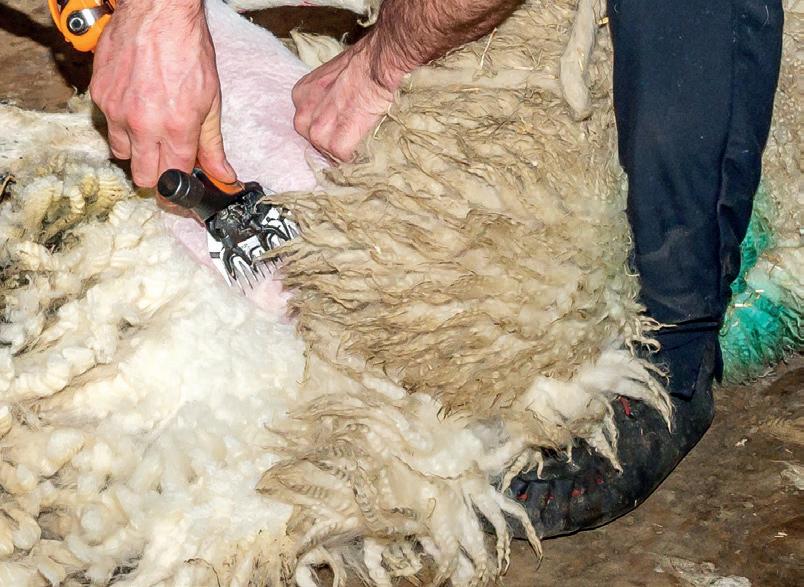
Providing an exclusive training offer to the young farmer movement to help encourage more young farmers into the field.
Silver to Gold in machine shearing are certified by Highfield – a global leader in land-based qualifications.

Working in partnership with key stakeholders – supporting the UK shearing sector.
To find out more call us on 01274 688666 or email shearing@britishwool.org.uk britishwool.org.uk
Together we’re growing something special.
Travelling overseas shearing or wool handling this year?
Why not book yourself on to a British Wool shearing or wool handling course specifically designed to support anyone wishing to travel overseas – details of courses with spaces available are below:
12th - 13th August – Briar Hill Farm, Chipping Campden
27th - 28th August – Home Farm, Sidmouth, Devon (Machine Shearing)
28th August – Home Farm, Sidmouth, Devon (Wool Handling)
23rd - 24th September – Spring Hill, Masham
Cost: Only £240 (incl VAT) over 120 courses held across the UK. To book your course please visit: britishwool.org.uk/book-online Silver Seal and above in machine shearing certified by Highfield.


By Teresa Rush
● Several factors to blame for situation was the result of a number of factors: the 2022 harvest was a bumper harvest for most, with high yields and prices and relatively low input costs for those who purchased early – resulting in high tax bills in January and July 2024.
ARABLE farming businesses are facing a severe cashflow crisis, fuelled by high tax bills and poor harvest expectations, an expert has warned.
Speaking at the Groundswell event last week, director of farms and estates at Land Family Business, Gary Markham, said the problem
THE UK must stop relying on imports and fix diets by doubling the land used to grow fruit and vegetables using nature-friendly farming, according to a new report from environment charities.
At Groundswell, Sustain, the Soil Association and The Wildlife Trusts called for farmers and growers to be given a fair deal and to be put in the driving seat to deliver sustainable food security and healthy diets.
They have called for Government intervention to back sustainable, British farmers and for land use in horticulture in England to double from 2% to 4% of farmland.
High input prices since harvest 2022 have had to be funded and average machinery values are currently running at close to £988 per hectare of wheat. Establishing harvest 2024 crops has been difficult, with areas redrilled or left fallow.
Policy calls in the report
■ Develop a crossdepartmental approach to horticultural policy
■ Support a just transition towards farming on peat-free soils
■ Decentralise production and scale up agroecological horticulture
■ Improve supply chain fairness
■ Harness public procurement
■ Boost urban and peri-urban horticulture
■ Invest in farmer-led research, collaboration and innovation
Source: Home-grown: A roadmap to resilient fruit and vegetable production in England
Mr Markham said: “Any arable farming business that has not established alternative income will find it difficult to fund their way through 2024.”
In comparison, benchmarking results for the Groundswell Benchmarking Group of regenerative farms showed a working capital requirement of £95/ tonne of wheat produced and machinery capital costs of £279/ha, with input costs £104/ha lower.
The Groundswell Group did not have such a large financial result in 2022, but have a more consistent longterm margin and the five-year average is similar to the conventional system.
“The game-changer is the new Sustainable Farming Incentive [SFI] for no-till farming at £73/ha for three years. This is the SOH1 SFI new for 2024,” added Mr Markham.
Now in its ninth year, this year’s
Any arable farming business that does not have alternative income will find it difficult to fund their way through 2024
GARY MARKHAM
Groundswell event saw close to 8,000 visitors pass through the gates of the two-day regenerative agriculture festival at Lannock Manor Farm, Hertfordshire, on June 26 and 27.
PIG prices have continued their fall, with the EU-spec standard pig price dropping 0.61p/kg to stand at 209.94p/ kg, more than cancelling out the previous week’s gain of 0.4p/kg.
It followed a shock 1.23p/kg reduction in the first week of June after months of stability.
Prices are now nearly 13p/kg below a year ago, according to the National Pig Association.
The all pig price, which includes premium pigs, also lost more ground, losing 0.49p/kg during the week ended June 9 to stand at 212.42p/kg, following the previous week’s gain of 1.85p/kg.
European pig prices have also been steady, but the European reference price (grade E) lost 2.6p/kg during the week ended June 16 to stand at 185.81p/kg.
Sponsored
by

New for 2024 the British Farming Awards are looking to crown six worthy young farmers in the new ‘Young BFAs’! The Young BFAs are open to all young farmers aged between 6 and 16 years. The awards launch with four new categories:
Are you a young farmer who has gone above and beyond to provide support on their family farm under exceptional circumstances?
If you’ve stepped up or know a young farmer who has, enter now!
* Please note the nominee does not have to be a member of a registered
Are you a budding inventor or engineer in the making? This award is looking to champion a young innovator who has an idea on how to make farming more efficient. This can be across any farming activity, but you need to be able to provide drawings with an explanation as to how your idea would work on the farm.
* Please note the nominee does not have to be a member of a registered young farmers club.
Are you a upcoming champion in the show ring? The Young BFAs are looking for a young handler who has consistently performed within the show ring and being actively involved in rearing the livestock that has been shown.
* Please
Are you a member of a Young Farmers Club that has gone above and beyond to serve their local community or raise significant funds for a charity?
If your club has made a impact then let the Young BFAs know!
* This award is open to all Young Farmers Club that are registered with the NFYFC (England & Wales) or SFYFC (Scotland). There is no limit to the size of the club, or the age range within the club.

selves and were less likely to stick to a strict budget when it came to food.
By Chris Brayford
THE importance of seasonal events in the promotion of the red meat and dairy sector cannot be understated in maximising opportunities for producers at home and abroad, according to AHDB.
Grace Randall, AHDB lead retail insight manager, said although seasonal events might last for only a day or two, they can significantly impact the overall yearly performance of red meat and dairy products when shoppers were often looking to treat them-
The study, AHDB’s Consumer Insights: The Importance of Events for Red Meat and Dairy Research, revealed meals which contained dairy were more likely to be used for social and relaxing meal occasions, while meat, fish and poultry (MFP) were more likely to be used at celebrations and planned occasions, such as ‘together time’ and special occasions.
Together time and planned occasions accounted for the largest share of MFP meal occasions, with a 53% uplift and 47% uplift.
Ms Randall added while consumers were concerned by rising prices, events were less impacted.



















Celebrations and seasonal events offer major sales opportunities for meat and dairy producers.

“Almost two-thirds of shoppers say that they were planning on spending the same amount or more than last year on food, drink and grocery shopping for the events they are going to celebrate and more than a quarter were yet to decide,” she said.
Hosting social gatherings encouraged two-thirds to purchase more premium products.
“This is even more pronounced among those who have cut back on their food/drink spending for athome socialising, rising to 71%, indicating a reluctance to compromise on quality for these occasions and a quality over quantity mindset.”












Ms Randall said this could open opportunities for farmers.
“In the minds of shoppers, events are often heavily associated with specific food and drink, as well as how they are celebrated,” she added.
Tom Price, AHDB retail and consumer insight analyst, highlighted the growth of lamb during Easter as an example of such opportunities that farmers could use in the future, after it performed well during last Easter.
“It shows consumer confidence has started to rise in April, with people feeling more positive about their finances and the wider economy for the coming year, with hopes of a fall in interest rates,” he said.















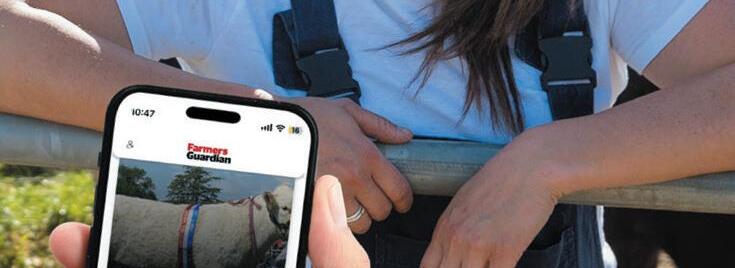
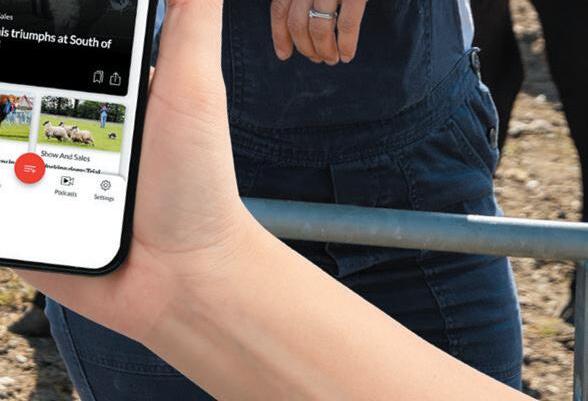

● Farm group claims tax is ‘pure bureaucracy’
By Alex Black
DANISH farmers will have to pay 120 Danish krone per tonne (£13.62/t) of emitted CO2 equivalent (CO2e) from 2035, after its Government agreed to put the world’s first carbon tax on farmers.
On June 24, agreement was reached between the Government of Denmark, the Danish Agriculture and Food Council, the Danish Society for Nature Conservation, the Confederation of Danish Industry, the Trade Union NNF and the Danish Local Government Association, after five months of negotiation.
The climate tax on agriculture would be 300 krone/t (£34.04/t) of CO 2e in 2030, increasing to 750 krone/t (£85.11/t) by 2035.
A basic deduction of 60% would be applied to the average emissions from different types of livestock, providing an economic advantage to climate-efficient farmers.
After the deduction, the effective

cost would be 120 krone/t (£13.62/t) of CO2e in 2030, and 300 krone/t (£34.04/t) in 2035.
The agreement also included funding for the establishment of more forests in Denmark and increased
AGRITECH adoption, efficiency and a New Zealand-style pragmatic attitude have been highlighted as essentials for the agricultural transition in the UK.
New Zealand Trade and Enterprise (NZTE) highlighted the country as a blueprint for British farmers to follow, with New Zealand receiving no Government support.
It comes as NZTE, a Government agency responsible for promoting economic development and trade, launched a campaign to help British farmers negotiate the changes.
The campaign includes five indepth downloadable guides covering a range of topics into how New Zealand utilises agritech.
Joe Nelson, trade commissioner for NZTE, said the guides had been created to help UK farmers get an in-depth understanding of the technology routinely used in New Zealand, and how they could drive efficiency, profitability and resilience in their own businesses.
Mr Nelson said that with the agri-
The climate tax will see a basic deduction of 60% applied to the average emissions from different types of livestock.

cultural transition, it was likely British farmers were going to need to be more efficient and profitable.
He said: “In many cases, this will require a much greater adoption of technology, both on-farm and in the management of the business.”
He added New Zealand had already set a precedent that life after subsidies was ‘not only possible’ but could help businesses become more successful, profitable and sustainable.
Brendan O’Connell, chief executive of AgriTech New Zealand, said farmer mindset was an extremely important factor in adopting new technologies on-farm, and that this was one area where UK farmers could learn from their counterparts down under.
“Farmers in New Zealand have a very pragmatic attitude,” he said, adding they had a ‘high tolerance’ to try something new if it would make the business more productive and profitable.
peatland restoration to ensure clean drinking water, with a clear ambition to comply with the EU Water Framework Directive.
Peter Kiær, chair of Danish agriculture group Bæredygtigt Landbrug, which was not involved in the negotiation, said: “We believe that the agreement is pure bureaucracy, which is unnecessary. We recognise that there is a climate problem and Danish agriculture will help solve it.
“But we do not believe that this agreement will solve the problems, because it will put a stick in the wheel of agriculture’s green investments.”
He added Danish farmers were ‘among the best at producing climate-efficient food’ and must be able to continue.
We do not believe this agreement will solve the [climate] problems
PETER KIÆR
Martin Lines, chief executive of the Nature Friendly Farming Network in the UK, said: “Agriculture can and must play a significant role in reducing its own emissions and has the potential to sequester carbon for others.
“A carbon tax should be implemented across all industries, with agriculture taking an active part not only in emission reduction, but also in leveraging the opportunities to be rewarded for carbon sequestration.”
AUSTRALIAN beef producers have shown growing optimism in the country’s beef industry, according to the latest Beef Producer Intentions Survey.
The survey, which is run three times a year by Meat and Livestock Australia, reported that one-in-two producers saw a positive outlook.
A much smaller cohort saw a negative outlook (16%), while about one-
in-three (31%) were uncertain about the next 12 months. Northern producers were generally more positive than southern producers, but there were key variations across the states, with those in Queensland, New South Wales and Victoria more positive than producers in other states. Producers in western Australia continued to report a far less positive outlook.
Edited by Angela Calvert – 07768 796 492 – angela.calvert@agriconnect.com
For more features, go to farmersguardian.com/farm-life

Ag in my Land is a global farming series looking at agriculture across the world. This month, Emily Ashworth speaks to Greg Hart, of Mangarara Farm in New Zealand.
With his farm sitting beside a 32.4-hectare (80-acre) lake and with 12.1ha (30 acres) of forest, it is easy to see why Greg Hart is desperate to preserve this beautiful piece of land for future generations.
Farming at Mangarara Farm on New Zealand’s North Island, Greg has given the farm a new lease of life after finding a passion for regenerative farming methods.
His parents and grandparents lived on a farm, but as a teenager he sustained a back injury and was told he probably would not be able to do farm work.
After finishing school with a degree in agriculture, he decided to see the world and took on various jobs, including a farm consultancy role, and even ended up doing a rugby season in Yorkshire.
He returned to New Zealand and had a couple of office-based jobs, but when his parents moved, the opportunity came up to buy some land next to them. So, he began his farming journey along with his wife Rachel, who comes from the Hawke’s Bay area.

Across 607ha (1,500 acres), their farm is a mix of flat land and steep rolling hills.
Greg says: “We have an 80-acre lake outside our house; a lot of New Zealand has been cleared of native forest, but we have 30 acres of old forest along the farm.

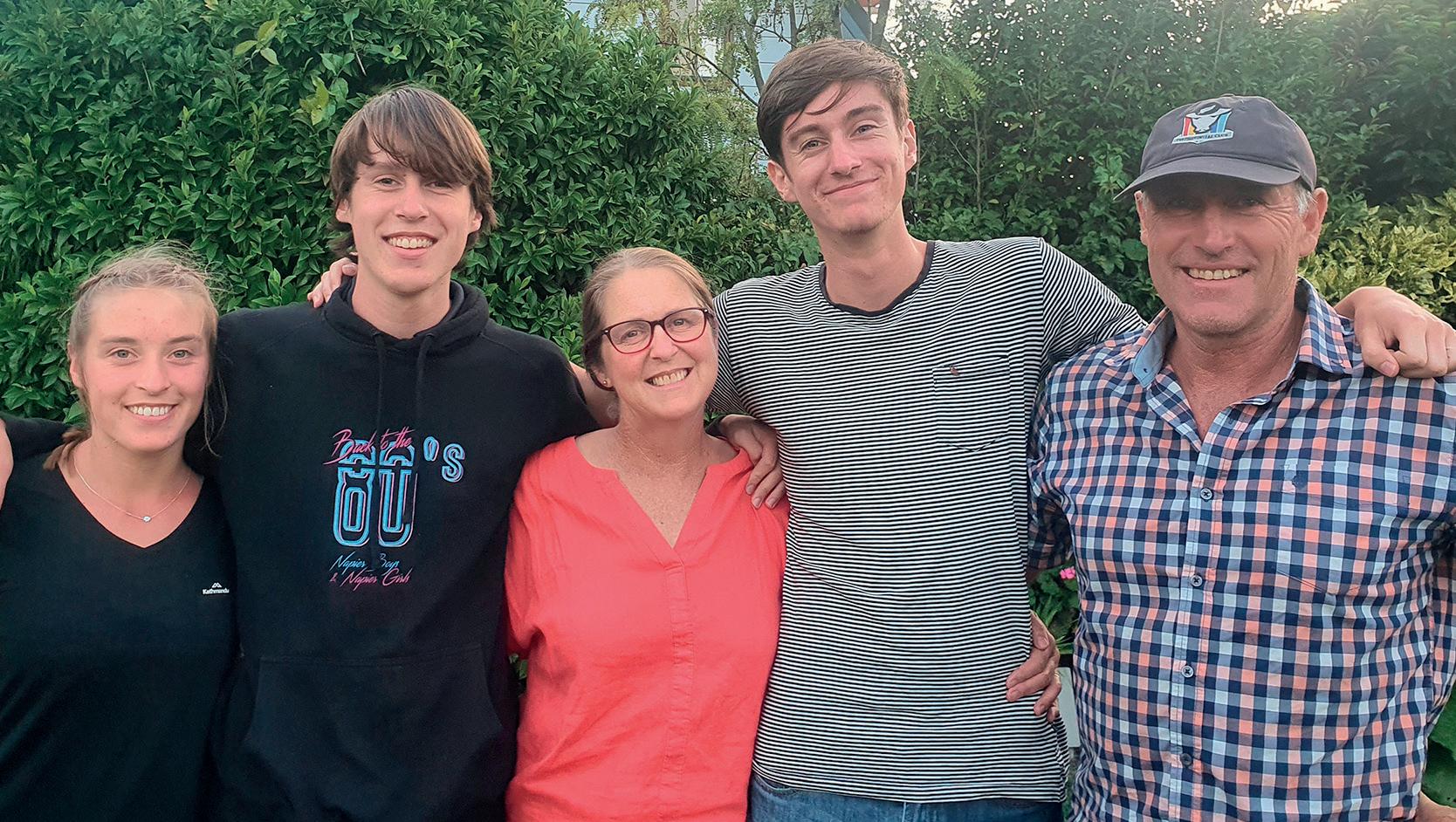

“It is quite rare in these parts, and nice to have indigenous forest.”
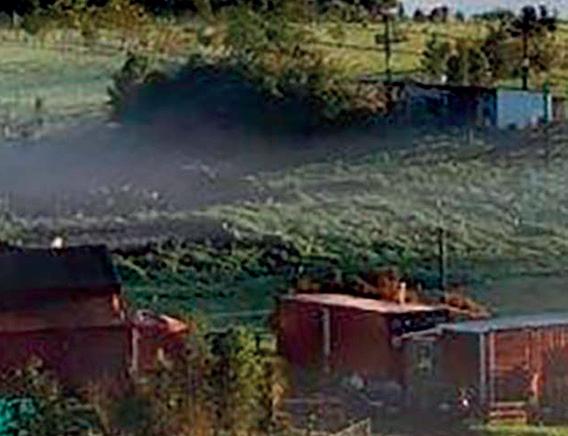
They farm beef and sheep, and numbers have been cut back to about 750 cattle – most of which are Aberdeen-Angus – and they have gone from running 3,000 breeding ewes to having about 30.
It is easier to manage now, says Greg, but the idea of destocking has come from the couple’s belief in land management.
Greg says: “The whole philosophy is around holistic planned grazing.
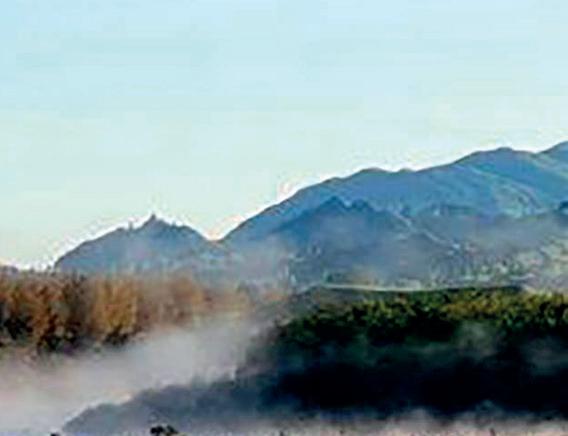

“We also have a whole lot of di-
versifications – an eco-lodge and accommodation, a few chickens and pigs.
“It is good to have various income streams when you go through the ups and downs of farming.”
They buy-in heifers from a neighbour and their core business is supplying beef to butchers. They also take dairy heifers from another farm, grazing them at Mangarara, getting them in-
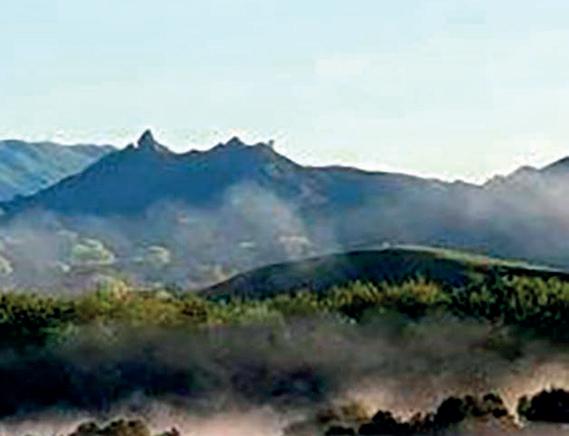

calf and then sending them back. Lambs are bought in to fatten and sold back through market.
But Greg’s ‘long’ journey with regenerative practices began 20 years ago, initially inspired by fatherhood.
He says: “When you have kids, you think a lot deeper about the next generation: What food are we giving to our children?”
“I was also learning about sustainability issues. New Zealand relies on









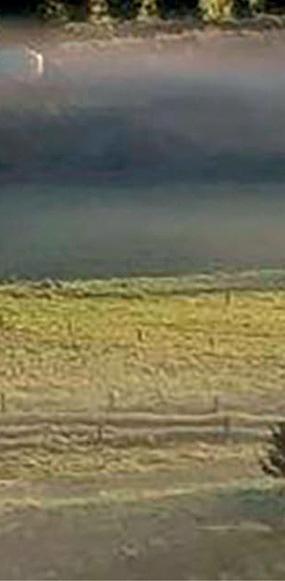
The farm has many diversifications, including an ecolodge and accommodation, plus a few chickens and pigs.
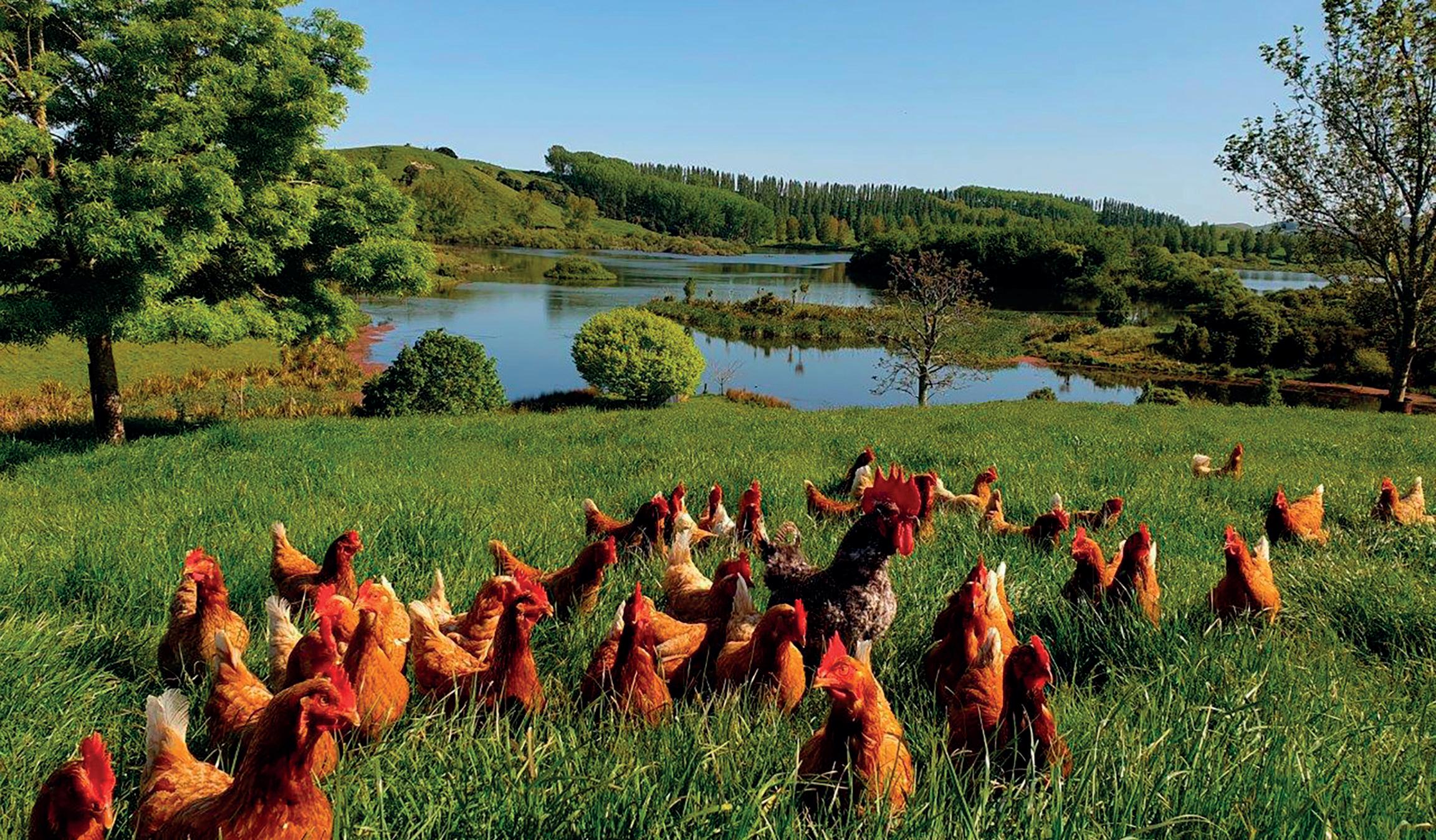
phosphate fertiliser from Morocco –it is what sustained our industry, but to me that is not sustainable.
“It sent us on a journey to find more sustainable ways to continue production, and a really big one for me was understanding the role energy plays in our life.
“It appears to me it [phosphate] is not going to be so readily available in the future, so how do we adapt when that time comes?
“And there is a biodiversity crisis, so how do we restore balance between agriculture and people? That biodiversity is essential for our survival and well-being.”
Greg’s thoughts turned to trees first, and in 2007 he managed to create a business opportunity for the farm.
Spurred on by an idea about air travel, he approached Air New Zealand about the potential of swapping air credits for a tree-planting programme, and although it did not quite work out that way, he was presented with an opportunity.
He says: “Farm budgets do not have spare cash for buying trees, but Air New Zealand said they were establishing an environment trust, so it was right place, right time.
“They were looking for a project and had a budget for three years, so we planted 85,000 native New Zealand trees.
“The other side of this is that our farm is now open to the public because we believe many problems are through that loss of connection; people no


Mangarara Farm is on New Zealand’s North Island, and attracts workers from all over the world.
longer understand where their food comes from.
“We have a good relationship with Air New Zealand and have between 1,500 and 2,000 visitors to the farm, who are free to wander out to the trees and see the animals.”
The livestock management has changed too, moving to a system used


Thisispartof anonlineseriescalled Ag in my Land,whichacrosslooksatfarmingtheworld.Go to farmersguardian. com/farm-life toreadmore.





by
well-known Zimbabwean farmer Allan Savoury.
This holistic land management method, which is better for cattle, builds on the natural movement of herds of buffalo, which in turn creates a thriving environment for soil.
Greg says: “Those big herds of buffalo in Africa create some of the deepest, richest soils in the world through trampling and constantly
moving, tall pasture and using manure, and that is what we are trying to mirror with these bigger animals.
“As humans, we are good at treating the symptom but not the cause, and holistic management looks at the cause of problem.
“We are also inspired by Joel Salatin [a well-known American farmer who has built a successful farm-to-consumer business] and his thing is being open


and transparent. The goal is to build a community around the farm; people who buy produce from us know our farm and know us. Trust is our certification with our end user.”
The main aim is to have a robust business, especially given that ‘sheep and beef farmers are going through a tough time in New Zealand’.
Greg is concerned that as times get tighter, environmental initiatives get bypassed because they need financial support as well as consumer support.
He also understands the weather woes farmers have faced in the UK –last year was recorded as one of the wettest on record.
“The extremes are becoming more extreme,” he says.
“Two years of drought and then two years of extreme wet weather.”
Another issue he recognises is labour. In the UK, farmers are still facing a potential labour shortage, and although it is not too dissimilar on the other side of the world, Greg is hopeful that the future of farming is attractive enough – with its focus on regenerative methods and sustainability – to entice new people.
Mangarara Farm sits beside an 32.4-hectare (80-acre) lake and has a forest of native trees.
The regenerative mindset, to me, is just putting life at the centre of every decision and action – there is so much more to learn
GREG HART
He says: “We currently have a young man from Scotland working for us for a year, and we have WWOOFers from all over the world – we have lots of young and enthusiastic energy coming and going, and it restores your faith that so many good young people are out there.
“The dairy industry is tough in New Zealand, but I think we are quite



fortunate here because we are in that regenerative space and have made a commitment to trying to make a better world – young people are drawn to that. But the labour market is tight –the Post Carbon Institute wrote a white paper called ‘The Future is Rural’, and it said that if we are going to reduce the amount of fossil fuels to produce food, we need more people living on the land.
“There is a growing movement of young people who are going back to the land and living more sustainably. Let us keep real nature, real food and farming going.”
His next venture is Agrihood; it is Greg’s idea to create a hub of regenerative businesses and a farmbased community at Mangarara.
Those with land-based businesses who are interested in regenerating the land could set up at the farm. For example, there is an unused dairy on-farm which could give someone a chance to create a really thriving business, such as, says Greg, making cheese.
The waste could then be used to
Greg’s next goal is to create a farmbased community at Mangarara.
feed pigs, and that creates another little business.
“We want to create a circular economy and create livelihoods – if we ran this farm conventionally, it is probably only a one-family farm. But we could be creating lots more opportunities for people. I have been really excited lately because we came across Kingsclere [an estate offering business opportunities] in the UK – their whole business is about creating a circular economy, and we want to be doing that.”
He nods to the fact that more than 90% of beef and sheep farmers will not make a profit, particularly with sheep, and that with new regulations coming in and the average farmer being around 57 years old, this can be quite ‘overwhelming’.
Rural areas need support, enthusiasm and backing from the top down; a lot of farmers, he says, have found it easier to sell their land to overseas companies who simply plant pine trees. But this is to the demise of those rural communities.

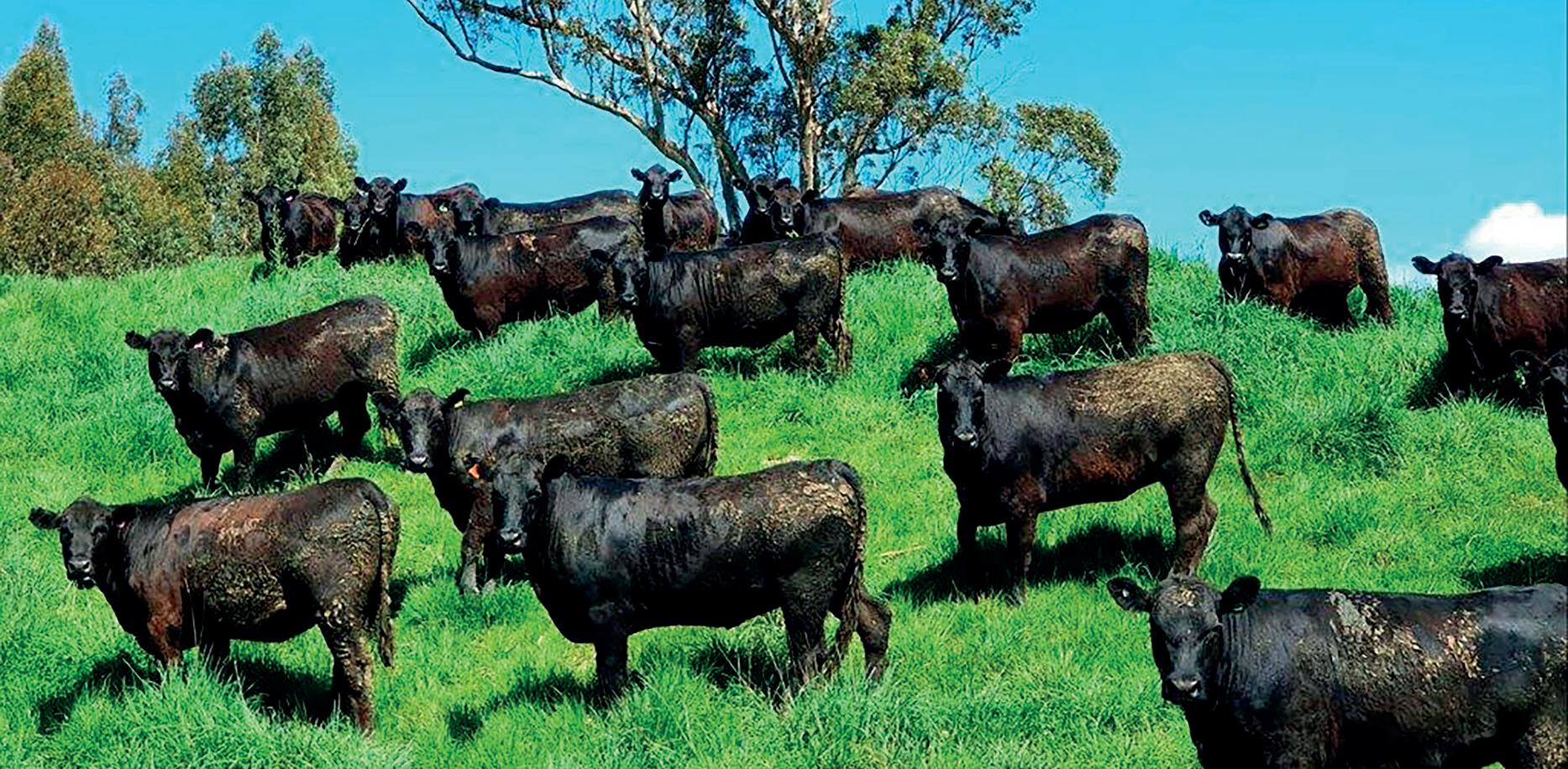
Greg wants to inspire those around him to look at the land, but also to look at where food comes from and how food production can be done differently.
He says: “In the 1980s, New Zealand removed all subsidies from the export of beef and sheep – it was a shock, but I do not think now that everyone would want that back; we are proud to stand on our own two feet.
“But food is our medicine; I really do believe we are super lucky and appreciate the privileged position we are in as caretakers of the land.
“The regenerative mindset, to me, is just putting life at the centre of every decision and action – there is so much more to learn and it is super exciting. People need food; the earth needs regenerating; we need more biodiversity. It is a great time to be alive.”











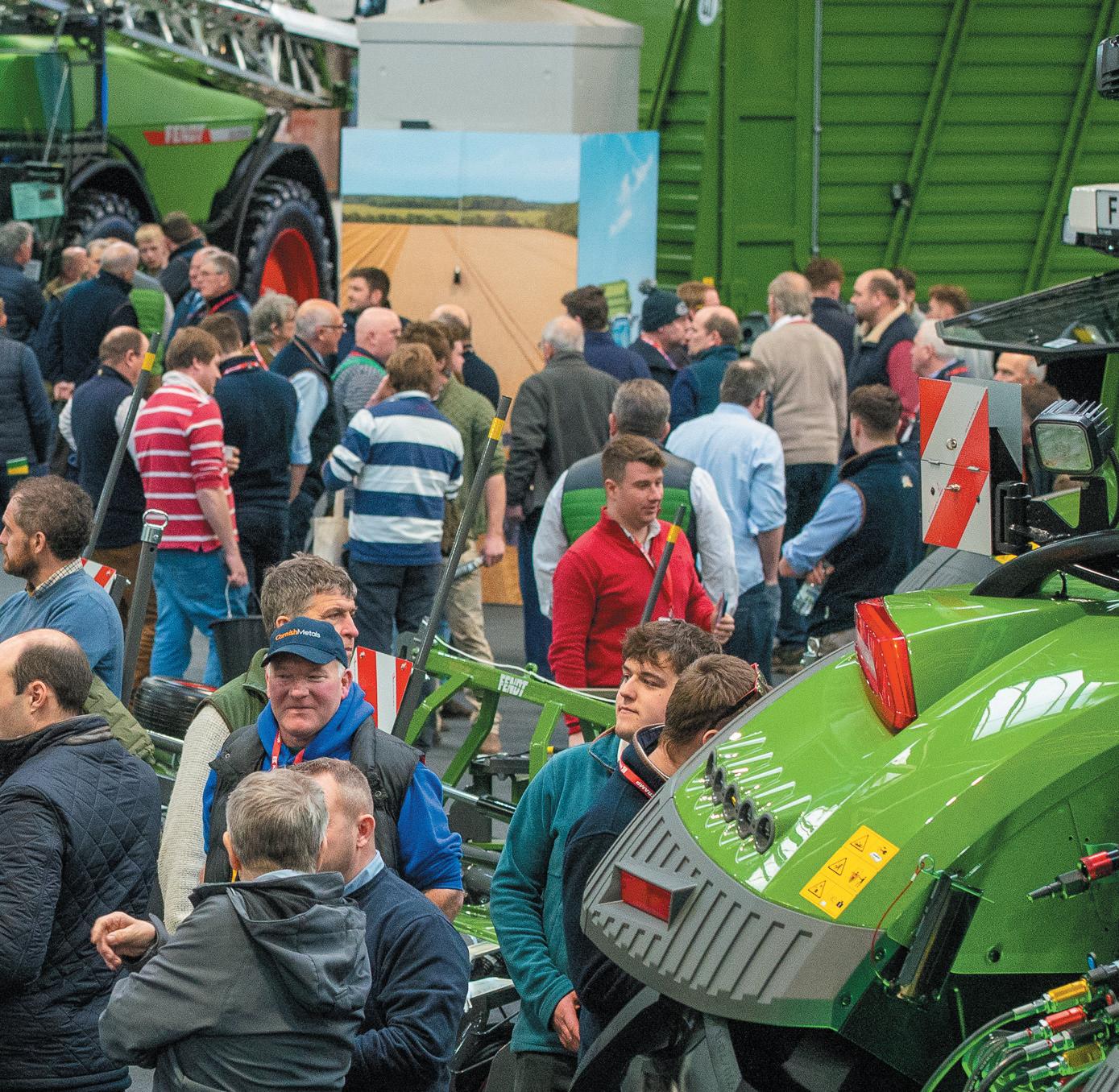




Benefits of exhibiting at LAMMA 25
✔ Engage with key decision makers ✔ Promote your products and services ✔ Increase brand awareness ✔ Increase brand credibility

✔ Meet current customers



The UK’s Premier Agricultural Machinery and Technology Show 15 - 16 January 2025, NEC, Birmingham




40,000+ 650+
87% 88% of exhibitors were satisfied with the event of exhibition space is booked exhibited at LAMMA 24 attended LAMMA 24






Edited



● Improved traits will suit Scottish distillers
By Ash Ellwood
THE first high-quality wheat with breadmaking potential that is resistant to barley yellow dwarf virus (BYDV) and orange wheat blossom midge will be available to UK farmers in commercial quantities this coming autumn.
RGT Goldfinch, which also features strong foliar disease resistance and agronomics, has grabbed the attention of growers, merchants and millers, according to RAGT managing director Lee Bennett.
Speaking at a recent open day at RAGT Seeds’ UK headquarters near

Ickleton, Cambridgeshire, he said:
“RGT Goldfinch’s dual resistance to BYDV and midge offers growers the opportunity to produce insecticidefree wheat, which will have obvious attractions within all markets, but particularly for crops intended for the human food chain.
“Importantly, the variety also has outstanding foliar disease resistance scores, including 9s for yellow and brown rust, 8 for mildew and 7 for septoria tritici, which will help protect grain quality and safeguard RGT Goldfinch’s excellent breadmaking potential, even in difficult seasons.”
Given the level of interest, RAGT has accelerated seed production so there will be some C2 seed available for drilling this autumn.
“Crucially, there are plenty of buybacks from millers who have really got on board with the variety,” Mr Bennett added.
“Its quality has been very well received and they like the environmental credentials of controlling two major pests of wheat without the need for insecticides.
“That also gives growers a great opportunity to claim £45/hectare for growing an insecticide-free crop under the IPM standard of the Sustainable Farming Incentive, which goes straight onto the bottom line.”
When it comes to yield, RGT Goldfinch offers complete protection when BYDV strikes, Mr Bennett said.
“In RAGT trials last season where plots were inoculated with BYDVcarrying aphids and received no insecticide treatment, RGT Goldfinch scored 106% against Skyfall’s 95% and Extase’s 92%.”
RGT Goldfinch is best suited to well-bodied land and can be sown from early September, ideal for a BYDV-resistant variety, right through to the end of November, offering welcome flexibility in less favourable autumns, he added.
Several other new wheats stood out in the plots, reflecting RAGT’s emphasis on breeding varieties with strong disease resistance scores and improved agronomic traits increasingly demanded by UK growers.
Those closest to market include two potential Recommended List (RL) Candidate soft wheats.
“RW42286 has a massive alcohol output, outyielding Skyscraper by 2%, which is significant,” said Mr Bennett.
“Skyscraper is the biggest variety in Scotland and this variety has distilling written all over it.
“The other soft wheat, RW42295, has a very similar alcohol yield, so could also suit the Scottish market, but it has also attracted much interest from Spanish millers who want something different from the standard UKS export specification.
“We are advancing seed multiplica-
We have not had a mainstream good Group 4 hard wheat for a long time, so to have several coming along at once is really exciting
LEE BENNETT
tion this autumn so we can get designated exports going as quickly as possible.”
A Genserus (BYDV-resistant ) hard feed variety, RW 42265, also a potential RL Candidate, looks set to challenge RGT Grouse, RAGT’s current commercial BYDV-resistant wheat, in the next year or two.
It offers a step up in yield, better septoria tritici resistance and very good yellow rust resistance.
A clutch of very high yielding conventional hard feed wheats with excellent disease resistance profiles and very strong agronomics are a year behind.
“We have not had a mainstream good Group 4 hard wheat for a long time, so to have several coming along at once is really exciting,” Mr Bennett said.




Consider how the mix will benefit the enterprise rather than basing it on payment alone, says Wynnstay’s Amy Watts.
Managing stewardship mixtures to get optimal performance out of crops is critical.
Many farmers are considering their options under the Sustainable Farming Incentive, but there are several factors to think about when it comes to establish-
MANAGE AS A CASH CROP
■ Treat the mixes the same as you would a cash crop, says Amy Watts.
“It is not just a case of entering a non-productive area into a stewardship scheme and hoping for the best,” she says.
Factors to consider include conditions at the time of sowing, seedbed preparation, drilling depth, soil fertility, nutrient management, and future management requirements.
■ When selecting herbal ley mixtures, consider the use because different seed mixtures are available and tailored to either grazing or cutting.
She says: “With any Sustainable Farming Incentive option, take the time to determine the chosen scheme and how it is going to fit in with the rotation.
“We need to consider how the mixes are going to benefit the enterprise – there is little benefit in choosing a scheme option based on payment alone, if the scheme itself is not going to support existing farming practices.
“For arable farmers looking to incorporate livestock back into the rotation, herbal leys can be a great option to provide forage while supporting soil health.”
ment and management. Herbal leys are a particularly popular option, but before taking out any scheme agreement, the main factors to consider are what the scheme requires and how it will work alongside the existing enterprise, according to Amy Watts, environmental seed product manager at Wynnstay.
■ Correct seedbed management is critical to achieve a high establishment.
Due to a combination of both grass and broad-leaved species in herbal ley mixtures, herbicide options are limited, therefore a stale seedbed is vital ahead of drilling, allowing removal of any potential weed burdens, says Ms Watts.
■ Soil temperature plays an important role and sowing in spring or early autumn is most suitable for herbal leys.
Ms Watts says: “The soil temperature needs to be at least 8degC for spring establishment and, looking ahead to the autumn, the end of August is optimal, through to midSeptember – depending on conditions.”
■ Successful establishment techniques vary farm to farm.
“These mixtures can be shallowly drilled, ideally no deeper than 1cm – or the small-seeded species may struggle to establish,” says Ms Watts.
Herbal ley seed mixtures can otherwise be broadcast onto a firm, fine seedbed, and then rolled to allow good consolidation.






























• Highest yielding 2-row winter barley on the 24/25 RL
• Robust disease resistance package
• Excellent specific weight




The eighth Groundswell event welcomed a record number of farmers looking to explore the economics and practicalities of moving to a more regenerative farming system. Alice Dyer and Teresa Rush report all the highlights.
A MOVE towards a more regenerative farming system does not have to coincide with a transition period of poor yields.
This was the view of world-renowned agroecologist and Ohio farmer, John Kempf, on his first visit to UK soil as he opened the first day of Groundswell.
He told the audience: “There is this prevailing idea that we should expect to see yield declines [when moving to a regenerative farming system] due to increased pest, weed and disease pressure, but when you manage plant nutrition and agronomy well, you should expect to see the opposite.
“We want healthy plants that produce the highest yields possible and that have a functional immune system and are resistant to pests.
“When you have abundantly healthy plants you cannot stop yields from increasing.”
Although reducing synthetic inputs is a key part of this transition, growers must first ‘earn the right’ to do so, he added.
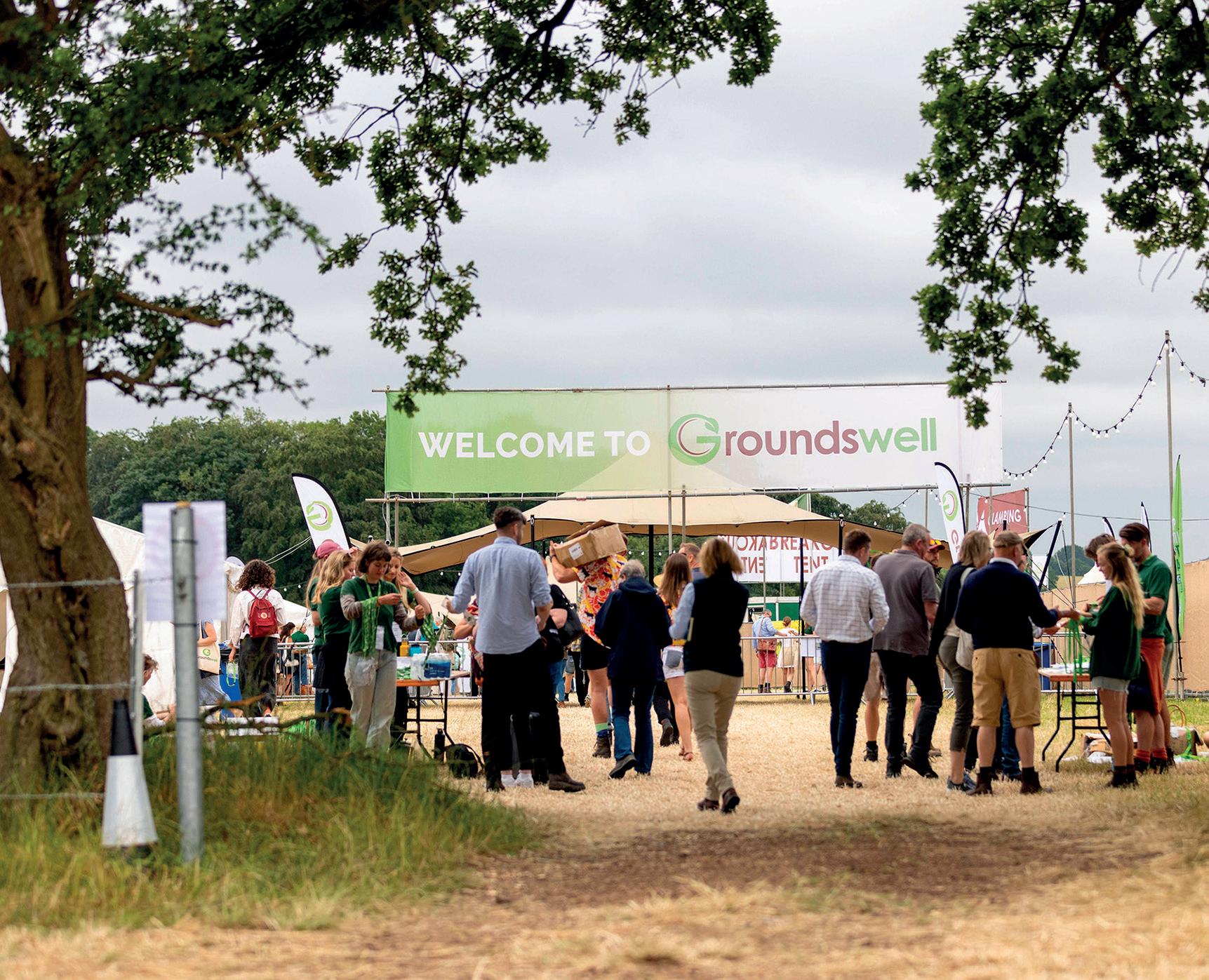
Switching to regenerative farming need not lead to poor yields, visitors to Groundswell at Lannock Manor Farm, Hertfordshire, were told.

“Before we can have a conscientious conversation about reducing pesticide applications, we first need to increase plant health to the point where they do not require them.”
this were managing plant nutrition and the soil microbiome.
He said two key components to

Mr Kempf said: “You will suffer from particular diseases or insects with particular nutritional profiles.
“I can say with complete confidence that if you have flea beetle on rapeseed you will have a deficiency of either magnesium, sulphur, boron or molybdenum, or a combination of the four.
“Your plants are not metabolising nitrogen or proteins properly, so there is an imbalance of those four elements.
“When you address those four elements well, flea beetle will be gone.
“The same is true of many other insect pests.
“With many diseases, we can correspond to a particular nutritional
profile and we know what is happening within that soil plant ecosystem as a reflection of disease and insect pressure.”
In order to deliver immediate, consistent and reliable economic results in the first growing season, his mantra has always been ‘you cannot guess’.
“Do not guess whatever it is possible to measure,” he said.
His agronomy company, which now manages some 4.45 million hectares of crops in the US, conducts thorough analyses of the system including the soil microbiome using genomic analysis, nutrient analysis and sap analysis.
“Most farmers do not have a three- to five-year financial window [to make the transition] so there needs to be an immediate economic response,” he said.


BUCKINGHAMSHIRE market gardeners Tracy Russell and David Newman, of Bucksum, claimed the top spot in the 2024 Soil Farmer of the Year competition.
Gloucestershire arable/mixed farmer Ed Horton took second place, with Cornish organic dairy and pig farmer Ben Richards in third.
Growing up to 40 different vegetables in field and polytunnels, Bucksum operates a four-year rotation, taking a cash crop once every four years while building soil health and fertility using herbal leys grazed by sheep for the other three years in the rotation.
The couple employs a diversity of approaches to improve soil health, including using chickens to
clear the ground under agroforestry fruit tree lines and bringing more natural predators and beneficial insects to the farm with agroforestry and the introduction of sheep grazing.
They also make their own soil improver using their own green waste, composted wood chippings from a local tree surgeon and spent hops from a nearby brewery.
Speaking in a panel discussion during the awards at Groundswell, Mr Newman said he found inspiration in experimentation.
“We do not fear experimenting and, particularly when you are growing vegetables, you know you are always going to get some failures,” he said.
He cited an example of an
ROTATIONAL ploughing could play an important role in some regenerative farming systems in order to manage grass-weeds and other agronomic challenges.
Weed expert, Dr Stephen Moss, known for his ‘5 for 5’ black-grass campaign told a seminar, “blackgrass seed can only germinate in the top 5cm of soil, so cultivation has a clear impact on seed decline.
“Ploughing can be a good thing as a reset tool for black-grass and for many other purposes.
“I truly believe rotational ploughing
will come to be seen as an integral part of regen ag in the longer term.
“Rotational ploughing has other benefits such as putting immobile nutrients down at depth.
“It can also be useful to take out surface compaction – probably once every six to eight years, but it will depend on the individual farm, and on some soils it will not be appropriate. [The caveat is] it has to be done well. If not done properly, it is not worth doing.”
experiment last year with living mulches.
“We went quite heavy with it [living mulch] and in some of the crops it did not work and so we did not get many leeks, celery or celeriac, but we learned a lot from that.”
Mr Horton said that one of the biggest challenges during his regenerative agriculture transition had been grazing his cereals with sheep.
“One of the best things you can do for soil health is to reduce your fungicide and growth regulator usage and use livestock, but when you have got a good-looking crop of wheat, the last thing you want to see is wet lambs wandering around
Soil Farmer of the Year
Tracy Russell and David Newman, Bucksum, Shabbington Fields Farm, Buckinghamshire
■ Second: Ed Horton, SS Horton and Sons, Gloucestershire
■ Third: Ben Richards, Middle Trelan Farm, Cornwall
in the crop. My hardest challenge has been to make that shift from being a conventional arable farm, as it were, to what we do now.”
The Soil Farmer of the Year competition is jointly run by Farm Carbon Toolkit and Innovation for Agriculture and is sponsored by Cotswold Seeds and Hutchinsons.
THE UK Centre of Ecology and Hydrology (CEH) is offering farmers a free and confidential farm environmental health check.
CEH has been awarded funding from UK Research and Innovation to support the transition of UK agriculture towards net zero plus. Key to achieving this will be providing farmers with free access to accurate, impartial and reliable data on their greenhouse gas emissions, carbon stocks, pollution risk and
biodiversity impacts. The health check comprises detailed farm mapping and inventories, environmental opportunity mapping and an audit of farm operations, including nitrogen use efficiency, and greenhouse gas emissions.
MORE INFORMATION
To find out more go to agzeroplus.org. uk and click on the farm network tab, or email Richard Pywell or Grace Skinner at agzeroplus@ceh.ac.uk

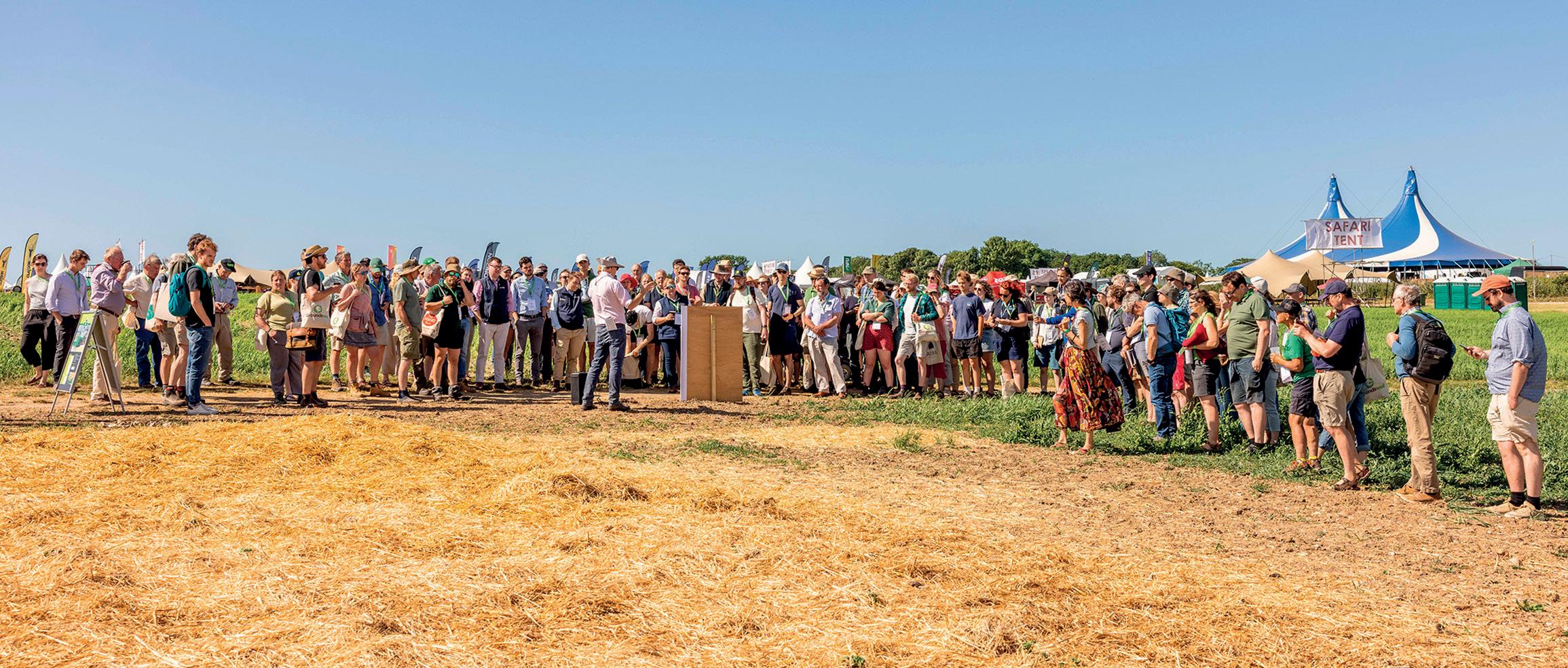
Visitors to Groundswell had the chance to hear a range of advice and see a variety of exhibitors.
● Digging a pit at least 90cm deep essential
SOIL and water expert Odette Menard provided a Canadian insight into soil health and management during her keynote ‘CROP concept and soil compaction’ session at Groundswell.
Managing soil compaction was essential for sustainable agriculture, she said, but too few farmers in the Quebec province in which she works, dug a soil profile pit as a first step in tackling compaction.
She said: “Compaction is something we should avoid if we want to have a better rate of diffusion in our soil. In a compacted soil, roots are not going to be able to grow and find all the space they need.
“Depending on our management practices, we can go from a very compacted soil to a very healthy soil, from a soil that will need a lot of intervention to a soil that will produce a lot of grain by itself.
“But we have got to look at our soil profile; we do not do that enough. We have got to get our
Top tips for protecting your soil porosity
■ Balance your tractor
■ Adjust tyre pressure to weight
■ Aim for a maximum tyre pressure of 12.5psi/0.9-bar
■ Slow your speed
■ Work in optimal conditions
■ Respect a maximum weight of 3,500kg per wheel
TIMELY and relevant research is needed to support the transition to regenerative farming at scale and to meet the challenge of striking a balance between food production and tackling the biodiversity and climate crises, visitors to Groundswell heard.
Yet farmers at the forefront of innovations across the regen sector can often move faster than research can validate new developments.
North Yorkshire farmer Fraser Hugill, and Tom Pearson, who farms in Cambridgeshire, shared their perspectives on research in the ‘Making Research Work in Practice for Regenerative Agriculture’ discussion at the event.
They were joined by Prof Richard
Pywell, head of biodiversity research at the Centre for Ecology and Hydrology, Cambridge University agroecologist Dr Katherine Berthon and Leeds University ecologist Dr Ruth Wade.
Mr Hugill is one of a group of 10 farmers in the North Yorks Moors National Park and the Howardian Hills Area of Outstanding Natural Beauty involved in a project testing the potential of cocksfoot, a grass species thought to be longer-lasting, higher yielding, more resilient and better for the environment than traditional grazing swards such as ryegrass.
He said: “We are only a year into the project, but I think one of the key things we are getting out of it is that we, as farmers, own it.
“If cocksfoot does not work, I do not
shovel and dig at least 90cm deep to find out what is going on down there,” said Ms Menard.
Switching to approaches such as no-till and controlled traffic farming (CTF) was not necessarily the route to healthier soil, she said.
Instead, she advocated a system bringing together four components of soil health – the CROP system –where C is for cover crops, R for roots, O for oxygen and P for porosity.
“We need to move these four actions forward together,” she said.
She advocated a maximum weight of 3.5 tonnes per wheel for farm machinery.
“Most of the time people going into a controlled traffic system keep heavy machinery,” she said.
“If I am working with something that weighs five, six, seven tonnes
really care; this is about us learning within our own landscape.”
Mr Pearson is chair of the West Cambridgeshire Hundreds farm cluster and one of the lead farmers on the H3 landscape scale regenerative farming research project.
He highlighted the importance of including a social science element in regenerative agriculture projects such as H3, which would ultimately influence Government food and farming policy.
“Ultimately this is transforming UK food systems, so it is important that we get over the farmers’ story and why it is not as simple as saying, ‘I need you to move to regenerative farming’,” he said.
He also suggested that on-farm
per wheel and I have killed 10% of my field, that is good for today, that is good for maybe the next five years, but in five or 10 years, if the machinery set-up changes for any reason, that 10% area is going to be dead forever.
“CTF is good as long as you respect tyre pressure and the weight per wheel.”
Initial yield loss need not be a consequence of moving to a more sustainable tillage system.
She added: “When I hear, ‘I am going to get into no-till and I know I am going to have some yield loss’, well I do not want to hear that.
“If you are having yield loss, it is because you did not find the right strategy to get you to a healthy soil.”
research could be a diversification enterprise and could bring benefits in terms of farm staff recruitment.
“As farmers, we should really consider the idea that research can be a perfectly viable diversification on your farm.
“We are now a farm that is in a position to go and look for research projects and that makes it exciting for my team,” he said.
■ h3.ac.uk
■ agzeroplus.org.uk
■ innovativefarmers.org
■ fixourfood.org
■ ukfoodsystems.ukri.org More information






















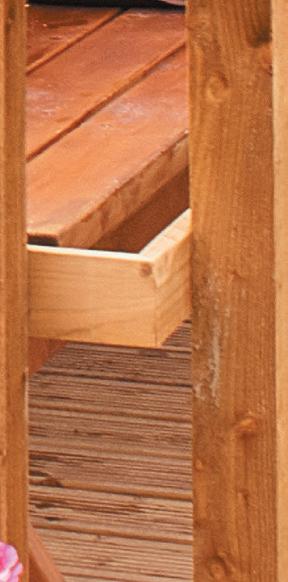
Edited by Angela Calvert –
07768 796 492 – angela.calvert@agriconnect.com For more sales content, go to farmersguardian.com/shows-sales
SINGLETON Fury, a September 2022-born ram topped the 20th show and sale of the Welsh Dorset Club at Llandovery at 1,100gns.
Consigned by Steffan and Owain Jones, Trimsaran, the ram had been placed second in the pre-sale show and had been second as a ram lamb and reserve male champion at the 2023 Royal Welsh Show.
The buyer was M.G. Davies, Pembrokeshire.
A March-born ram lamb by Blackhill Dynamo, from M. and H. Lewis, Llandovery, sold for 750gns to M. Davies, Carmarthen.
Messers Downes, of the SianD flock, Tregaron, sold a February 2023-born son of Huish Zodiac for 550gns to O. Davies of the Talog flock, Pencader.
The supreme and female championship went to Messrs Griffiths and Davies, of the Dolclettwr flock, Machynlleth, with their September 2023-born ewe lamb, Dolclettwr Glamorous, which sold to J. Durrat, Essex, for 420gns.
The same vendors sold the top price shearling ewe, Dolclettwr Fantastic, a September 2022-born daughter of Pembroke Apolocreed, which went to S. Savidge, Usk, for 390gns.
AVERAGES
Shearling ewes, £238.57 (+£21.94 on 2023); two-year-old ewes, £202.50; three-year-old ewes, £232.31 (+£43.48); four year-old ewes, £224.70; full mouth ewes, £207.99 (+£47.04); broken mouth ewes, £136.50 (+£23.10); ewe lambs, £177.84 (+£22.94); shearling rams, £589.17 (+£147.55); ram lambs, £395.50 (+£44.69); couples, £201.50 (+60p).
Auctioneers: Clee Tompkinson and Francis.

l Prices up £155 on the previous year
THE sale of Limousin bulls at Carlisle topped at 18,000gns with a 68% clearance and an average of £5,753, up £155 on the year.
The sale leader was the senior bull, Westpit Omaha, from C. Ridley, of the Haltcliffe herd, Wigton.
Bred by A. and J. Gammie, Laurencekirk, the son of Ampertaine Foreman out of Brockhurst Holy, a daughter of Wilodge Vantastic/Brockhurst Bolshoi, has been the stock bull at Haltcliffe since 2019 and has produced offspring which have sold to 32,000gns.
With myostatin F94L/Q204X and calving estimated breeding values in the top 10% of the breed, it sold to the Pabo pedigree herd of W.P. Hughes and Sons, Anglesey.
Next, at 12,000gns, was another senior bull, 2020-born Frogmore Ronaldo, from the Norman Farming Company, Little Orton.
Bred by Chris White and by Ampertaine Magnum out of Foxhillfarm Oriel and with calving traits in the top 10% and 1% of the breed and myostatin F94L/F94L genes, it was knocked down to G. and P. Middleton, Sedbergh.
Making 6,000gns was Tabasco, a March 2022-born imported bull by Japon out of Galette.
It was consigned by Messrs Rid-
THERE was a strong demand for calves at Bentham with numbers tight.
Trade peaked at £525 for John Handley, Kendal, with a British Blue bull.
Messrs Gibbons, St Michaels, had a run of predominantly British Blues, which topped at £520 and £510 with Limousin bulls at £490. The best continental bulls were £450 plus and mediums £350-£400.
Younger, smaller calves were either side of £300, with a threeweek-old Charolais bull from Oliver Parkinson, Woodplumpton, selling at £310.
John Duxbury, Woodplumpton, topped the continental heifers at £435, with most of the stronger heifers trading at £350-£400 and the next at £300-£350.
John Lawson, Bentham, topped the Aberdeen-Angus calves at £455 for a heifer. Hannah Kent, Cockerham, sold Aberdeen-Angus bulls to £445 and £440.
There was a shortage of dairy bulls, with Duncan Robinson, Clapham, topping the section at £210. Auctioneers: Richard Turner and Son.

ley’s Haltcliffe herd, and sold to Messrs Jones, Llanarth. Glenrock Unionjack, a January 2023-born bull by Ampertaine Elgin out of Glenrock Royalhighness from S. and T. Illingworth, Lockerbie, made 5,500gns.
It sold to Messrs Strong and Son, Hesket Newmarket.
AVERAGES 17 bulls, £5,753.38. Auctioneers: Harrison and Hetherington.
THE Western Holstein Club-supported show and sale at Market Drayton topped at £3,180 for the pre-sale show champion, Romar Mingus Peony 33.
It was one of two heifers from A.A. Winstanley and Partners, Audlem, whose other heifer, Rowmar Solarpower Dorrity 79, made £3,000.
The second prize heifer, Foxcroft Willows Chassity, from J.G. Morgan, Tewkesbury, sold for £2,820, with another heifer from the same home making £2,750.
Heifers
P.D. and R.L. Fenton, Tarporley, averaged £2,526 for their six heifers selling to £2,900, £2,780 and £2,500.
R.A. and J.E. Williams and Son,
Hay on Wye, sold a heifer at £2,880 and D. and W. Davenport, Sandbach, and R.G. Woolley and Son, Acton, both sold heifers to £2,500. There were fewer first quality cows forward, with the best to £2,400 for the first prize non-pedigree second calver from N.K. and C.L. Jackson, Whitchurch. A fifth calver from M. and S. Wilson and Son, Crewe, sold for £2,050. In-calf heifers sold to £1,830 twice and heifer calves to £220 twice.
AVERAGES 36 heifers in-milk (all breeds and faults), £2,052; 11 cows in-milk (all breeds and faults), £1,691. Auctioneers: Gwilym Richards and Market Drayton Market.


Springhill Casino Royale from Graham Foster, Newtownstewart, Co Tyrone, which sold for 10,000gns to a trio of breeders, with Mr Foster also retaining a 25% share.
A NEW sale for the Charollais breed at Carlisle accommodated vendors from Northern Ireland by having a mixture of animals in the market and some sold via video recordings. And it was one of the Northern Ireland vendors whose ram lambs took many of the top prices.
Graham Foster’s Springhill flock, Newtownstewart, Co Tyrone, topped the sale at 10,000gns for Springhill Casino Royale. By last year’s top priced ram lamb, Boyo Bravemansgame bought at the Worcester premier sale for 24,000gns and out of an Oakchurch ewe by Cavick What a Boy, it
sold to a trio of breeders from Southern Ireland – John McCafferty, Sinead Brophy and Gavin Fahey, with the breeder retaining a 25% share.
Another Bravemansgame son, Springhill Crackerjack, then sold for 8,000gns. Buyers this time were Ben and Amelia Watts, Newton Abbot, Devon, for their Willow flock.
Price tag
Ben Radley, Dumfriesshire, matched the 8,000gns price tag for Loaningfoot Cotton Eyed Joe, a son of Boyo Vancouver, whose home-bred dam was breed champion at Ayr in 2022. The buyer was Russell Gray, Lanarkshire.
The Springhill flock dominated the next few prices, with Springhill Class
£4,000
THE sale of cows and calves at Welshpool on Monday included nine pedigree and pure-bred Limousin cows and heifers, with Limousin calves at foot from Richard and Steve Whitley, Haulfryn Farming, Buckley, which sold to a high of £4,000 for a first calver with a bull calf.
Making £3,550 was another first calver with a bull calf, with a pedigree heifer with a Limousin heifer calf at £3,500. Overall the consignment averaged £3,133.34.
The dispersal sale on behalf of T.H. and M.E. Jones, Plascoch, topped at £3,750 for a 2018-born British Blue cross cow with a Limousin cross bull
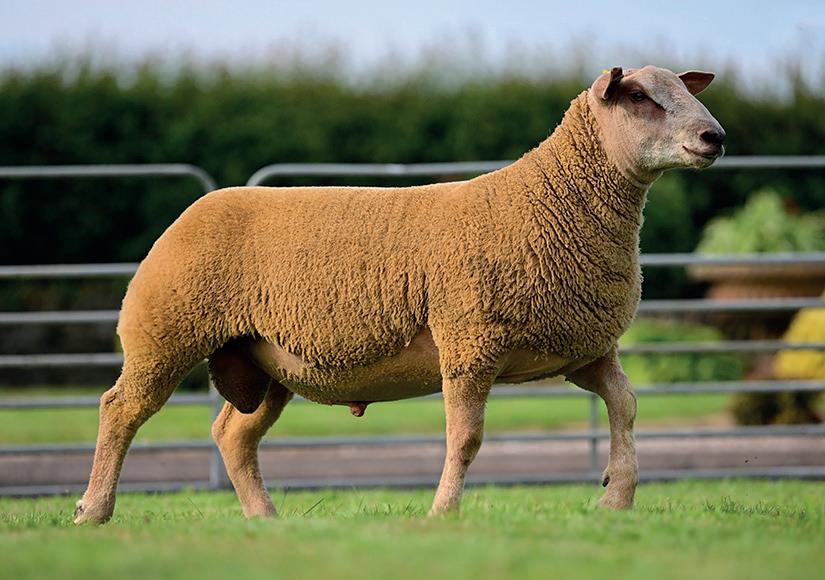

Act going for 5,500gns to Messrs Douglas, Co Managham, and Springhill Craftsman selling for 5,000gns to Alan Thomas, Lutterworth, for his Tilton flock.
The Ingram family, Inverurie, took the championship ticket in the pre-sale show with a shearling ram, which sold for 2,800gns to G.B. Howsam, Boston, Lincolnshire.
Topping their trade at 5,000gns was a Loanhead ram lamb from brothers Gregor and Bruce Ingram. By Foxhill Va Va Voom, it sold to Richard Bamforth, Huddersfield, for his Lower Denby flock. The pick for Messrs Sloan and Jackson’s Rigghead flock, Dumfries, at 3,500gns was a ram lamb from Logie Durno by their new stock sire, Cavick Blood Diamond.
calf. Following that at £3,700 was a 2019-born Limousin cross cow with a Limousin bull calf.
Making £3,500 was a Limousin cross fourth calver with a Limousin cross bull calf. At £3,300 was another 2018-born cow with a Limousin cross heifer calf.
A Salers cross cow with a Charolais cross bull calf sold for £3,000. Making £3,100 was a Limousin cross second calver with a Limousin bull calf. None of the dispersal sale cows sold for less than £2,000 and the 42 cows and calves averaged £2,593.62.
Auctioneers: Welshpool Livestock Sales.
Springhill Crackerjack, from Graham Foster, Newtownstewart, Co Tyrone, which sold for 8,000gns to Ben and Amelia Watts, Newton Abbot, Devon.
Loaningfoot Cotton Eyed Joe, from Ben Radley, Dumfriesshire, which sold for 8,000gns to Russell Gray, Lanarkshire.
Leading the entry of females at 1,400gns was a shearling ewe from the Aghavilly flock of Glenn Baird, Co Armagh, sold via the video link. The daughter of Loanhead Virgil Van Dijk, sold to Messrs Tener, Dungannon.
Messrs Mason, Lancaster, took the first prize shearling ewe from the Ingrams at 1,200gns. Securing the first prize ewe lamb from the Manor House flock of George Hoggard, Newark, at 1,200gns were Messrs Trafford, Cockermouth.
AVERAGES
9 shearling ewes, £1,055.83; 2 ewe lambs, £1,128.75; 1 aged ram, £2,625; 10 shearling rams, £1,370.25; 40 ram lambs, £2,346.75. Auctioneers: Harrison and Hetherington.
THE sale of store cattle at Penrith topped at £1,705 for 24-month-old dairy-bred Aberdeen-Angus bullocks from S. and W. Maughan, Ainstable, bought by David Barker, Scarborough. This consignment averaged £1,602.21.
Heifers sold to £1,435 for Limousins from E.J. Lister, Lamplugh.
A consignment of mainly dairy-bred
18- to 22-month-old Aberdeen-Angus and Hereford heifers from W.E. Strong and Partners, Great Strickland, averaged £1,296, topping at £1,375.
Nine black and white bullocks, straight off the grass, from D.W. Burne and Son, Greenlands, made £1,195/head.
Auctioneers: Penrith and District Farmers Mart.
AT the show and sale of Texel lambs at Caledonian Marts, Stirling, the championship went to P.G. Perring, Hoprig, Berwickshire, with 42kg lambs which sold for 488p/kg (£205/head). The reserve champions, also 42kg lambs from the same home made 376p/kg
488p/kg
(£158/head). Overall the 212 lambs averaged 296.17p/kg (£133.41/head).
Hoggs averaged 213p/kg topping at 258p/kg for Blackface from Gilmour Farms, Campbeltown, and £131/head for Blackface from the same home.
Auctioneers: Caledonian Marts.






















































To celebrate Farmers Guardian’s 180th anniversary we have added some exciting benefits to our membership packages to give you even more content, networking opportunities and access to future farming insights.







*Prices correct at the date of print Anniversary offer from £80 for 1 year from £165 for 1 year PLUS FREE ACCESS to Arable Farming and Dairy Farmer magazines in the app
















• Early Digital Access - No more waiting for the post! Get the latest issue a day early via our app.
• Exclusive Reports - Immediate access to three FREE in-depth reports on Diversification, Climate Friendly Farming, and Grants. Plus, future reports.
• Expert Online Events - Join live webinars and roundtables with top industry experts and fellow members, exploring the latest farming trends.
• Premium Networking - Connect with other farmers and professionals at Agriconnect events





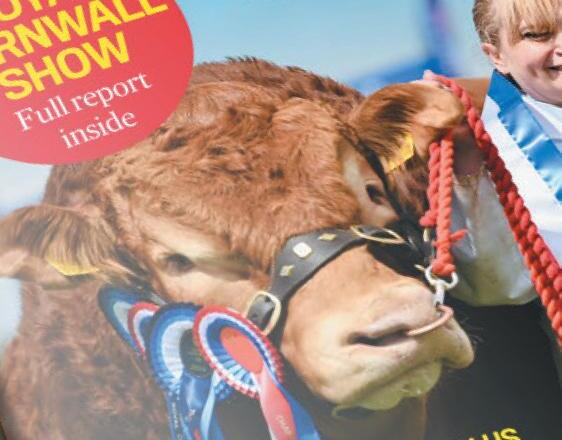



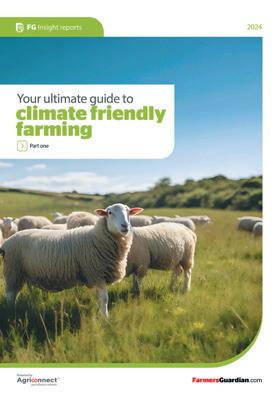


like LAMMA, Farm Business Innovation Show, Low Carbon Agriculture Show, and CropTec.
• Editor’s Weekly Digest - Receive a Sunday morning update from Editor Olivia Midgley with insights and highlights from the week.
• Stay Connected at Events - Meet and network with Farmers Guardian at key national events like The Royal Highland Show, The Great Yorkshire Show and more.






























Daires to £2220, Cull Cows 207p/kg - £1369.90, Pigs -208p/kg - £172.64, Calves Lim Bull to £395, Hoggs 222p/kg - £119.88, Lambs
-
TUESDAY 30TH JULY 2024
Dispersal of the Entire Herd of approx 120 Holsteins & Brown Swiss on behalf of M Davenport, Cote Hill Farm, Osgodby, Lincs. NMR Recorded, Cubicle Housed, 4TB.
Store Cattle Sale
340 STORE CATTLE
THIS SATURDAY 6TH JULY 2024
Fat/Barrens: Graham Watkins 07976 370894
Dairies: Meg Elliott 07967 007049 Stores: Mark Elliott 07973 673092 Sheep: Robert Watkins 07929 946652 Visit us at www.leekauctions.co.uk

TUESDAY 9TH JULY 2024 - 10am EXETER LIVESTOCK CENTRE, EXETER, DEVON EX2 8FD
Annual Sale of 6091 Breeding Ewes & Rams
Comprising 1615 Older Ewes to inc 926 Suff x, 427 Dorset/Dorset x, 142 Texel x and 120 Mule to include many flock dispersals/reductions.
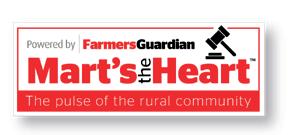
to inc

(inc. 40 Suff x Scotch HB & 30 Suff x Chev Mule), also 506 NC/Cheviot Mule, 340 Texel x Mule, 237 Dorset & Dorset x, 111 Cont & Cont x and 81 native shearlings. Also 120 Dorset Ewe Lambs. 313 Stock Rams to inc 46 MV Acc & Ped Suffolk Rams & Ram Lambs on behalf of the WCSSA, 108 MV Acc commercial Rams and 159 Non-MV Acc Rams of varying breeds.

Exeter- Where quality and quantity sell One of the largest entries of Suffolk crosses in the Country! All Suff x’s sold through the ring and available for online bidding via Marteye. Catalogues available www.kivells.com or 01392 251 261. Further information from Russell Steer 07788 318701.



Charollais Sheep Society Worcester Premier Show & Sale
5 Shearling Ewes, 3 Ewe Lambs, 21 Shearling Rams, 97 Ram Lambs Show at 10.00am, Sale at 1.00pm Online
SATURDAY 13th JULY
Dorset Horn and Poll Dorset Breeder’s Association Show and Sale 147 Females, 20 Rams Show at 9.30am, Sale at 10.30am
British Berrichon Sheep Society Early First Choice Show and Sale
2 Aged Rams, 11 Shearling Rams, 9 Ram Lambs, 10 Aged Ewes, 13 Shearling Ewes, 6 Ewe Lambs to include dispersal sale from the Janos Flock Show at 11.00am, Sale at 1.00pm Dutch Spotted Sheep Society Summer Selection Show and Sale
4 Aged Rams, 19 Shearling Rams, 34 Ram Lambs, 12 Aged Ewes, 28 Shearling Ewes, 26 Ewe Lambs Show at 12noon, Sale at 2.00pm Online bidding available via Marteye For more information and catalogues, Contact Worcester Office on 01905 769770
HURSDAY LUNCHTIME WEEKLY SHEEP SALE Entries/Enquiries, contact
Oven: peter.oven@bagshaws.com or 07973 982443
Ivor Lowe: ivor.lowe@bagshaws.com or 07977 449126









Tel: 01228 406200
160 PEDIGREE HOLSTEIN HEIFERS SELL in the VETECH SUMMER SENSATION SALE
For R Veitch, Strandhead, Tarbolton, Mauchline Wednesday 17th July (following the Border & Lakeland Sale) 10 Heifers In Milk - 54 In-Calf Heifers –66 Heifers Born 2023 & 30 Heifers Born 2024
The VETECH Pedigree Holstein herd is a modern highly productive herd that excels in PRODUCTION, TYPE & HEALTH TRAITS
Currently the herd is averaging 12526kgs 3.98%BF 3.41%P and is managed in a state of the art Lely Robotic facility that was completed in 2015. This outstanding group of heifers are bred from the BEST cow families including; ELEGANCE, ASHYLN, SARA, SHARON, KIM, RAPTURE, JODIE, ADEEN, GHOST, AUGUST & GEOGRAPHY. The finest sires have been used with daughters selling by; ZOAR, BULLSEYE, EYE CANDY, LOGISTICS, LOYALL, A2P2, ARROW, RYDER RED & CHIEF. A large percentage of the heifers selling are bred from prolific cow families with several generations of Excellent or Very Good classified dams. This quality group has something for every milk producer no matter what your ambitions are! The catalogue is packed with super cow makers that have the ability to produce oceans of milk, great heifers to start a special cow family and show heifers, all sell.
Herd Health
The herd is vaccinated for IBR & BVD all the heifers are vaccinated for BVD at 11 months old. They are tested free of BVD. The herd is tested each quarter for Johnes. The farm is situated in a four year TB testing area and there has never been a TB case within the herd.
Opening sale of STORE LAMBS
Monday 22nd July
Please advise entries –Rory Livesey 07535 0015441
BEEF BREEDING CATTLE
Wednesday 24th July
Entries close Wednesday 17th July
Friday 2nd August
Shows and sales of MV accredited Rams & Females
PEDIGREE SUFFOLK
On behalf of Carlisle & Northern Counties Branch
Entries close Friday 5th July
PEDIGREE JACOB
On behalf of Scottish Regional Society
Entries close Friday 5th July
Friday 16th August
Shows and sales of MV accredited Rams & Females
PEDIGREE ROUGE
PEDIGREE BLEU DU MAINE
Entries close Friday 12th July
PEDIGREE SHEEP SALES
Society Shows and Sale of MV accredited rams and females
Friday 30th August
BLUE TEXEL, DORSET HORN, POLLED DORSET & DORPER
Entries close Friday 19th July
BERRICHON
Entries close 2nd August direct with Society
CHAROLLAIS
Entries close direct with Society
Saturday 31st August
DUTCH SPOTTED, BADGERFACE TEXEL and RYELAND
Entries close Friday 19th July
Show and sale of PEDIGREE TEXEL SHEEP
Thursday 5th September & Friday 6th September
Pre-sale entries close with Society Friday 5th July
KELSO RAM SALES
Friday 13th September
Entries close Wednesday 24th July
ONLINE SALES
GENETIC SELECTION SALE OF SHEEP SEMEN & EMBRYOS
400 lots semen - 30 embryos
Bidding starts 12.00oon Wednesday 17th July finishing from 12 noon Thursday 18th July
KIRKBY STEPHEN MART
Tel: 01768 371385
STORE CATTLE, CAST/FEEDING COWS & OTM CATTLE
Monday 22nd July
Entries close 10am Monday 15th July
LAZONBY MART
Tel: 01768 898313
Sale of WORKING & UNBROKEN SHEEPDOGS
Thursday 1st August
Entries close Friday 12th July

PLEASE SCAN TO VIEW OUR ONLINE CATALOGUES


PRIME SHEEP
Every Thursday at Thrapston
STORE & BREEDING SHEEP & CATTLE, CALVES, PIGS & GOATS
Every Saturday at Thrapston
ALL CLASSES OF SHEEP & PRODUCE Every Tuesday at Stratford
Saturday 6th July
Smallholders Sale
To include: Poultry, Goats, Pigs & Sundries
All Poultry must be pre-booked prior to the Sale. No late entries will be accepted. No pets can be sold, due to our local Councils instructions.
Saturday 27th July
Show & Sale of Pedigree Southdowns Entries close Sunday 14th July
Dispersal Sale
Starts Wednesday 10th July, at 12 noon Finishes Monday 15th July, from 12 noon
An Online Auction of 400 Lots of Vehicles, Garage, & Horticultural Equipment. At Medbourne, Leicestershire. Briefly to include: Vintage Landrovers & Spares, Other Vehicles, Garage Equipment, Various Ride-On & Push Mowers Further details will be on our Online Auction Site & Social Media
Friday 26th July
Thrapston Collective Machinery Sale Entries close Tuesday 16th July
For further information contact: Alastair Brown: 07885 804450 Jake Wagstaff: 07487 526803 01832 732241 or visit the website for weekly listings of sale entries


Tel: 01756 792375 www.ccmauctions.com
Auctioneers: Auctioneers: Jeremy Eaton - 07747 780481 Ted Ogden - 07855 958211 Kyle Hawksworth - 07538 539077 Rob Cloughton 07496 278828
Saturday 6th July
SKIPTON MACHINERY SALE FARM MACHINERY, IMPLEMENTS, LIVESTOCK EQUIPMENT & all classes of STONE, TIMBER, VINTAGE & RECLAIM, MISC ITEMS & TOOLS
RECLAMATION: Sale 10.00am 300+ Lots Inside
MACHINERY LINES: Sale 11.00am 350+ Lots Outside. Livestock Equipment, Implements, Grassland/Muck Equipment, Trailers, ATVs Etc, Plant Equipment
STONE & WOOD: Sale Approx 12.00noon 150-200 Lots of Stone, Wood & Builders/ Landscaping Supplies
FULL LIST OF ITEMS CAN BE FOUND ON THE CCM WEBSITE & FACEBOOK PAGE.
Pre-Sale Commission Bidding Available
276 STIRKS, WEANED/ SUCKLED CALVES, BREEDING & CULL GOATS, STORE & BREEDING SHEEP
Sale 10.00am
Monday 8th July
SALE OF REARING CALVES
Sale 10.30am
Entries & Enquiries to Kyle PRIME, CAST & FEEDING CATTLE
Sale 11.30am (TB exempt section available)
SALE OF SPRING LAMBS
Sale 12.30pm followed by PRIME HOGGS & CAST EWES
Wednesday 10th July
Opening Show & Sale of 3130 STORE LAMBS
Prize Show & Sale for Pens of 40 or More
Sale 10.30am Main Ring
Wednesday 17th July
Sale of FEEDING BULLS, PRIME CATTLE, BEEF FEEDING COWS, STORE & BREEDING CATTLE
(Entries close Wednesday 10th July)
Dairy Cattle
Monday 22nd July
Show & Sale of DAIRY CATTLE
Inc Exciting Sale of Pedigree Youngstock – Calves, Bulling Heifers, Served Heifers & In Calf Heifers from the Throup Family (Dalesbrad), Ayrton Family (Hawbank) & Final Animals from the Stevensons (Lofthouse)
An assortment of High Health Animals with great opportunities, more details to follow Entries & Enquiries to Sarah Liddle on 07710 795585
Friday 26th July
LIVE FIELD SALE OF WORKING SHEEP DOGS
(Entries close Wednesday 10th July)
Retirement Sale
Saturday 27th July @ 11.00am
At Eastham House Farm, Great Mitton, Whalley for Mr Stan Ainsworth (who has sold the farm) Comp: 10 Vintage Tractors, 3 JCB/Merlo Telehandlers, 6 Excavators (2.5t-16t), 8 Plant Trailers, Bailey Dump Trailer, Qty Plant Equipment, Large Qty of Stone Troughs etc. More details at CCM Website
Auction of Shares
Sale by Auction of 157 Craven Cattle Marts Ltd Ordinary £1.00 Shares
Wednesday 17th July 2024 @ 11.00am
Three lots available, with a minimum lot of 50 shares
Shares are sold subject to memorandum of Articles of the Company and transfers are subject to approval of the Board
Prospective purchasers should pre-register their interest with the Company Secretary by Wednesday 10th July 2024
Pedigree Sheep Sales
Saturday 3rd August –
PEDIGREE DORSET SHEEP
Monday 26th August –
PEDIGREE KERRY HILL SHEEP
(Entries close Friday 2nd August)
Saturday 31st August –
PEDIGREE WENSLEYDALE SHEEP
(Entries to the Society)
PEDIGREE JACOB SHEEP
(Entries close Friday 26th July)
RARE & MINORITY SHEEP
(Entries close Friday 9th August)
Sunday 1st September –
PEDIGREE VALAIS BLACKNOSE SHEEP
(Entries close Monday 29th July)
Friday 6th & Saturday 7th September –
PEDIGREE BELTEX RAMS & FEMALES
(Entries close Friday 26th July)
Saturday 7th September –
PEDIGREE BLUE TEXEL SHEEP
PEDIGREE BADGER FACE TEXEL SHEEP
(Entries close Friday 9th August)
Thursday 19th & Friday 20th September –
PEDIGREE TEXEL RAMS & FEMALES
Northern Area Texel Sheep Breeders Club Members Only – Entries Online
SALE Tuesday 9th July 12.30pm Prime Lambs, Prime Hoggs & Cull Ewes
Thursday 11th July 12.30pm Sale of Young Bulls, Store Heifers & Steers. Rearing calves 12 noon
Monday 22nd July 11am (Weekly) Entries invited for advertising.
Thurs 25th – Sat
July Intake Tues 9th July – Thurs 18th July Via appointment

Tuesday 9th July
800 Prime Lambs & Hoggs at 10am 300 Cast Ewes & Rams Show & Sale of 30 Calves Sponsored by Genus Judging 10am Sale at 10:30am
Friday 19th July
Opening Catalogued Sale of Store Lambs
Tuesday 23rd July
Summer Show & Sale of Prime Lambs Ian Atkinson 07957 256337 Kenton Foster 07711 469280.

Wednesday 10th July 11am 100-150 Rearing Calves 2.30pm 2000 Cast Ewes followed by
Tuesday 16th July Feeding & Cast Cows & OTM Cattle Monthly Sale of Stirks, Young Stores & Feeding Bulls Wednesday 17th July Fortnightly Sale of
Saturday 27th July
Summer Sale of

Livestock Markets
Livestock Markets
▪ Bridgnorth, Carmarthen & Newcastle Emlyn
▪ Bridgnorth, Carmarthen & Newcastle Emlyn
▪ Private & deadweight sales
▪ Private & deadweight sales
▪ Primestock & store markets
▪ Primestock & store markets
Bridgnorth:
Bridgnorth:
Weekly primestock sales and fortnightly store sales
Carmarthen:
Weekly primestock sales and fortnightly store sales
Carmarthen:

Weekly dairy, calves & weanlings sales; weekly barren cows, store cattle and all classes of sheep; monthly weaned calves, suckler cows and breeding bulls; monthly orange TB restricted cattle sale; monthly Holstein South Wales show & sale
Newcastle Emlyn:
Weekly dairy, calves & weanlings sales; weekly barren cows, store cattle and all classes of sheep; monthly weaned calves, suckler cows and breeding bulls; monthly orange TB restricted cattle sale; monthly Holstein South Wales show & sale

Weekly calves, weanlings, cull cows & sheep; fortnightly store cattle sales
Newcastle Emlyn:
Rural Professionals
Weekly calves, weanlings, cull cows & sheep; fortnightly store cattle sales
▪ Specialising in property sales, lettings & management; dispute resolution & planning; environment al schemes & grants; valuations
Rural Professionals
Auctioneers & Valuers
▪ Specialising in property sales, lettings & management; dispute resolution & planning; environment al schemes & grants; valuations
▪ Growing crops & fodder; rural land & property, farm dispersal; machinery sales; annual valuations
Auctioneers & Valuers
All dates for markets are on the Nock Deighton Agricultural website
▪ Growing crops & fodder; rural land & property, farm dispersal; machinery sales; annual valuations
Bridgnorth Market Contacts: Martin Clack 07977 0675198, Ollie Clack 07891 343673 or Mark Burgoyne 07831 192603
Tractors, Machinery & Vehicles, Large Range of Livestock Equipment. Usual Range of Implements, Trailers & Plant, Builders & Contractors Equipment, Usual Range of New & Used Livestock Equipment Sundry Farming & Building Effects & Timber etc ENTRIES INVITED
All dates for markets are on the Nock Deighton Agricultural web
Bridgnorth Market Contacts: Martin Clack 07977 0675198, Ollie Clack 07891 343673 or Mark Burgoyne 07831 192603
Welsh Mart Contacts: Llŷr Jones 07812 934964 or Paul Taylor 07815 509504. Bidding available on “Marteye” in Welsh marts nockdeightonagricultural.co.uk

Welsh Mart Contacts: Llŷr Jones 07812 934964 or Paul Taylor 07815 509504. Bidding available on “Marteye” in Welsh marts nockdeightonagricultural.co.uk







578 ACRES OF STRAW FOR SALE BEHIND THE COMBINE
To include 156 acres of Winter Wheat, 229 acres Spring Oats & 193 acres of Spring Barley in 29 Lots from 7 acres to 60 acres
Together with 150 square bales of 2024 Barn Stored Hay To Be Sold In Convenient Lots. FOR SALE BY AUCTION – MONDAY 15TH JULY 2024
7.00 P.M. AT ASHFIELD HALL FARM, CHESTER HIGH ROAD, NESTON, WIRRAL, CH64 3RY
Catalogue and further details from J. Bradburne Price & Co. 01352 753873 or debbie@jbradburneprice.com
On Behalf of RV & SF Bellis, Moat Farm, Dodleston
Complete Dairy dispersal sale of approx 115
Holstein Friesian Dairy Cows together with approx. 32
in calf heifers and bulling heifers (running with the bull) removed to Mold Auction Market, CH7 1EG for convenience of sale
Thursday 1st August at 11am
The cows follow an all year round calving pattern
All Homebred using predominantly Cogent & Alta bulls
Current herd average of 4.45BF, 3.34P & CC 108
Live streamed bidding available through https://jbradburneprice.auctionmarts.com/
NB All prospective buyers must be registered to buy Catalogue available shortly – email contact@jbradburneprice.com
For further information please call James 07866 419371


Friday 12th July
10.15am 150 REARING CALVES & WEANLINGS 10.15am 150 CAST / OTM CATTLE 11am DAIRY CATTLE 11.15am 300 STORE CATTLE
Monday 29th July
OPENING SALE OF BREEDING SHEEP Catalogue Entries By Monday 22nd July
SALE LIVE ONLINE - www.nwa.auctionmarts.com
Viewing: Friday 5th (9am-4.30pm), Saturday 6th (am only) & Monday 8th July (9am-4.30pm). Sale to Conclude: Tuesday 9th July
Collection: Wednesday 10th & Friday 12th July (9am-4.30pm)



Tuesday 9th July 10.30am PIGS 1pm PRIME LAMBS & CAST SHEEP

SATURDAY 6TH JULY
100 Breeding & Store Cattle of all classes inc
14 AAx strs,13/15mth,D Martin
4 Limx hfrs,12m,R Burton
3 AAX Strs, 9-12mths, R Watson
2 Sal cows with calves, D Pickford
10 Salx Hfrs, 13/14mths, GD Stephenson & son
7 BBX AAX Str/Hfr, 18mth J&L Cooling


Ped Sim Cow & Calf & Bulling Hfr, 16mth, R Wilkin Store & Breeding Sheep inc Ewes & Lambs
Store & Breeding Pigs Pigs 9am Sheep 9.45am Cattle 10.45am
MONDAY 8TH JULY AT 5.30PM
SALE OF Catering & Farm Shop Items by Auction
MONTHLY MACHINERY SALE -
TUESDAY 9TH JULY - 9AM
Entries to date include. JCB 3Cx, Ford 3000 +FEL, J. Deere 6630, Claas 420 Arion +FEL, DB990 Tractor, IH 784 +FEL, Ifor Williams Cattle & 505 Horse Trailers, Small Stock Trailers, Flat & Excavator Trailers, Wilkinson Catering Unit, Car Transporter, Quads by Honda Apache 2x Suzuki, Hammerhead Buggy, Back Actors one with Clam Shell Bucket, Kubota RTV 900 New Engine, Krone 283CV Mower, Ride on Mowers by MTD, Mountfield, Castle Garden, Hayter, Rally, Westwood, Ransomes 1854 Gang Mower, John Deere 575 Round Baler, JD 346 Small Baler, Marston 7T Silage Trailer, Sheep Crate, Sheep Scales, over 1500 lots all details including 10 vehicles on our bidding platform. Timber Details & Photos of all on www.easyliveauction.com and 4 other bidding sites.
info@ashleywaller.co.uk www.ashleywaller.co.uk www.easyliveauction.com


























































































































































































































































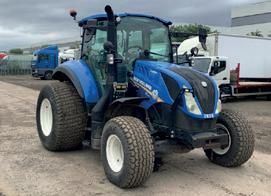

























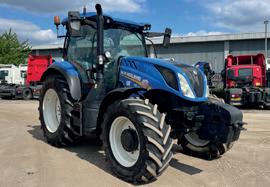



































































































































































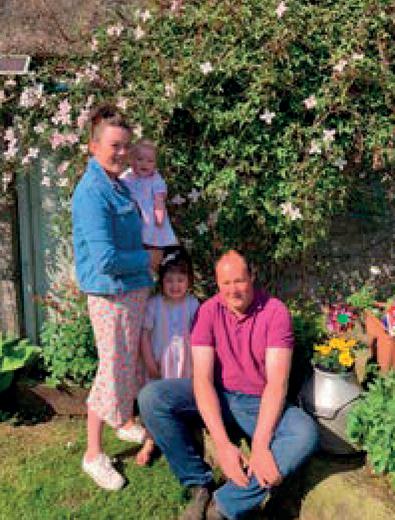






































RAESHAW ESTATE
4000 Hectares
SCOTTISH BORDERS
An excellent opportunity has arisen for an enthusiastic and motivated individual to manage a large-scale sheep flock comprising of 3,800 sheep on a renown sporting estate.
The farming enterprise has undergone significant investment in recent years resulting in First Class facilities for the management of the large-scale commercial sheep flock.
You will need to be pro-active, energetic and capable of undertaking the necessary practical work involved in the management of the blackface sheep flock.
The successful candidate will manage all aspects in the day to day running of the flock and be responsible for 1 full time shepherd, and all seasonal and contracting teams. You will also be responsible for the grassland management of 300 hectares of inbye land and work as part of a team to deliver a large-scale moorland management plan to complement the sporting management undertaken on the Estate.
Although a demanding role, it is an opportunity for the right individual to develop a strong career as part of a forward thinking and ambitious management team.
A generous financial package that reflects the responsibilities of this position together with a newly built large 3 bedroom centrally heated house are available for the successful applicant.
All applications will be treated in the strictest confidence. In the first instance, please call, write or email to: Kevin Stewart Email: Kevin@laurencegould.com Phone: 01383 730538


An exciting opportunity to manage a 300 cow, 360 acre, previously family run Dairy farm in Pilling Lancashire. The business and has an excellent track record for profit. The herd of predominantly crossbred Montbeliarde cattle are autumn block calved, TMR fed and milked through a 36:36 Fullwood parlour. The herd is grazed in spring and summer. Milk is supplied to Arla on an Aldi contract.
Responsibilities would include the day to day running of the farm, management of the current team of 4 and working with the owner on future investment.
Due to the nature of the role you will be required to live on site in the 4 bedroom house provided.
A basic salary with house at minimal rent, KPI bonus and profit share will be worth well in excess of £50K for the right candidate with the opportunity to share farm at a future date
Applications with CV and covering letter to davidrwilk@gmail.com



We supply;
• Calves
• Milk Powder
• Hard Feed
• Vet & Med plus Veterinarian support
• Full tuition and training
• Fixed contract rearing fee
• PLUS performance bonus
Contract Rearer to supply;
• Suitable shed (min. 300 sqm)
• Labor
• Straw
• Water
• Electric
• Must be in a TB4 area
Howard Farms and Farming Partners are recruiting new calf rearers for our expanding Fully Integrated and Regenerative Dairy/Angus beef supply chain. Each Farming Partners Dairy will deliver 2 week old calves into a designated calf rearer in February and March. Howard & Co Farming will collect the weaned calves at 15 weeks old in May & June.
Please contact Joe Howard for more details 07793 494720 or jhoward@howardfarms.co.uk



Job title: Sales Manager Location: South England
Closing date: 5 Jul 2024
Are you passionate about Agriculture and looking to work for a progressive farmer centric organisation whose purpose and values are core to our success?
Sales Manager Feed - South
£ excellent with bonus, company car & benefits
Reporting to the Head of Agri Feed Sales, you will be responsible for driving front-end commercial activity for our Mole Valley Feed Solutions business. Leading our Southern field-based feed sales team you will deliver a consistent sales approach for our Farmer Shareholders and farming customers.
Responsibilities:
• Working with the Head of Agri Feed Sales you will develop a sales strategy that is aligned to the core values and objectives of the business
• Working alongside Head of Feed Agri Sales to ensure we are aligned in our approach, we are fit for the future and we lead the industry in the delivery of knowledge, services and products
• You will manage a sales team capable of focusing on the customer and responsible for the execution of the business strategy who have the ability to deliver product specialisms, industry leading knowledge, advice and work together to deliver growth
• Lead the ruminant sales team in the South, sharing knowledge, skills and best practice from a commercial and nutritional perspective in order to deliver on our farmer shareholder ambitions whilst growing margin, volume and revenue
To be successful in this role you will have sales leadership experience gained within the Agri Sector, you are a commercially driven focussed individual with a passion for delivering results.
Our positions are supported with a thorough induction and management development training plan, whilst benefiting from a range of benefits to include: Company car (extensive list of Electric and hybrid) up to 25% staff discount, 33 days holiday (inc BH) and pension.
For more information on any of the vacancies please go to: JobsInAgriculture.com





Employer: Latham Farms Ltd Location: East Midlands Region
Salary: Depends on experience but not a limiting factor for the right person
Closing date: 27 Jul 2024
YOU WILL BE RESPONSIBLE FOR 600 COWS AND FOLLOWERS NEAR NEWARK IN NOTTINGHAMSHIRE.
This is a great opportunity for someone wanting to manage a well- established, successful family-owned dairy business, reporting to our farm manager. Responsibilities include all the day to day running decisions of the dairy unit, herd health, team management and leadership.
Our farm:
· 570 hectares utilising 430 hectares for 600 seasonally calving cows and followers
· A modern 40 : 80 parlour for twice-daily milking supplying excellent cheese contract
· Grass based system supplemented with parlour concentrates
· Self-feed silage in winter for 400 cows with silage from bunkers for the rest
· We continually invest in the farm infrastructure to maintain an enjoyable working environment for our team. Most recently we have invested in the parlour, self-feed silage clamps, additional cow tracks, electric foot crush, shedding gate with an auto foot bath
In return the farm provides:
3-bedroom detached house in the village of Averham with garden, log burner and views of the fields behind. The local area is well served with several good schools and local shops are within a 5 minute drive to Southwell or Newark
· On-going coaching for your individual development with the local farming training and discussion groups.
· An enthusiastic team
· Full Protective and Hi-vis clothing
· Direct employment with an excellent salary and pension contributions
For more information on any of the vacancies please go to: JobsInAgriculture.com

BCP Council has an incredible range of countryside sites managed for nature. From harbours and seafront cliffs, to urban heathlands, woodlands, saltmarsh and meadows. With 13 SSSI’s, SPAs, RAMSAR sites and Local Nature Reserves, our sites have extensive areas under agri-environmental schemes using cattle, ponies, sheep and goats for conservation grazing. Supported by a fantastic army of volunteers and with several visitor centres.
The Grazing Ranger helps to deliver the conservation grazing management on our Countryside sites. Working as part of a 33-strong Countryside team for the Local Authority, making a difference for the livestock we manage, but also the wildlife on our nature reserves and the local communities who depend on them.


OAKES MILLERS LTD
RAW MATERIAL BUYER AND STRAIGHTS TRADER

An exciting opportunity to join an ambitious, talented and experienced commercial team. The Oakes Millers Group is a major player in the UK Ruminant, Equine and Small Holder Markets. The company includes the HJ Lea Farm feeds business and the Dodson & Horrell Equine business. The group supplies customers across the North-West, UK and Internationally. The company operates a number of mills across Cheshire and North Shropshire.
Oakes Millers has a very experienced and capable buying department, however the business has grown significantly over the past few years, both organically and through acquisition. Any successful applicant will have a portfolio of commodities and products that they will be immediately responsible for. However, the appointment will be made with the intention that they will be able to grow in the role, and eventually become the department lead.
The successful applicant, who will report to the Managing Director must be able to:
• Understand commodity prices and risk
• Feedback market trends, risks and opportunities to the wider commercial team
• Be a key decision maker in the purchasing of raw materials
• Build relationships with traders and farmers
• Resolve any supplier issues
• Purchase non manufactured products and assist in their positioning and sales
• Keep the wider sales team up to speed on raw material market changes
In return we offer:
• Highly competitive financial and benefits package commensurate with the status and importance of the role
• Pension
• Company car allowance
Please apply to: Edward Lea, Managing Director, Oakes Millers, Aston Mill, Nantwich, Cheshire, CW5 8DH
Email: info@hjlea.com
Applicant deadline: July 20th 2024

We are looking for a trainee or qualified Land Agent to work primarily on the rural side of our small, busy market town practice in Clitheroe, Lancashire.
There is a wide variety of work available, including Sales & Purchases, Valuations, Environmental & Agricultural Grant Schemes, Landlord & Tenant matters, planning and compensation.
Please submit your CV and a Covering Letter to info@pallisters.co.uk. Applications must be received to the office or by email by 5pm Monday 8th July.
Please see full advert online at https:// www.pallistersproperty.co.uk/

The Coach House 28 Duck Street Clitheroe, BB7 ILP
‘Friends1st’ is the UK’s largest, offline, longest running, introduction agency for Christians. We prioritise commitment; we’re exclusively for Christians; we keep our members accountable; we provide helpful resources. We’ve had many farmers and people living rurally find a special companion. Isn’t it time you used our service and found your soul mate? Call 0121 405 0941 today. www.friends1st.co.uk/ christian-farmers-dating

•
• BOREHOLE DRILLING FOR DOMESTIC AND COMMERCIAL PURPOSES
• WATER SYSTEMS INSTALLED
• 24HR BREAKDOWN SERVICE



• BOREHOLE PUMPING INSTALLATIONS
• FREE QUOTATIONS AND SITE VISITS THE POTTERIES GARAGE SMALLBROOK LANE, LEIGH, WIGAN, LANCS, WN7 5PZ. TEL: 01942 871900. FAX: 01942 896843. Out of office: 01942 893660 Visit our Website www.waterwellengineers.co.uk Email: sally@waterwellengineers.co.uk


* Freeze only Quality Colostrum *
* Thaw 4litre pack within 20mins *
* Feed immediately after birth *
For more details contact BRITMILK tel : 01387 750459
info@britmilk.co.uk www.britmilk.co.uk



The only UK company that solely specialises in On Farm Cooling Equipment & Heat Recovery Systems Nationwide. For further details please call S. W Refrigeration
01392 210344 or Paul on 07974 140949

New & Used Bulk Milk Tanks
Second hand tanks currently available: Mueller 8000ltr, 9000 & 12,000 ltr
Fabdec 4000ltr & 6000ltr
Packo RMIB 3800ltr & RMIB 6000 ltr
New Heat Recovery units in stock 01772 780806 www.ddcooling.co.uk



Complete with Honda engine and Electric motor. This unit is ready for work and can be delivered anywhere in the UK.
Livestock Supplies LTD
Ashley: 07831 887531, Office: 01829 260328, Will: 07769 974476 www.livestocksupplies.co.uk
DELAVAL BLUE Diamond 32/32 fast exit, 2010 MM25s transponders etc 01260 226261 (T)
HEAVY DUTY replacement troughs, for any parlour. 01260 226261 (T)
WOOL WANTED All types required. Full payment. L.Pierce Wool Merchant: Scotland & North England - Grace Dobson- 07743 628405 or 07754 702187 or Southern England and South Wales- John Wood 07980 655637
IAN SMITH Livestock Scanning Services. Across the North -Tel: 01200 445750 or 07976 539197 (T) J.P WHITTER (WATER WELL
COLLECTORS OF DEAD ANIMALS THROUGHOUT LANCASHIRE AND CHESHIRE
Competitive prices
PLEASE CALL:
01704 893161 or 07768 051800 (24 hrs)
Martland’s the name, knackering’s the game Established over 100 years
Daily collections of all types of fallen stock throughout the North of England.
Tel: 01524 261144 or 01524 263022 or 01274 833196
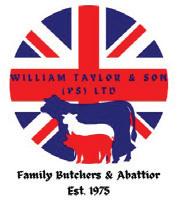
BRIDGE Lancs, Cumbria, Cheshire. Yorkshire. WILLIAM TAYLOR & SON (PS) LTD

BRAND NEW & UNUSED Fibreglass CALF -O-TEL
Calf Hutches. Complete with fencing. A large selection of all animal and calf feeding equipment and all other associated products also available. Massive saving on list price Livestock Supplies Ltd. Ashley: 07831 887531 Office: 01829 260328 www.livestocksupplies.co.uk






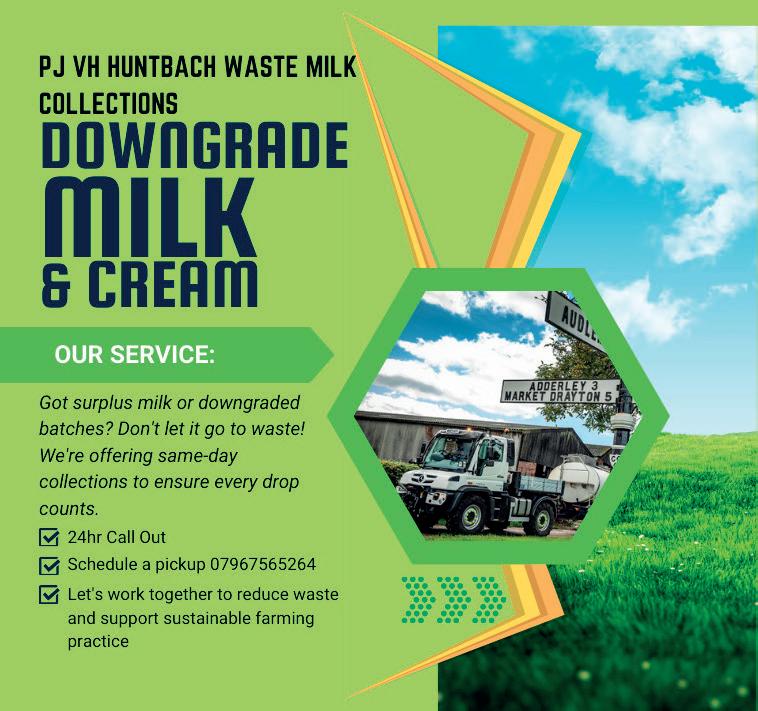
A weekly selection of freshly calved & in-calf dairy cattle sourced from the UK. All guaranteed and delivered anywhere in the UK Finance can be arranged.
Livestock Supplies Ltd
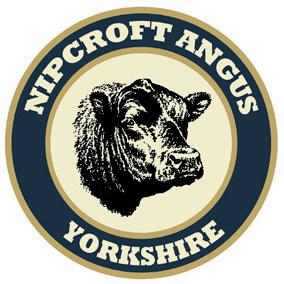

A range of genetics from the top family lines in the UK and America. Please feel free to
–
– 07816 173689
739120



Ashley: 07831 887531, Office: 01829 260328, Will: 07769 974476 www.livestocksupplies.co.uk





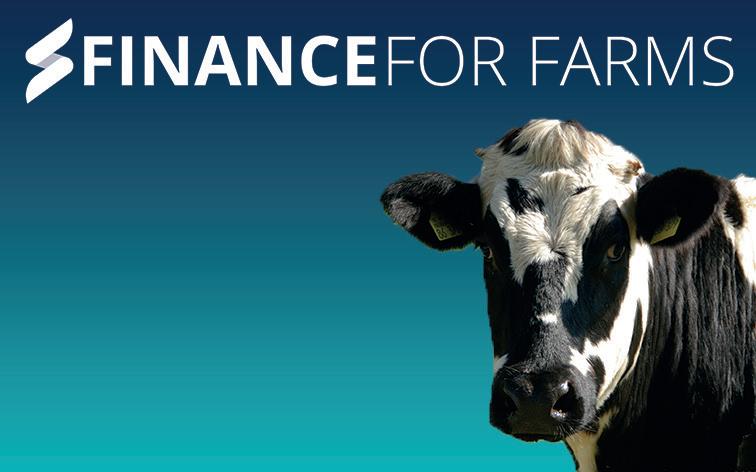

Available in suitable batches delivered to most parts of the country Continental Bull and Heifer calves 3-5 weeks old available now. Quality store cattle sourced directly from Welsh/Shropshire Borders Farms, delivered to your farm.
BRITISH FRIESIAN BULLS FOR SALE
Dam classified 94 points. Brother with Genus, Sired by GTW
Tel Alan 07508 739340 Staffs/Leics (P)
PEDIGREE ANGUS 2 Bulls, 15 months - 2 years, both by Quaker-Hill Dead Centre. TB tested, Bio Best high health scheme. Closed herd. Also 2 Pedigree in calf second calvers to Rawburn Black Bush. Tel: 07967 171941 Abbots Bromley Staffs (P)
Red and Black Limousin stock bulls
months. Some Semen tested. TB4 area. Younger bulls also available

•
conformation & muscling • Exceptional temperament.

Telephone: 07849 153733
• High health status. TB4. • Ready For Work • Semen tested Prices start from £3,000 Also available a selection of cows and heifers for sale.
Ready to work, delivered direct to your farm, very quiet, easy calving. Also females available. Health monitored, closed herd, full pedigree with each animal, Red tractor. Semen Available.
Tel: 077157 64351




Biscon Meal (Approx. 12% Protein /14 ME) £195 ex store
Cereal Mixture (Approx. 14% Protein /13 ME) £205 ex store
Cereal Blend (Approx. 16% Protein /13 ME) £225 ex store
Mixed Pellets (Approx. 18% Protein /13 ME) £245 ex store
One Tonne Bag Collections
Mixed Pellets (Approx. 18% Protein/13 ME) £275 ex store
Biscon Meal (Approx. 12% Protein/14 ME) £225 ex store
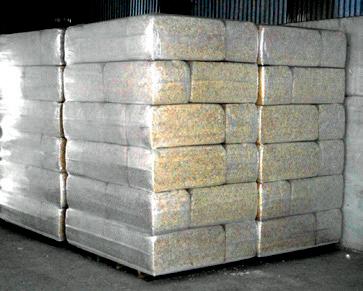

(Moisture Level Between 16% - 22%)
*Applied in one operation* (No Additional Mixing) *Alkaline Treatment* (Ph 7.5-8.5)
*Protein Incresed*(by 30% - 40%)

*Excellent Stability* Tel: 01387 750459





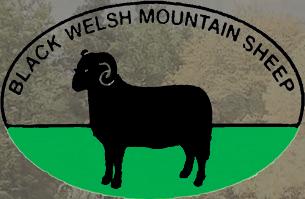

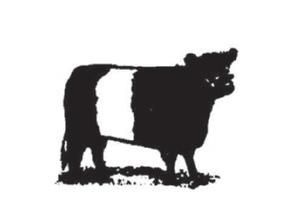
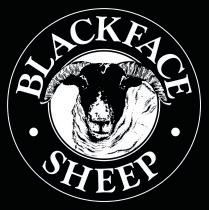








Dorset DT1 1EF
Breed Secretary: Marguerite Cowley
Telephone / Fax: (01305) 262126 dorsetsheep10@outlook.com dorsetsheep.org.uk

Chairman: David Wilson 07939 531959



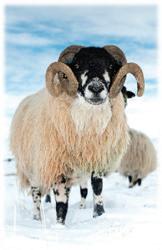

Secretary: Sarah Fleetwood 07808 781507 sfleetwood10@gmail.com www.dalesbredsheep.co.uk








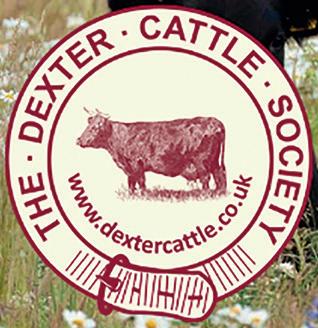

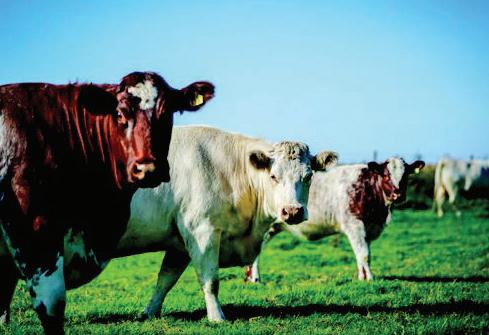
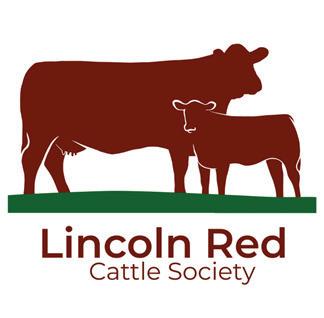




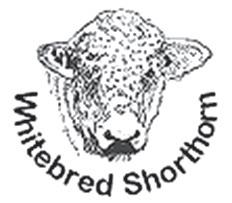
Whitebred Shorthorn Association Ltd www.whitebredshorthorn.com
Annual Spring & Autumn Sales held at H&H, Carlisle for more information please contact email: whitebredshorthorn@gmail.com















01835 864555 Email: secretary@zwartbles.org www.zwartbles.org
















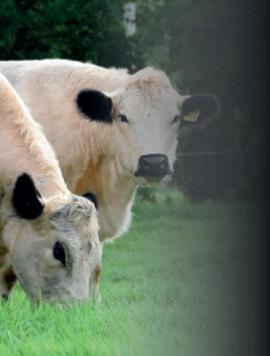






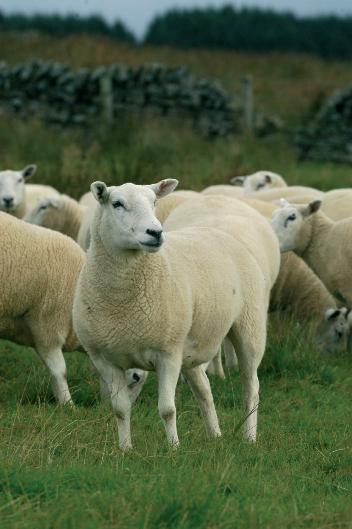





























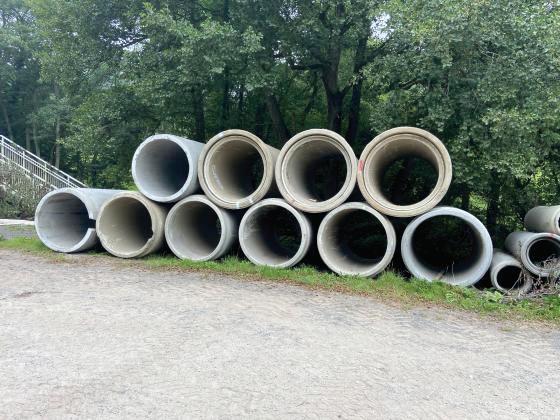








We are currently aware of a number of fraudulent advertisers attempting to sell items within the classified section. Whilst we endeavour to protect our readers and pull these adverts before going to press, sometimes they may unfortunately appear in print.
Please be mindful before entering into any deals you PROCEED WITH CAUTION with the seller and do not part with money until goods are received.
Farmers Guardian are NOT responsible for any part of the transaction that takes place with the seller and the buyer.















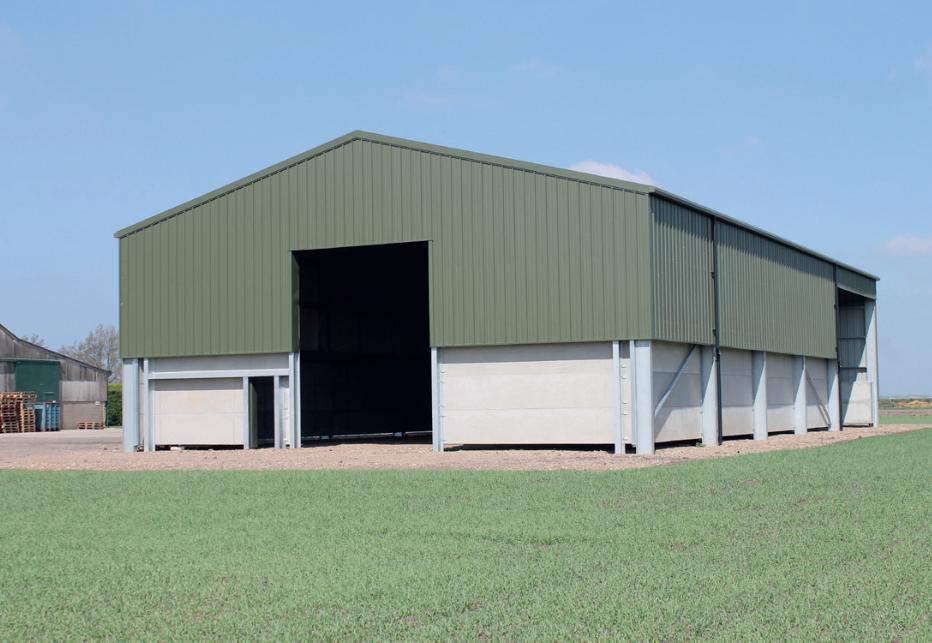



To Crop & Livestock Stores, Poultry Sheds, Cattle & Pig Buildings, Workshops & Barns. Frost & Condensation Protection.
Temperature Control Energy Saving Tel: 01405 812682 www.webstersinsulation.com info@webstersinsulation.com
Fantastic opportunity to generate electricity and heat from wood chip.
For sale is a pair of CHP units. Commissioned in September 2016. Accredited for wood fuel drying. 12 years of RHI remaining on the OFGEM renewable heat incentive scheme. Current Tariff for heat is 7.78p kWh. No tier 1 and 2 tariffs. Paid for what you produce. Each pair will generate 90 kWh electricity and 180 kWh of heat, making this a great investment. Can be viewed operating. Somerset - Buyer to dismantle. 07860 173293 or 07949 027069 £POA









Trianco 80 heater self feed anthracite central heating boiler. Telephone G Brooks 01132 852395
CHESTNUT FENCING STAKES, mixed halves & quarters. 10/ 12cm tops. National delivery available. Mob: 079852 98221 colin@cwpfencing.co.uk Nationwide (T)
• Septic Tanks
• Diesel Dispensers
• Bunded Oil Tanks
• Waste Oil Tanks
• Water Tanks
• Diesel pumps, hoses, filters & nozzles
FREE UK Mainland Delivery* TanksForEverything AlwaysBESTprices: 0800 0568 350 www.tanksforeverything.co.uk



A complete 28 by 10 home with luxury shower room and kitchenete, Gas water heating,
and
insulation DELIVERED TO
FOR £28.000. Complete. Available Now! We also offer our customers a wide range of Holiday Homes and Cabins Info@homeannex.co.uk for more details. Mobile 07733 390801 for information and planning advice or to discuss your requirements.
PaynettsFarm,CranbrookRoad, Goudhurst,Kent,TN171DY
Tel:01580212141
Mob:07710480259
Email:info@timberspecs.com






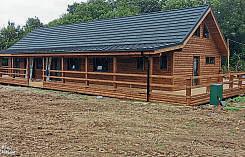



Mobilehomes,holidaychalets,loghomes. Allbuilttoyourrequirements,deliveredand erectedanywhere,weofferbuildsinround, 360mm to up log random and cavity square, thick.Housessuppliedtomeetbuilding controlregulations.




Bespoke Design Service AndTechnicalData


Tospreadthecostofyourinvestment, wehavepartneredwithiDeal4Finance andTownandCountryFinancetooffera rangeoffinanceoptionstosuityourneeds, includingmortgagesandshorttermloans.
Formoreinformationonallthebuildingspleasevisitourwebsite. Web:www.timberspecs.co.ukEmail:info@timberspecs.com
Tel:01580212141Mob:07710480259
New Hanson Grange comprises a traditional farmhouse set in limestone walling, with traditional gardens and flower beds. The farmyard comprises a comprehensive range of traditional and modern agricultural buildings which have the ability to house livetsock, storage or a number of alternative potential uses. A short distance from the farm yard there is two further detached cottages, with the option for either occupation by family members or provide rental income. The property also benefits from a small scale shepherds hut tourism business, with the opportunity to expand if desired and lies in 188.91 acres or thereabouts of productive grassland and woodland; with an option to purchase a further 20 acres of additional mowing land is desired.
Offers over £2,750,000


The Rural Payments Agency (RPA) has temporarily closed the Sustainable Farming Incentive (SFI) scheme to new applications pending a further revamp this summer. When the scheme re-opens, it will effectively combine the 2023 SFI offering with Mid-Tier Countryside Stewardship, plus some new actions into one expanded scheme. Here, we focus on two main areas of change.
The popular herbal leys action has, until now, required only that agreement holders ‘establish a herbal ley’. In the 2024 update, this has been formally defined as a mix of at least one grass species, two legumes and two herbs or wildflowers. Inorganic fertiliser applications are now restricted to 40kg per hectare of nitrogen.
The new requirements are much clearer and the fertiliser restriction should help prevent herbal leys failing in a more intensive input regime. To avoid ongoing re-establishment costs, farmers should consider carefully where herbal leys will best establish on their land; a new herbal ley needs to be maintained in the same location for the full three years of the scheme.
There are three new moorland management actions for different stocking densities – from £20/ha for a maximum of two hill ewes (or equivalent)/ha; £53/ha for one ewe/ha, and £66/ha for only halfa-ewe/ha, which is rather lower than most existing Higher-Tier or Higher Level Stewardship schemes on moorland.
Supplements are available for grazing moorland with cattle or ponies of between £7-£23/ha, depending on the proportion of cattle or ponies being grazed. A supplement for Native Breeds at Risk (NBAR) of up to £11/ha is also available on moorland and includes

some sheep breeds for the first time, including Herdwicks.
However, to qualify, animals need to be registered pedigree, which is not common practice with many sheep breeds. The NBAR supplement is available on in-bye ground as a supplement to low input grassland options, paying £92/ha for grazing more than 50% pedigree native breeds or £146/ha for more than 80%.
New actions are available for shepherding on moorland, which can be stacked with moorland management or undertaken on their own. The basic action pays £33/ha and requires stocking and shepherding calendars, but no stocking restrictions. If all stock is off-wintered for at least four months, the payment rises to £43/ha, which values off-wintering at only £10/ha, significantly less than it is likely to cost.
For the first time since 2014, there will be payments – of £27 per 100 metres – for maintaining dry stone walls. The Capital Grant scheme remains open for those walls that need full restoration, rather than gapping up.
The revised SFI scheme will hopefully be open for new applications from late July. As always, it is important to seek independent advice to help choose the best actions for your land.
David Morley is the head of conservation and environment at H&H Land and Estates. Call 01228 406 260, or email David. Morley@hhlandestates.co.uk





71 ac/29ha.Must be viewed to be appreciated OIRO £1,600,000









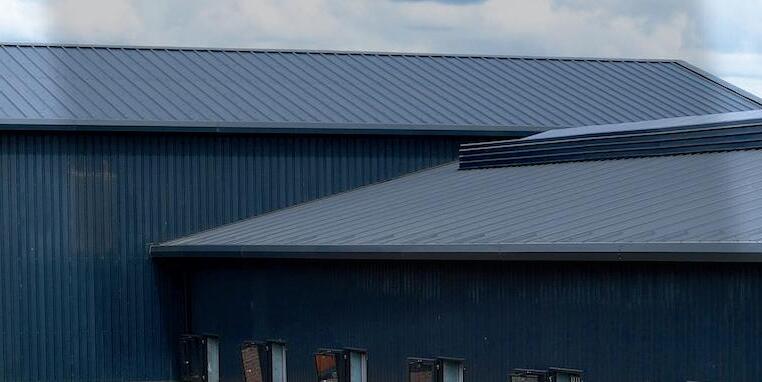












Sites of 1- 1000 acres required for residential development.
If you think that your land has potential for development, or you have been approached by a developer, then you will need expert advice that is not available at traditional sources.
Michael Rutherford is a specialist agent acting and negotiating for landowners. Contact me for a confidential and expert consultation at no cost. All areas of the UK covered.


































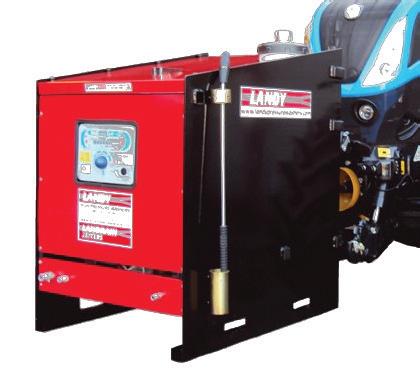











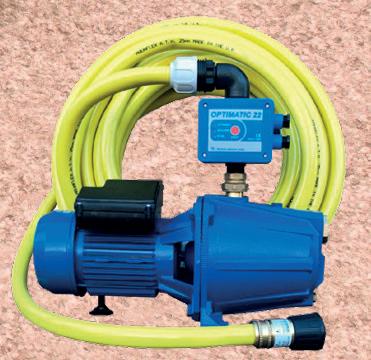































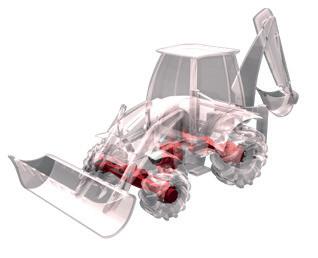
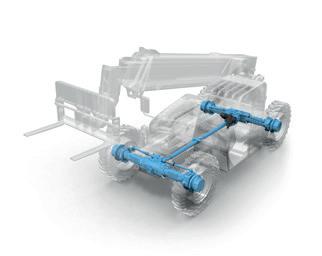










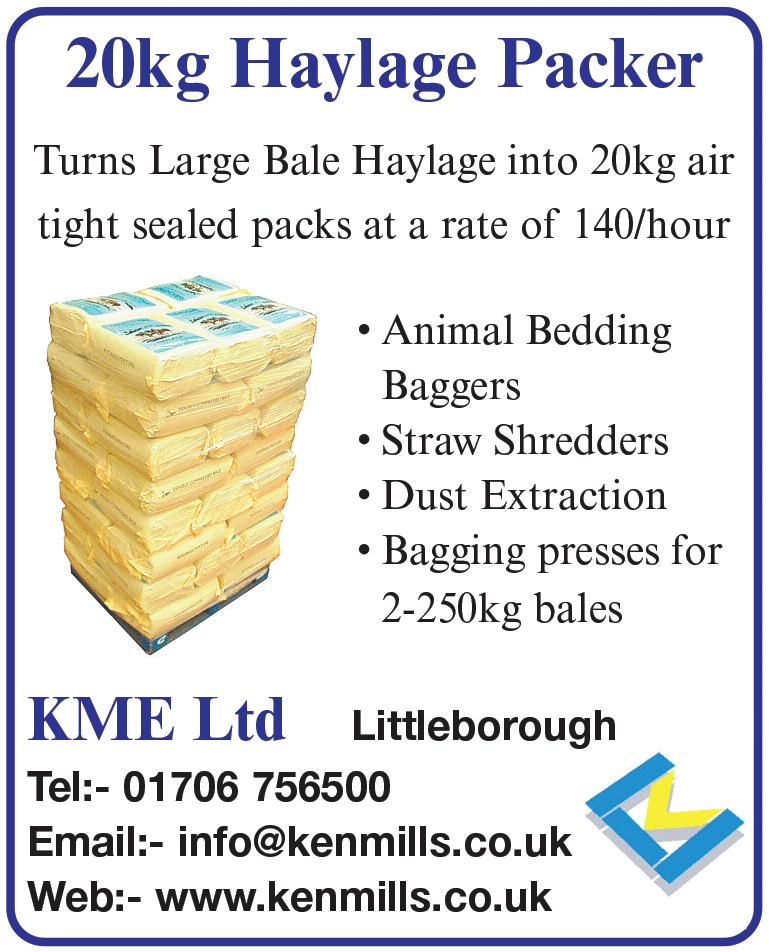




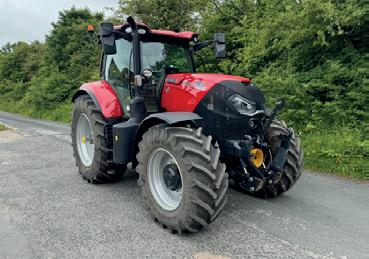



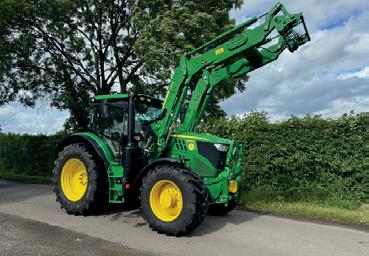












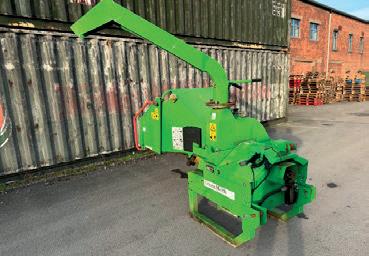

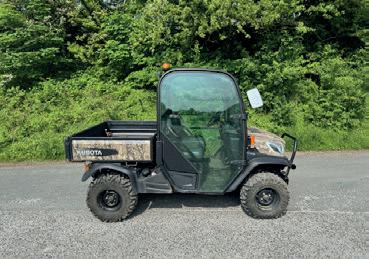
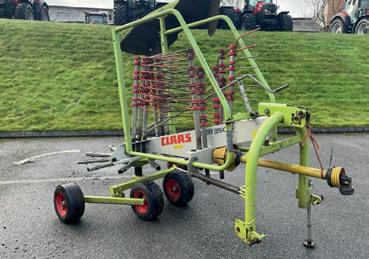








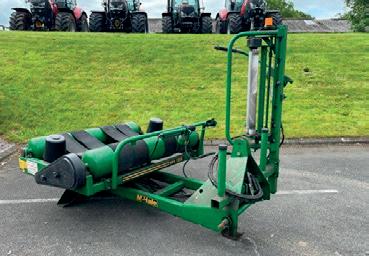






































































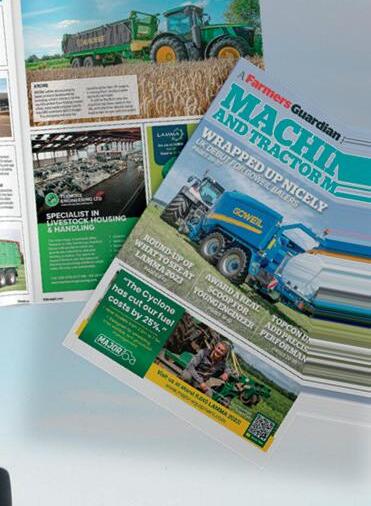





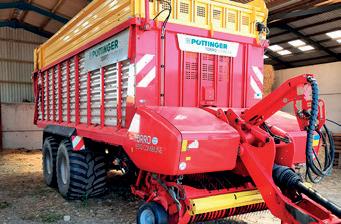
























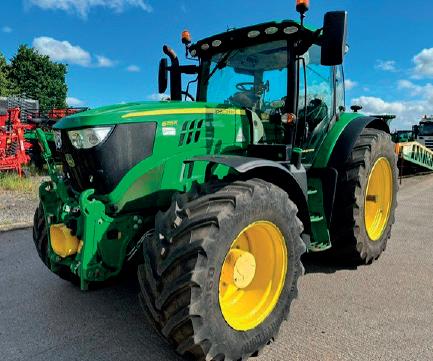
JOHN DEERE 6155R
1970 hours, AutoPowr 50kph, F/Links + PTO
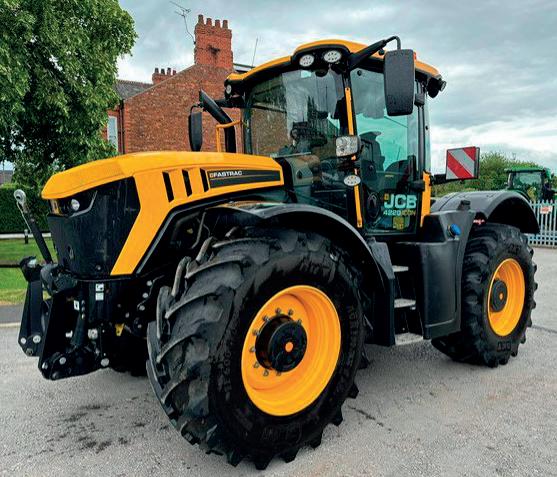


2023,1326 hours. Dyna7
+VAT
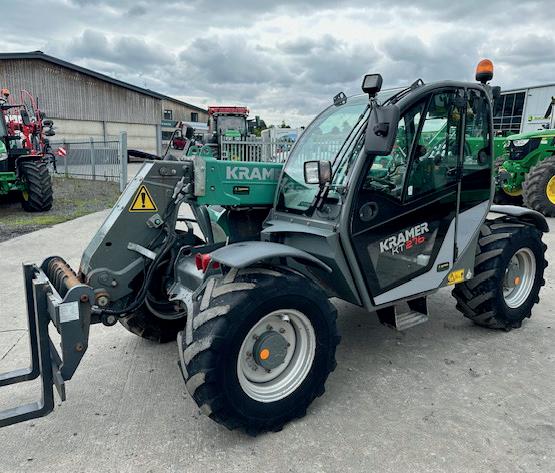
DEERE 6155R 2022, AutoPowr 50kph, F/Links + PTO, 2626 hours



KRAMER KL12.5 2018,557 hours, Compact Shovel £31,500 +VAT JOHN DEERE 3038E


2022,1623 hours, Compact Tractor £18,500 +VAT BAILEY TB14,




































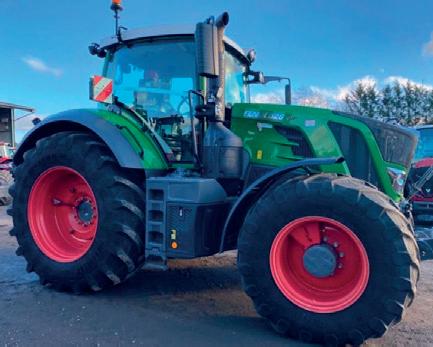









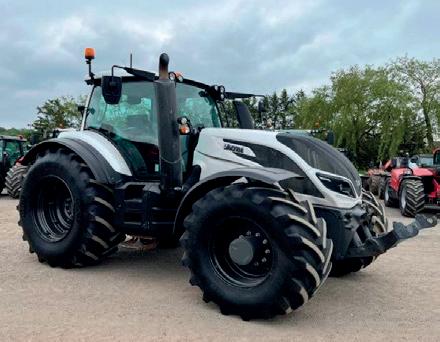






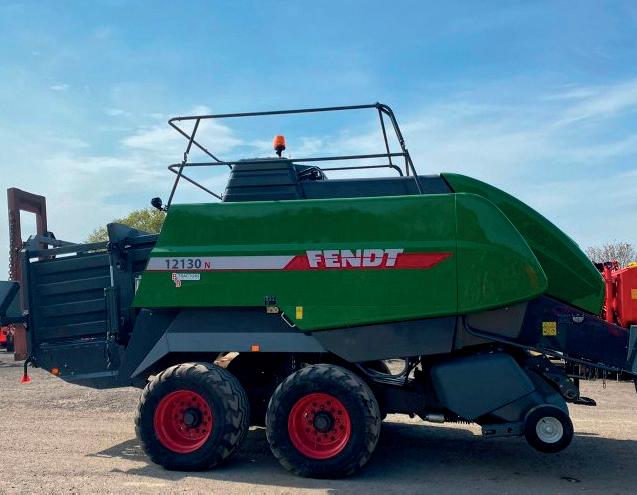
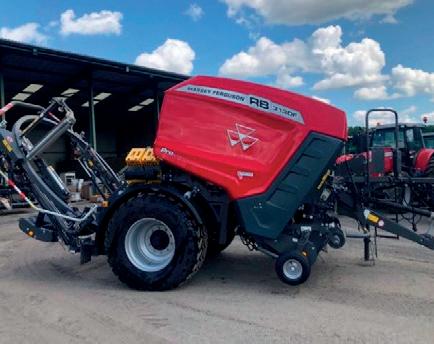





Edited by Toby Whatley
– 07583 054 831 – toby.whatley@agriconnect.com For more machinery content, go to farmersguardian.com/machinery-news-hub

Regenerative agriculture event Groundswell showed an expansion of technology and machinery for alternative crops and options to maximise benefits from nature and productivity grant schemes. Toby Whatley reports.
CURRENTLY supplied through the Progressive Farming Company, the Burge Bale Unroller is from a Devon-based start-up which has created a hybrid bale and water pipe unrolling frame designed to be pulled by ATVs and UTVs.
The design reflects other round bale unrollers where the support frame is lowered with pins hammered into the bale centres.
A manual winch lifts the frame
and bale, with the bale then lowered and unrolled to provide buffer feeding.
The implement can be fitted with a pipe rolling frame that supports a claimed 400 metres of 25mm pipe, allowing use of the machine for feeding and the movement of overland drinkers.
Prices start from £2,300, with the pipe attachment adding £450.

CAPABLE of supporting a flock of up to 472 birds, the German-made FarmerMobil is designed to allow free-range egg production through a rotational pasture system.
Power is supplied from a roofmounted solar array, with bulk feed and water tanks for three days of consumption.
The fully-automated unit conveys eggs from the nesting area which can be collected at the rear of the unit for packing and distribution.
Openings on the sides of the unit allow the birds onto the pasture, with automated nighttime closure. Relocation
of the unit is carried out by a tractor or handler, with hydraulic services used to power the onboard filling auger.
Costs for the modules start at £47,000, with the company claiming an return on investment of three to three-and-a-half years.

SUPPLIED into the UK by King Feeders, the Zago compost trailers operate in a similar process with a TMR mixer wagon, but with significant modification to cut and shred heavier green waste material.
Displayed at the event, the 9cu.m and 20cu.m versions use a pair of internal mixing augers with bolt-on cutting faces, with lower screens to generate a uniform shred size.

from the trailer with a conveyor, which can be used to create windrows or stockpiles.
Power demands of 50-150hp are required, with the option to fit a self-loading crane or operate the unit in a semi-mobile position with an electric motor connection.
The company says the mobile design of the system also allows greater flexibility in terms of planning requirements for new businesses adding pasture poultry.

The finished material is removed







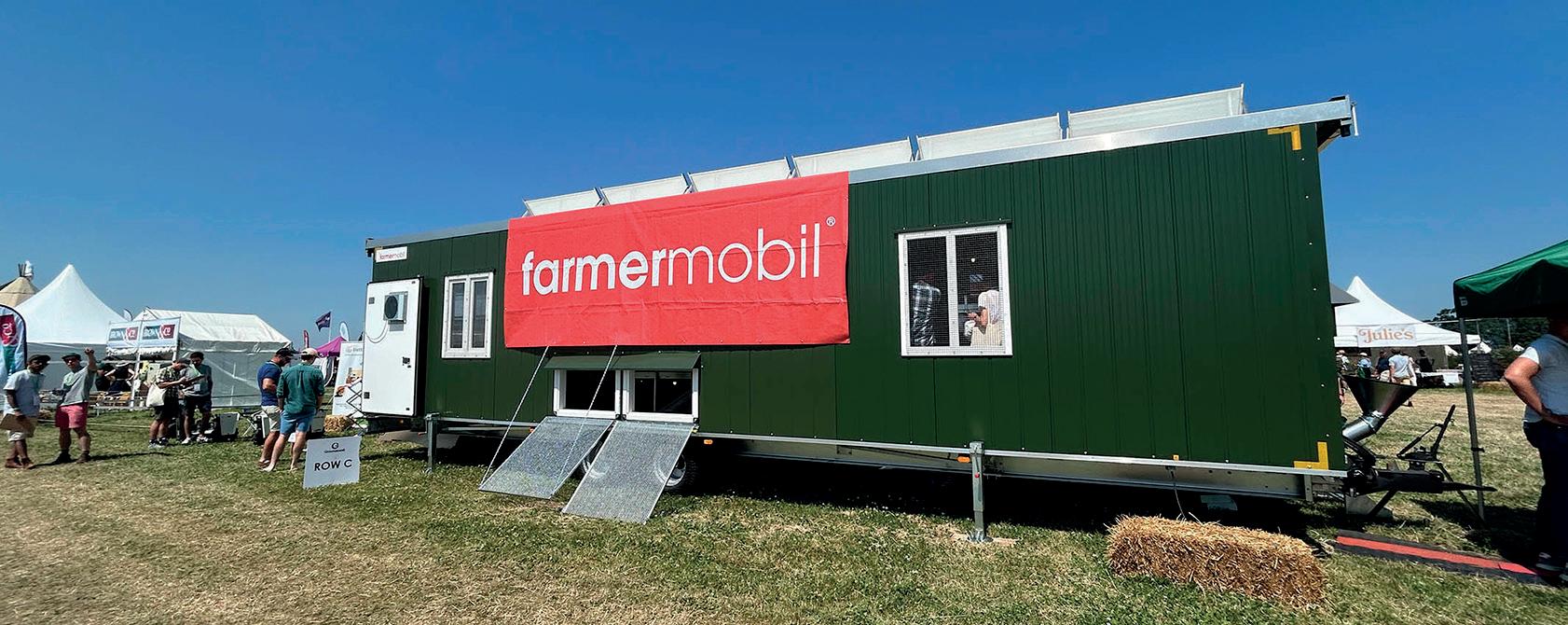





DEVELOPED to provide greater working flexibility for its inter-row hooded sprayers, the Flexihood uses a fabric membrane and supporting ribs which allows the application width to be adjusted depending on the crop.
The membrane is attached to individual ground-following side shields which the manufacturer says provides a consistent seal between the sprayed area and crop as soil conditions change.
The design claims a 100mm crop clearance when fitted at 200mm centres.
Garford says the units have been used in tree nurseries, with options for ornamental and bulb growers.
For servicing, the spray tip and nozzle body fold out of the unit, with a 110-degree 015 flat fan nozzle fitted for most applications.

HEREFORDSHIRE-based Landwrx showed a 7.5-metre wide, 10-row version of its inter-row seeding toolbar at the Groundswell 2024 event.
Initially designed to establish grass within maize, the spacing of the 30 coulters can be adjusted to provide users with the option to operate the machine as a conventional drill to establish cover crops or oilseed rape.
Each of the parallel linkage units can be fitted with a tine or doubledisc coulter with a following press

BUILT by Lithuanian manufacturer Laumetris, the KP-4 is the first machine to be brought into the UK by British hemp processor Fibra.
The machine uses four folding cutter bars staggered along the implement’s length, with a 600mm vertical space between them.
Belt driven from a pto-powered drive system, the machine operates in a similar process to a trailed offset mower.
The four-stage cut is required
to reduce the tough hemp plants into manageable lengths for baling and processing.
A minimum up-front power of 180hp is required, with a cutting speed of 20kmh.
Height control of the unit is achieved using a hydraulic lift on the rear axle.
Fibra says that recent changes to hemp growing licences have given greater opportunities to grow the crop, which can provide a low-cost, higher margin spring crop within arable rotations.
OPERATED from either a telehandler or excavator, the Hedgeweaver combines manual preparation and mechanical hedgelaying.
Before its use, hedge plants are partially cut using a long-handled chainsaw, with all the standing brash left attached.
The Hedgeweaver is then passed over in the direction of the cut up to three times, forcing the plants down
and binding them into a laid profile as they pass through the device’s funnelling design.
The manufacturer says that the system allows an output of up to 150-200 metres per hour, including the manual pre-cutting.
For landowners looking to apply for hedgelaying grants, the implement could provide an option to significantly increase the distances of hedge laid during the available period.
wheel, with seed supplied from the tank and an Accord-sourced metering system.
In addition, an inter-row weeding kit can be added.
Coulter pressures of between 20-120kg are claimed by the manufacturer, with a minimum spacing of 180mm.
Units are eligible for support through the Farming Equipment and Technology Fund grant scheme, coming under the option FETF210 inter-row companion drills, with unit costs starting from £35,000.
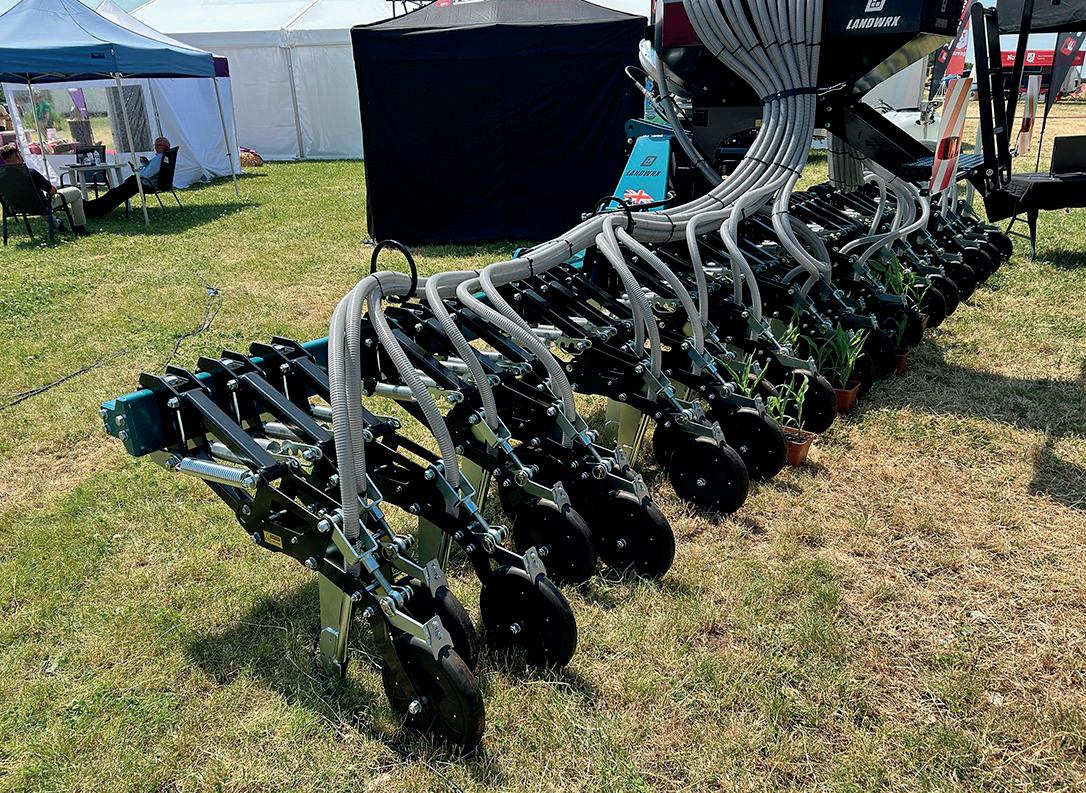
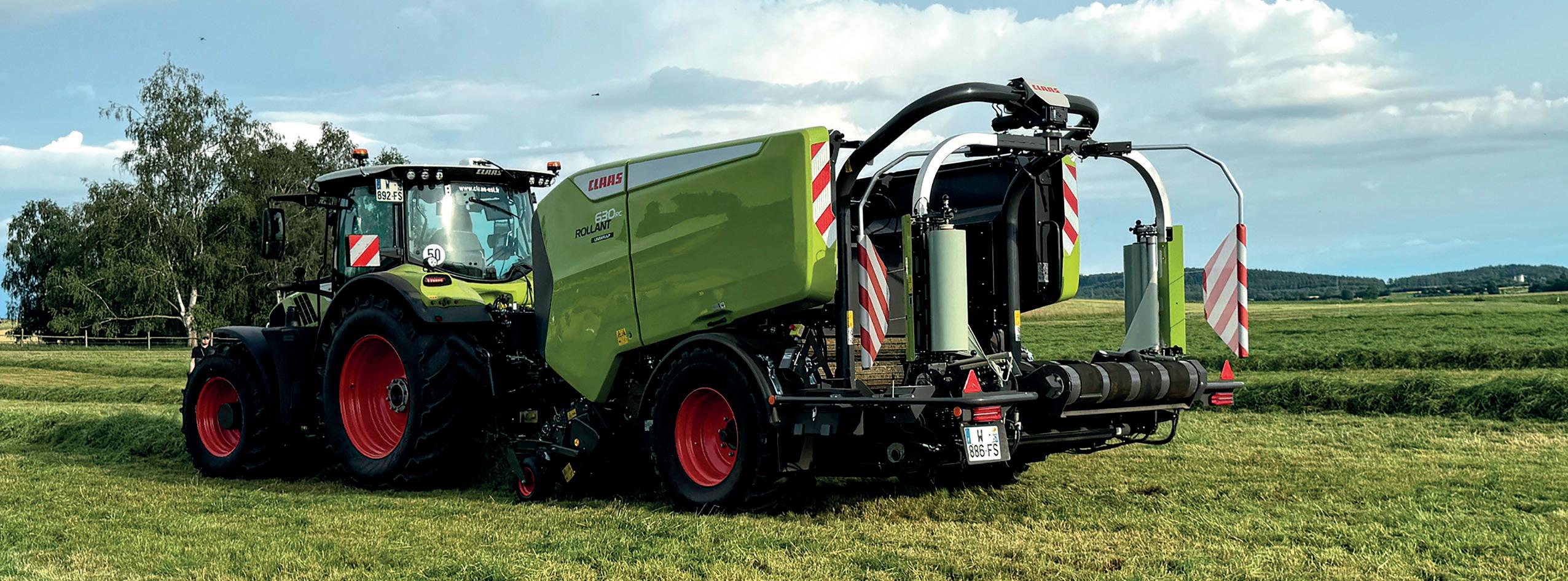
Tyre options offer up to 600/55 R 26.5, with a tracked profile for better mud-clearing properties.

Claas has launched its latest generation combi baler-wrapper with the Rollant Uniwrap 630 RC. James Huyton reports from the event at the Saulgau factory, Germany.
The Rollant Uniwrap 630 RC is the latest in a long line of fixed chamber baler-wrappers from Claas, with the machine first introduced in 2001.
Launched to replace the current 455 and 454 variants, the latest offering has several changes; key focuses for the machine’s redevelopment were ease of operator use and productivity gains. Designed to focus on silage production, the upgraded and uprated capacities of the 630 RC make the machine well-placed for the UK and Irish market, says Claas.
WITH a push to make crop packaging more recyclable, Claas has put a greater focus on film binding with the latest Rollant. With a maximum pre-stretch that is 10% greater than the previous variant, operators can set the machine to offer a 67% and 82% pre-stretch, depending on the wrap used.
Reducingthetransferspeedfrom eightsecondsto6.5secondshas gained1.5secondsineachtransfer cycle.Combiningthiswithcontinual feeding,thenewmachineissaidto haveimprovedoperationaloutputto matchitscompetitorcounterparts.
Operators have full flexibility when reloading films, with the rearmounted terminal allowing full machine functionality from outside the cab. Claas says changes to the multi-lock wrap replacement system have improved operator access, with a wider gap to thread film between the rollers.
CHANGES to the pick-up reel include redesigned plastic stripper units – a simple change that took four years of product development and testing. The new units are said to offer better wearing properties and durability in operation compared to the previous metal variations. The clip-in system provides ease of unit fitment and removal, simply requiring a flat-headed screwdriver to release the catch. A reworked cam-track design gives a claimed 20% reduction in wear.
As with the former variant, the baler has the same multi-flow pick-up reel with four tine bars. Little has changed from reel transfer; the machine has the same heavy-duty cutting rotor with double tines made from double-hardened boron steel.
The 25-knife cutter bar gives a 44mm cut length, or alternatively, different knife groups can be activated electro-hydraulically, which allows a full-set, half-set
and unengaged mode for nonchopping. All knives are individually secured and can be hydraulically engaged or retracted centrally. To aid crop flow and reduce the risk of blockages, the cutting floor can be lowered by up to 30mm in uneven swaths. A warning system also alerts the operator to any potential blockages or overloads, and advises a forward speed to suit. In the event of a blockage, the cutting floor can be lowered hydraulically through a function in the control terminal.
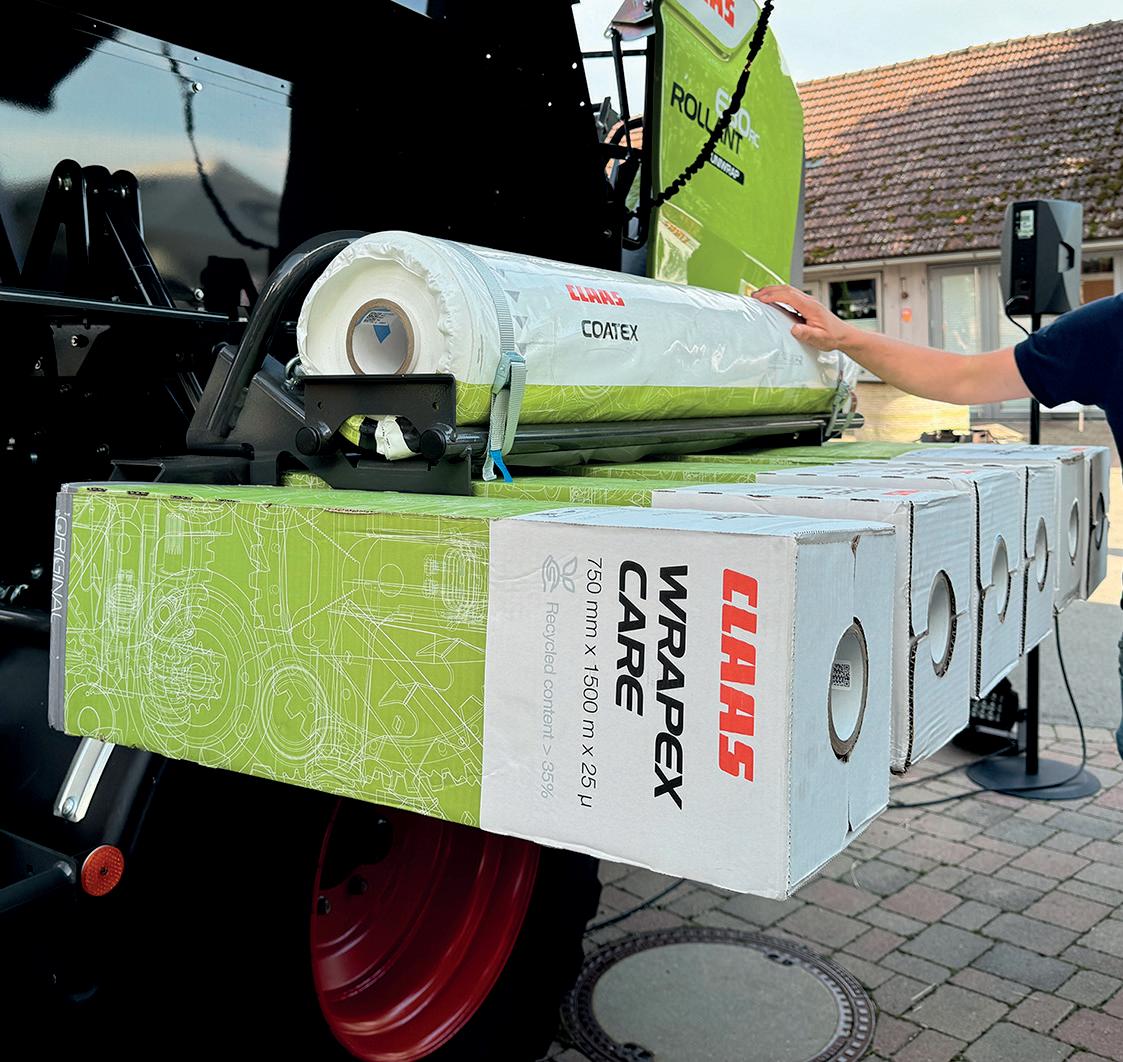




The 630 RC incorporates a drop-down crop roller for easier access to the pick-up reel.

PROSPECTIVE buyers have the option to specify the combi baler with Claas’ maximum pressure system (MPS). A pivoting three-roller segment in the tailgate delivers extra pressure, with the manufacturer claiming there is greater core density extending to the outer bale layers.
At the start of a new bale, the three MPS rollers project into the
THE 1.2 x 1.25-metre bale chamber operates with 16 ribbedprofile steel rollers. Drive shafts have been increased in size, with areas of high load and heavy wear using 55mm diameter assemblies.
The chassis frame profiles have also been increased, with a redesign to aid stability and
bale chamber. The units continually compress the bale as it builds in diameter within the chamber, and with the bale rotating right from the start it is said to create a compacted bale with a 900mm diameter.
The system also allows the operator to adjust the pressure from 60 to 120 bar within the controller.
strengthen points around the tipping cradle. The cradle features new end-stop dampening, which is designed to help machine protection, and similar technology has been introduced to the tailgate. Bale output diameters for the new machine can vary from 1.25m to 1.35m.
ONE of the key changes from the former variant is the addition of a choice between 25 or 17 knives, which can also be operated on a halfset basis and retracted through the controller. Claas claims that reducing the drive chains and sprockets from four to three allows for an increased chain size and sprocket diameter.
The main benefit of this change is extra durability and reduced wear compared to the former system.
A new oil-based lubrication system has also been introduced, with a sensor to indicate to the operator when oil levels are low.
For maintenance, the wrapper unit has been linked to the baler’s auto-lube system.
With full IsoBus compatibility, the combi baler can either be operated through a compatible tractor terminal or through the machine’s own Cemis control unit.



Redesigned plastic stripper units are claimed to offer more durability.





Chains and sprockets have been uprated in size compared to former variants.




















Following a preview at Cereals 2024, John Deere has released the full range and specification options for its new 6M range. Toby Whatley finds out more.
OCCUPYING a base power band from 105-275hp, 17 new models will be offered in John Deere’s 6M range, with either 4.5-litre four-cylinder or 6.8-litre six-cylinder engines.
Depending on the specific model, a 20hp boost will be provided during transport or high-load pto activities. Across the range, hydraulic outputs of 114-195 litres per minute will be available.
The new range has more transmission choices, which are not offered on the outgoing M Series, including mechanical PowrQuad, powershift AutoQuad and CVT AutoPowr. All models are provided with a 50kph option, which was previously unavailable.
The overall range aims to offer a lower-spec tractor without the standard data and control technology integrated with the R Series. Internally, the cabs have been refined; the dashboard has been replaced with an A-pillar-mounted display, and there is a choice between a right-hand console or a new compact CommandArm. Mechanical cab suspension and TLS front axle suspension will be offered.
Users looking to add precision farming systems to the series can


The 6M range covers 17 models from 105-275hp.
choose either a 10.1-inch or 12.8in G5 terminal, which includes Autotrac guidance, IsoBus control and variable rate applications, and will
also be mounted to the cab A-pillar. Users of multiple machines can opt for the integration of the JDLink telemetry system.
Operators of existing 6030 and 7030 Series tractors will find several similarities between the new range and the manufacturer’s existing popular models.

The cab shares some features with the R Series, including an A-pillar-mounted dash.

The M Series roughly reflects the existing R Series, with several models mirrored in R or M designations. Five frame sizes will be offered: short (2,400mm), small (2,580mm), midframe (2,765mm), large (2,800mm), and extra-large (2,900mm). The introduction of the small frame is new for the M Series and provides a smaller wheelbase option for M buyers compared to the R versions.
In a market where several manufacturers have launched increasingly technology-laden tractors, John Deere sees a demand for functional machines for users carrying out general farm and contracting tasks, who do not require complex precision farming and data-gathering services.
Whether this is a trend that continues will be dictated by customer demand and their wallets.
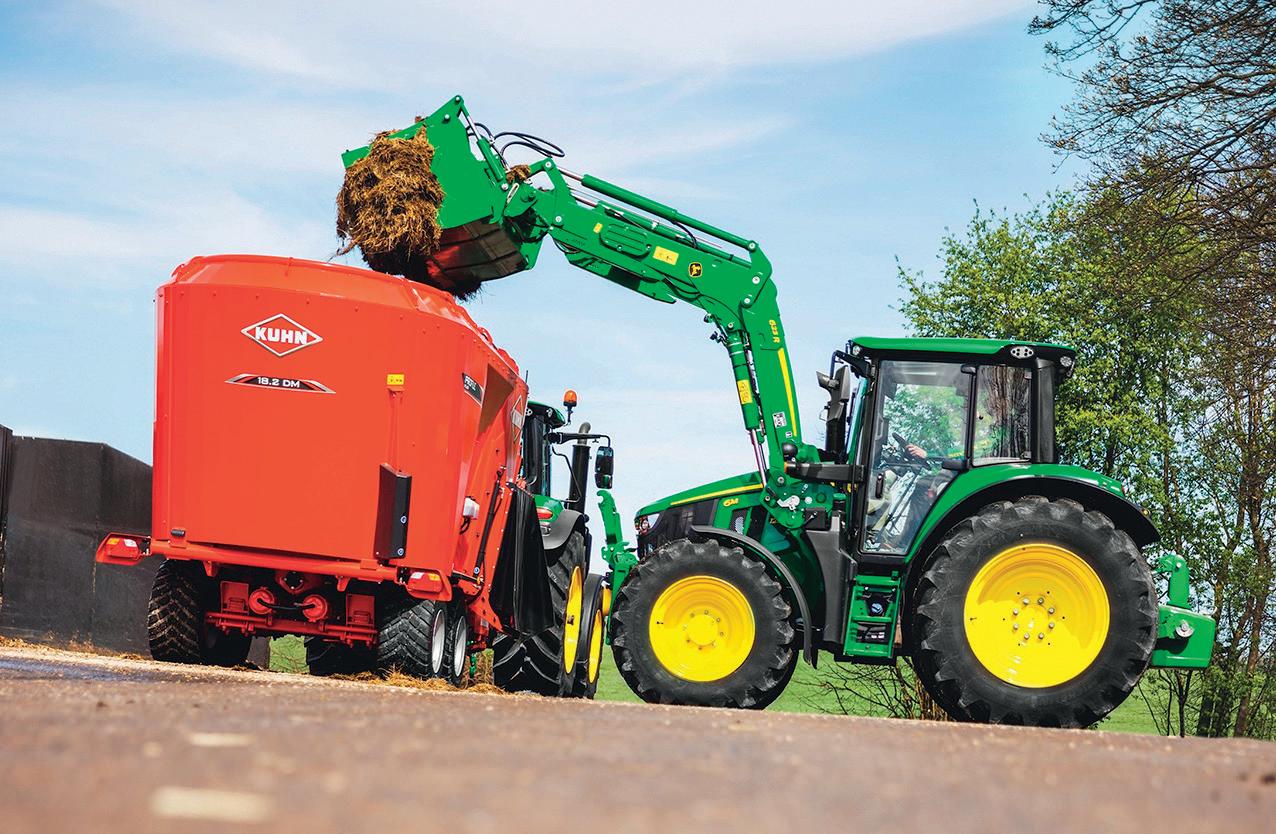
There are more transmission choices on the new range, including mechanical PowrQuad, powershift AutoQuad and CVT AutoPowr.


Edited by Katie Jones – 07786


The mild winter extended the growing season, resulting in higher covers of older overwintered grass in spring.




● Average early first cut was 33.7% dry matter
THE impact of the wet winter and spring are likely to be felt into the coming winter feeding season, says Trouw Nutrition following the announcement of results from the first 500 silage samples analysed this year.
Nacia Bonnick, ruminant technical support coordinator at Trouw Nutrition, says: “The combination of the mild winter and extremely wet conditions has had an impact on the harvesting season and the quality of silages produced. In many parts of the country, first cuts were significantly delayed.”
The mild winter extended the growing season, resulting in higher covers of older overwintered grass in spring. Then, the prolonged wet



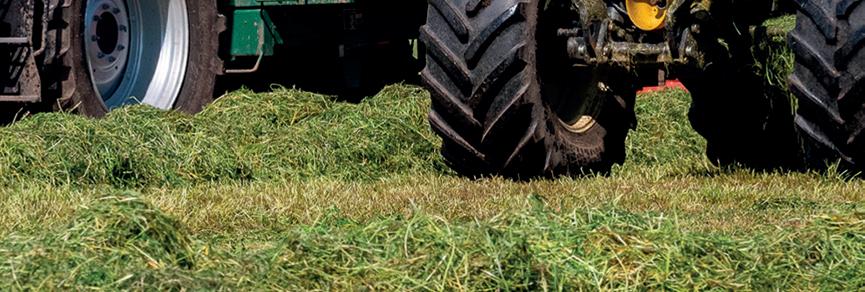






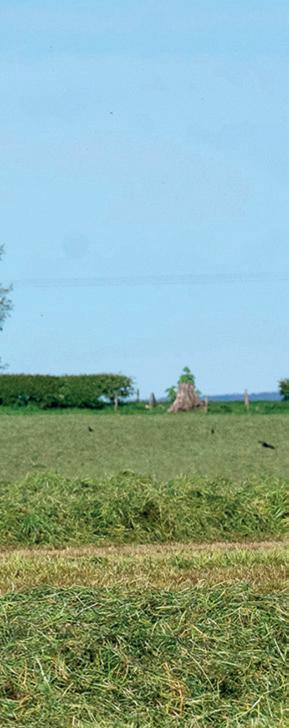
conditions impacted the application of slurry and fertiliser and delayed the timing of first cuts with implications for quality.
Ms Bonnick says: “Results from our pre-cut tracker indicated the optimal cutting date would have been mid-April through to the first week of May, but field conditions prevented many farmers from taking cuts to help preserve season-long
conditions and reduce soil contamination. The delayed harvest has resulted in a higher proportion of older and overwintered material in clamps, which tends to be more fibrous and less digestible.”
The average early first cut this year was 33.7% dry matter (DM), which is higher than last year’s crops which were 30.9%.
Average D-value was lower at 68.6%, reflecting the age of ensiled material. As a consequence, metabolisable energy has decreased marginally to 11.0MJ/kg DM.
Neutral detergent fibre is higher than usual for a good first cut, combined with very high lignin levels at 38g/kg DM. This means forages will ferment more slowly, which will have implications for supplementation and intakes. Crude protein levels were slightly depressed at 14.4%, which will be due in part to the inability to get on fields with fertiliser.
“Overall, forages will need careful supplementation to get the most milk from forage, control purchased feed costs and reduce the carbon footprint per litre,” adds Ms Bonnick.
In order to compensate for the
lower digestibility, she says rations may need to include ground cereals and rumen energy sources to promote digestibility and intakes. Overall rumen health would be considered safe given the low acid load and high fibre index from silages.
“It will be essential to supplement and balance both total fermentable protein and carbohydrates, both of which are lower than last year. This will ensure good rumen function and efficiency and microbial protein yield,” says Ms Bonnick.
“Alongside supplementation of rumen fermentable carbohydrates and protein, we would expect bypass protein supplementation will be required to support milk production. The obvious choice may be soya, but this should be considered in terms of carbon footprint and cost. Other good sources of protein could include rapeseed meal, protected rape and distillers.”
Ms Bonnick adds that averages are only a guide – what is important is the silage actually being fed, and she urges farmers to analyse clamps regularly to understand the forage and allow for accurate and cost-effective supplementation.
Herefordshire-based Richard Vines has a long association with the Meatlinc composite and keeps his own flock for ram production. Wendy Short reports.
The Meatlinc terminal sire is a five-way composite of Berrichon du Cher, Ile de France, Charollais, Suffolk and Dorset, says Richard Vines, who runs a flock of 160 Meatlincs, as well as 200 commercial ewes, at Burton Farm, near Ross-on-Wye.
He says: “The Meatlinc composite was developed by the late Henry Fell in the 1960s and his grandson, George, is now running the business.
Meatlinc
“There are four Meatlinc flocks around the country and the farm’s exchange rams. Two flocks in Europe operate in close association, although Brexit has complicated breeding stock exports.”
Working with Signet Breeding Services, the Meatlinc breeder group uses an inbreeding co-efficient to guide the single sire mat-



ing programme. Breeding selection is based on estimated breeding values (EBVs).
“The emphasis is on producing a lamb that will finish off home-grown forage,” says Mr Vines, who has been keeping the composite since 1990.
“My rams are marketed as shearlings, rather than lambs. This policy gives me control over their early management and I believe it helps to maximise longevity when they are sold to other farms.”
All Meatlinc lambs are scanned for backfat readings during summer. Meanwhile, selected animals are put forward for computed tomography scanning in autumn, to assess total muscle, fat and bone yield in the live animal.
“A typical Meatlinc shearling lamb in my flock will have an EBV of 2.8-3.8 for eight-week weight, with a scan weight of seven to nine, and a muscle depth of three-plus. The

top 10% of rams will have an index of above 340.”
Put to a Meatlinc tup, the commercial ewes are a mix of breeds and cross breeds, including Romneys and Aberdale cross Romneys. They are lambed indoors, which aids record-keeping, adds Mr Vines, and the two flocks are separated only for tupping.
The lambs are weaned at about 30kg, going on to grass lets in the region. Ewe lambs that are not required as replacements, as well as ram lambs rejected for breeding, are mainly sold finished through the live auction market.
Some 70-80 ram lambs will be re-


tained for their first winter, to provide a wide selection when the group is whittled down to about 45-head using performance figures, health and conformation in the assessment. Mr Vines says: “I have tried other marketing options, but at present I prefer the auction mart for finished lamb sales, spreading the marketing across the months to average out the return price. A small percentage of lambs are butchered and sold as boxed meat to friends and family.
“Despite the bizarre weather pattern this year, they have produced good growth rate figures. A Meatlinc cross lamb will easily reach a liveweight of 40kg at 14-16 weeks with no supplementary feeding. Most will have left the farm by September and the few stragglers will be sold as stores or moved on to forage crops.”
Each ewe will produce five or six lamb crops, and feedback from purchasers indicates that the rams will last for between four and six seasons. The goal is to try and maintain ewe body condition at a score of three to four throughout the year, but this can be difficult on a grass-based diet due to weather fluctuations, he adds, and summer droughts are a constant challenge. The ewes receive a mineral bolus in the run-up to tupping time, as the soil is deficient in selenium and cobalt. Teaser tups are used routinely.
“Teasers are a useful tool for prep-

aration. Laparoscopic and cervical artificial insemination have been adopted in the past, but live mating is cheaper and less time-consuming. To avoid inbreeding, rams are exchanged between other producers in the Meatlinc breeder group.”
The traditional system of grazing the flock on turnips in the winter months has been replaced with a cover crop mix which includes fodder radish, oats, rye, berseem clover, vetch and phacelia.
“The farm is taking part in the pilot Sustainable Farming Incentive scheme and also falls into an Nitrate Vulnerable Zone and the River Wye catchment area,” says Mr Vines.
“It was felt that the turnips created muddy conditions which did not present a good image to the public. In addition, the land is undulating and the soil is mainly light and free-draining, so run-off is a risk in exposed areas.
“The cover mix is planted in September and grazed from Christmas until March, preceding a spring crop of either potatoes or beans. The species are chosen partly for their beneficial effect on the following crop, but they must also provide nutritious grazing. Haylage is offered during cover crop grazing and at housing.”
The farm grows a variety of leys, using regular subsoiling to increase water penetration and grass growth.
Mr Vines says: “A Sumo Grassland sub-soiler is used in established grassland. It minimises compaction and holds soil moisture availability, by allowing water to penetrate the plant rooting area. The machine has a leading disc and is taken down to 20-22cm.
“The operation can be carried out in the autumn or in the spring; provided the soil is not too wet.”
Chicory and plantain have been included in the grazing mix for many years, but straight grass leys are also found useful.
“The grass leys help with thistle control. They allow for herbicide spraying which would kill off cover crop species, preparing the ground for the arable cropping. A herbal mix may be stitched in thereafter.”
Plunge-dipping is being introduced this year, says Mr Vines, who is chair of the National Sheep Association’s Marches region.
Farm facts
n Burton Farm covers 61 hectares (150 acres), with a further 101ha (250 acres) of rented grazing
n The soil type is a grade two/three sandy loam on old red sandstone
n Shearling rams are marketed as ‘Wye Valley Meatlinc’
n The farm also supports a small
“Pour-on products to combat parasites have achieved only limited success in recent years, perhaps because of the extreme weather variability,” he says.
“The implications for the flock’s high-health status must be taken into consideration with the change of approach, but it is important to achieve effective control. I noticed a reduction in the fly population while dagging the ewes this year; perhaps because of the low early season temperatures.”
The flocks, which are MV-accredited, are monitored for worms throughout the grazing period.
herd of Dexter cows, with finished animals sold locally in boxes n Dairy cross calves are reared and sold as stores
n The business offers grassland and straw contracting services n Hay and straw are stored and sold to equine and livestock holdings
“Monitoring growth rates by regular weighing will indicate whether the lambs require more frequent treatment, and nematodirus and orf prevention are part of the routine.”
The Meatlinc has been bred for its suitability for a forage-based diet and easycare characteristics, he says, with many of his customers using the composite on ewe lambs and for outdoor lambing flocks.
The Meatlinc may not be the most prolific breed, but it is extremely durable
RICHARD VINES
Mr Vines says: “The arable rotation’s grass leys play a role in keeping the worm burden to a minimum.
“Faecal egg counting is used occasionally for monitoring purposes and the ewes usually need to be wormed only once-a-year.
“A low stocking rate, combined with the flexibility to be able to rest the grass for long periods, are the two contributory factors.
“The Meatlinc may not be the most prolific breed, but it is extremely durable and the lambs are soon up and suckling, while the ewes thrive on grazed forage. It suits the farm, and membership of the producer group adds an extra interest to flock management.
“Performance will continue to be measured, with the main target being to improve performance statistics through careful genetic selection,” adds Mr Vines.
Compatibility with legumes is important
WITH a changing climate on the horizon, combined with a reduction in artificial fertiliser applications, grass swards are going to require greater resilience to extreme weather events and reduced inputs going forward.
In response to this, Barenbrug and the team at the Agri-Food and Biosciences Institute (AFBI) grass breeding programme, based at Loughgall, Co Armagh, are looking ahead to the needs of the UK’s livestock farmers in 2050. And with a timescale of 15 to 20 years to breed a new grass variety, understanding the industry’s future needs is key to the success of grass varieties being developed today.
Dr Gillian Young, grass breeder at AFBI, says the traits that Barenbrug and AFBI are currently looking for are not too dissimilar to what has been looked for in the past, in terms of increasing nutrient efficiency and productivity under reduced nutrients. However, she says the additional traits of drought resistance and compatibility with legumes and mixed species is of increasing importance.
Resilience to drought and reduced fertiliser applications will be key traits for perennial ryegrass varieties in 2050. Katie Fallon reports.
One of the main targets of the grass breeding programme at AFBI Loughgall is to look at nutrient efficiency, drought, and persistence through the root of the plant, says Dr Young.
She adds that over the past 100 years grass breeding has been focused on what happens above ground, but AFBI is now running projects which look at traits such as root depth, root volume, area and nitrogen cycling.
“If you can improve that, you should improve nutrient deficiency, resistance to drought and potentially waterlogging,” she says.
Dr Young says she is currently looking at the type of drought that the UK will experience in 2050.
“The drought we are going to have here is going to be very different from that on the continent, where they are going to be looking at their varieties to simply survive,” she says.
Instead, she says the UK will be looking at shorter periods of drought where continued grass growth is required.
“Modelling shows us there are various parts of the world that are going to produce more grass in the future, and Northern Ireland is one of them,” she adds.
“Scotland, England and parts of Wales are also going to potentially
be producing more grass in the future and it is about what we do with that grass: how we harness it and how we improve it to survive the extremes that are going to come along with it.”
To ensure farmers have grass varieties which are resilient to future challenges, including reduced inputs, Dr Young says breeding ryegrasses which are compatible with legumes to maintain yields is key. She says: “I look to replace the N application with a well-managed perennial ryegrass and white clover sward, so that we can get the N we need at hopefully a similar level as what I would like to be putting on.”
She says that research in Ireland
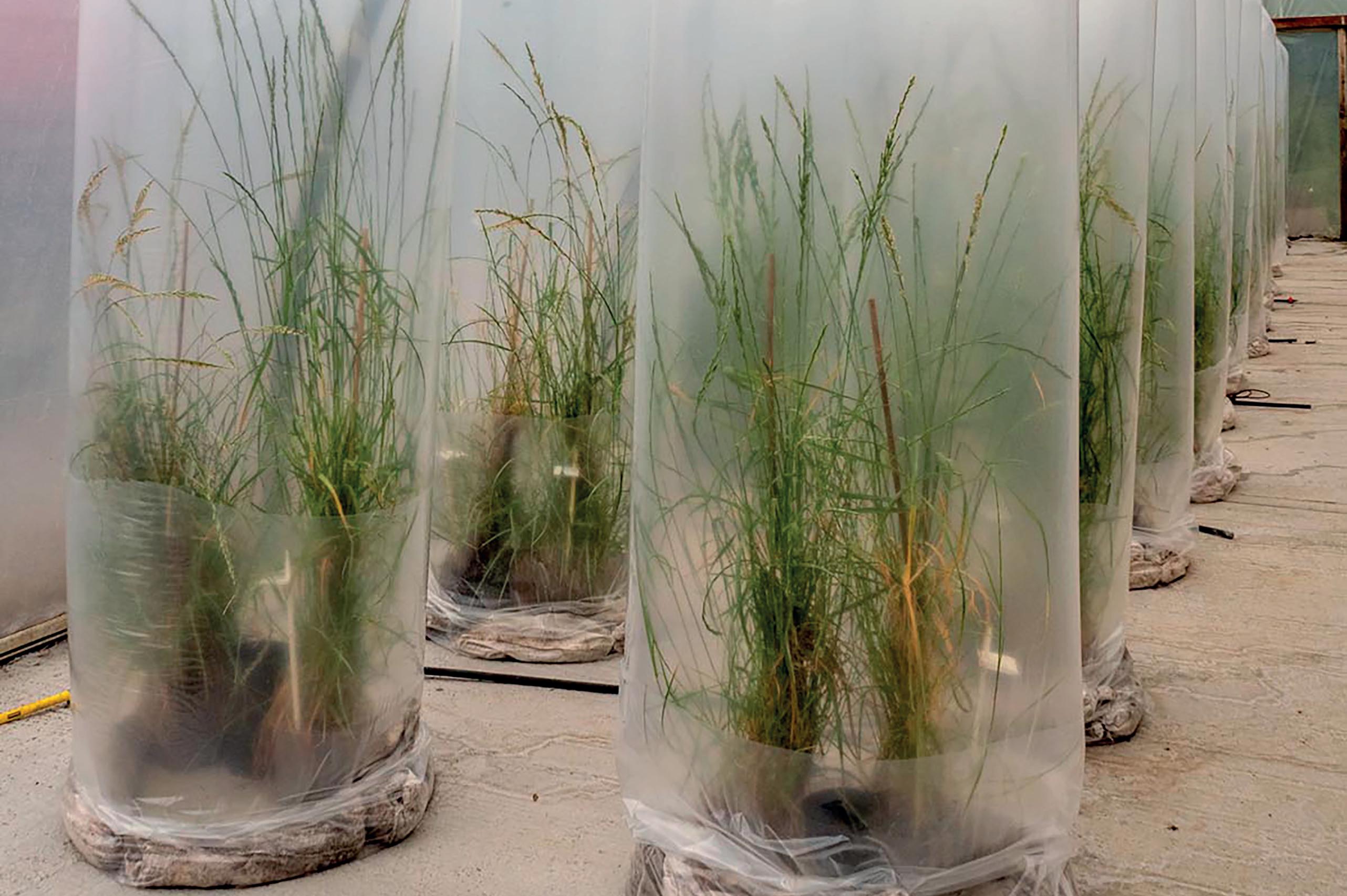


has shown it is possible to manage swards to retain a 30% clover cover, which is required to maintain yields with reduced fertiliser applications.
“Perennial ryegrass requires N, and it needs to be fed to maintain and grow properly, but that does not mean that it does not have a place in a sustainable sward moving forward – it just needs to get its N from somewhere else,” adds Dr Young.
GLOBAL research director at Barenbrug, Piet Arts, says grass and crop breeders across the world are all looking at resilience to drought and reduced inputs as key traits for future grass varieties.
He says: “The agricultural system that we have had for the last 50 years has to change, so that means less irrigation, less fertiliser and less pesticides. That is what everyone is working on.”
Mr Arts says while multi-species swards, including clover and legumes, will be a large part of the industry achieving greater resilience in grass leys, perennial ryegrass will remain the key grass breed for the UK.
When making breeding decisions for multi-species mixes, Mr Arts says the compatibility of clover and legumes with other grass species is a key consideration.
He says: “We have to look at how well grass varieties work with white clover. Clover is hard to manage; if you cut the grass too short the clover will take over because it gets more light, but if you graze it longer then the clover will have problems
UK
Scotland
44.5kgdrymatterperhectareperday (18kgDM/acre/day) 24 12.7 7.6
The North
36.6kgDM/ha/day (14.8kgDM/acre/day) 21.1 14.8 4
Wales
54.6kgDM/ha/day (22.1kgDM/acre/day) 20 14.3 6.5
The South
56.4kgDM/ha/day (22.8kgDM/acre/day) 20.1 15.3 13
Grass growth Soil moisture (cb)
Soil temperature (degC) Rainfall (mm per week)

45kg DM/ha (18.2kg DM/acre) 45kg DM/ha (18.2kg DM/acre)
competing for light and will be outcompeted.”
Therefore, it is not only the genetics and composition of future grass varieties which are crucial to performance, but also establishment and management.
Mr Arts says establishment of these swards will be one of the main challenges to come for both farmers and grass breeders.
White clover is an aggressive grass species which can outcompete ryegrass, and red clover lacks persistency, so Mr Arts says breeding clover varieties which are easier to manage and grow well in companionship with ryegrass is crucial for future grassland performance.
He says: “Nitrogen can be replaced with clover, but it requires a bit more management and is more complicated. You still want to get yields from your land, so if you can maintain yield with 30% less fertiliser, that is a gain.”
To trial and test the performance of grass breeds in multiple
environments and seasons, the breeding process takes time and is a long process, says Mr Arts.
He adds Barenbrug has been working with the development of genomic technology for the last 10 years, which he believes is almost ready to speed up the breeding process.
While gene editing is not a technology currently available in grass breeding across the UK and Europe, Mr Arts predicts that 12 to 15 years from now the first gene-edited ryegrass could be commercially available on the market.
Dr Gillian Young, grass breeder at AFBI, says: “As a research community, we are definitely looking at genomic tools to speed up progress and also potentially gene editing, which is something that could be harnessed, but there are legal reasons why we do not do that here at this programme.
“But it is always on the horizon, and I think things like gene editing could improve the ryegrass yields significantly faster than what we are doing already.”
n Recorded grass growth and forecasted growth rates have fallen and will remain at or slightly below the long-term average. Soil temperatures are rising, but rainfall and soil moisture are lower. With cloudy weather forecast, only modest growth is likely n Weather forecasts suggest better conditions in the second half of July, helping re-growth and boosting silage
n With current pressure on the grass supply, it is even more important to keep up routine measurement and assessment of paddocks to adjust paddock choice and rotation length n Where prepared ground was left as a ‘stale seedbed’ and weeds have come through, now is the time to burn off and seed new swards. Ensure the field is thoroughly rolled after sowing
Animal


● Mature size the factor ‘most easy to change’
C ATTLE and sheep are highly efficient in converting grass and other forages into beef, milk and lamb, but as is well-documented, a drawback is their production of methane as a by-product.
However Sam Boon, who heads the Signet breeding programme at AHDB, reminded farmers that under the same farm conditions, there will be variations in relation to the amount of methane produced by animals in the same group.
Mr Boon said: “Some of the differences in methane production levels achieved by ruminant livestock can be attributed to genetic factors.
“The beauty of genetics is that, unlike health and nutrition, it delivers a cumulative benefit across the generations and it is locked in.
“Where health is concerned, we do a treatment this year and it impacts on the animals. But we have to do the same thing again next year in order to keep this going.
“But with genetics we can build on the process; it delivers a cumulative impact which is sustainable into the future within a population.”


At an Agri-Food and Biosciences Institute open day at Hillsborough, Co Down, the latest beef and lamb research was discussed, with genetics and efficiency a particular focus. Richard Halleron reports.
He said there were two ways of reducing methane output within the ruminant livestock sectors. One was through direct selection and the other was through a process of indirect selection.
Mr Boon added direct selection involved the actual measurement of the methane emissions produced by livestock and, where sheep were concerned, this work was carried out under the auspices of the ‘Breed for CH4ange’ programme, which aimed to breed low methane sheep and was led by Innovis.
He said: “We are measuring methane production levels under commercial production environments, courtesy of sheep within an actual grazing environment.”
He added it was harder to measure methane emission levels with cattle, mainly due to their size.
“The way around this challenge is to measure the feed efficiency of the animals. There is a high degree of correlation between the efficiency with which animals convert feed intake into meat or milk and the
associated levels of methane produced,” he said.
Indirect selection involves assessment of efficiency-related indices.
“We know there is a more general association between growth rates, feed conversion and maternal traits, linked to the overall efficiency secured within a beef and sheep enterprise. The higher the levels of efficiency secured, then the lower the levels will be of associated methane produced.”
He also said reducing days to slaughter would also deliver lower methane production levels across all beef and sheep enterprises. However, he added the big wins would be from maternal selection programmes.
“A cow will be on a farm for six to seven years. Where breeding ewes are concerned, the equivalent figure is four years.
“Every day they are eating, every day they are producing methane. So if we can make them just that little bit more efficient, the overall impact on carbon footprint will be significant.
“Mature size is the factor that is most easy to change and it is highly heritable. Specifically selecting for faster growing youngstock has been responsible for the growth in mature cow size recorded over recent years.”
Research indicates that the optimal, mature size for a suckler cow should be in the region of 680-700kg.
The equivalent figures for a mature ewe are 55-60kg.
“But yet, I regularly visit farms up and down the country where I see some really big breeding females,” said Mr Boon.
“The reality is that limiting the size of cows and ewes allows for higher stocking densities to be achieved within breeding beef and sheep enterprises.
“The other elements that we can influence are improved fertility and prolificacy.
“For example, where sheep are concerned, it is possible to select for a greater number of twins to be born and successfully reared within a flock.
“Again within the sheep sector, we can also specifically select for enhanced lifespan.”
The countdown to the Royal Welsh Show is now on and this year’s event has a number of new features for visitors to enjoy. Farmers Guardian finds out more.
The Royal Welsh Show, which takes place from July 22 to July 25 at the showground in Llanelwedd, Builth Wells, attracts more than 200,000 visitors and celebrates not only food and farming, but culture, diversity, the Welsh language and a love for the land.
The Royal Welsh Agricultural Society is celebrating its 120th anniversary, with the first show held in 1904.
The objective of the Royal Welsh Show was originally to roam the length and breadth of Wales, but as it became necessary to have a permanent location, Llanelwedd in Mid Wales was chosen, and the show was first held at the Royal Welsh Showground in 1963.
Show director Richard Price says: “The new Horticultural Village will be a celebration of community and commercial growing. It will boast two competition marquees, one for fruit and veg and one for floral art, a new skills
and learning hub, a sensory garden, micro show gardens, commercial stands and a food and drink court.”
Along with horticulture, the organisers are also delighted to see the return of the poultry section this year.
Mr Price says: “The situation with avian flu has improved and restrictions have lifted to allow us to stage the poultry show once again. There has not been a poultry show at the Royal Welsh since 2019 and we are all excited to see its eagerly awaited return in the Fur and Feather Pavilion.”
Mr Price adds there are strong entries across all livestock sections, with almost 7,000 animals being exhibited over the four days. Equine entries are up on last year, with several new equine classes being introduced.
To mark the society’s 120th anniversary and celebrate the county of Ceredigion, whose turn it is to take the lead

More than 200,000 are set to visit the Royal Welsh Show this year.

this year, a new main ring display has been commissioned. It will include a larger than life-size puppet of a Ceredigion farmer with animals, performers and singers. Also in the main ring will be a heavy horse display where the horses move around the ring choreographed to music. In addition, the much-loved JCB Dancing Diggers return for the first time since 2010.
MORE INFORMATION For more details and tickets visit: rwas.wales/royal-welsh/
Welsh farmers and vets have been recognised for their pivotal role in preventing the spread of antimicrobial resistance (AMR) in animals and the environment.
Their efforts to combat AMR and safeguard antibiotic efficacy for future generations are part of the innovative Arwain DGC (Defnydd Gwrthficrobaidd
Cyfrifol / Responsible Antimicrobial Use) programme funded by the Welsh Governament.
An award-winning programme, Arwain DGC helps vets, farmers, and horse owners in Wales to reduce the risk of AMR by promoting animal health and productivity, training, the application of new technology, data gathering, and research.
AMR is a ‘One Health’ concern, and the work being done by farmers in Wales has been acknowledged as making an important impact on safeguarding antibiotic efficacy for future generations.
Arwain DGC recently rewarded farmers and vets for demonstrating ‘Excellence in Antimicrobial Stewardship’.
Joint farmer award winner, Owen Davies from Haverfordwest has been trialling a SmaXtec bolus system and has significantly reduced his use of intramammary antibiotic tubes and injectable amoxicillin.
While fellow joint winner Wrexham organic dairy farmer George Tomlinson has introduced
management changes to improve calf health and growth rate, including a robust colostrum management protocol and improved housing ventilation.
Consequently, antibiotic use for pneumonia has reduced by 50% in the last 12 months, and none have been needed in the last six months.
Joe Angell of Wern Vets Cyf received the livestock vet award for his proactive approach to improving health and performance and commitment to reducing antibiotic use, along with his involvement in research studies and industry campaigns.
Powys vet George Roberts of Hafren Vets was recognised for his outstanding equine work and significant contribution to the Veterinary Prescribing Champions network.
If you would like to know more about Arwain DGC’s work, visit the YFC pavilion at the Royal Welsh Show, where the programme will be featured.
Also, a series of open days will be held at the programme’s Proof of Concept (PoC) farms, where novel technology is being trialled, and best practices are successfully employed to reduce the need for antibiotics and improve livestock health and productivity.
Details of the open days can be found at www.arwaindgc.wales or by scanning the QR Code.






Contact us arwaindgc@menterabusnes.co.uk www.arwaindgc.cymru 01970 600 190
Follow us @ ArwainDGC

The Corbett family and their pedigree cattle are no strangers to the showring and, with the Royal Welsh on their Radnorshire doorstep, this show is a firm fixture on their showing calendar. Ellie Layton finds out more.
In 1976, Vince Corbett moved to The Gorther and he now shares this part of the Radnorshire countryside on the outskirts of Knighton with his wife Melita and their four children, Eva, Ruth, Thomas and Grace.
The day-to-day running of the farm is shared between Vince and Melita and Thomas, who returned home to the farm after studying agriculture at Aberystwyth University and has spent a great deal of time travelling the country preparing cattle for shows and sales.
The family runs 243 hectares (600 acres), 61ha (150 acres) of which are rented in the local area and range from 305 metres (1,000 feet) to 427m
(1,400ft) above sea level, which the Corbett’s say is no challenge for their continental cattle.
Their pedigree Limousin and Charolais cattle are run alongside 1,000 Easycare ewes which they have moved to in recent years, having originally had a Dolgellau Welsh flock.
The family says the Easycare breed suits their outdoor system, with lambing beginning in April.
Breeding stock is sold privately, or at sales in Worcester and Carlisle, while fat lambs are sold deadweight –the majority through Randall Parker.
But the real passion for this close-knit family is for their pedigree cattle, particularly the Charolais.
In 1992, they replaced their traditional cross-bred Hereford herd with continental alternatives, starting with Limousins under the Temeside prefix.
peak, the herd numbered 60 pedigree cows.”
Not coming into farming the traditional way, Vince has always had a thirst to learn from other farmers and the showring has provided the opportunity for this.
He says: “Showing has given me the perfect platform to speak to farmers and learn how they produce and turnout their cattle, while making friends from across the country.
“We have been welcomed into the cattle lines with open arms and, providing we ask the right questions, these professionals are always willing to share their advice.”
It was with two-year-old Limousin bull, Rivermead Mike, that the family made their showing debut, which was at the Royal Welsh Show in 1998.
Over the moon to pick up a fourth prize rosette, they caught the showing bug and have since competed at various local shows and, in later years, larger shows including the Royal Three Counties and the Great Yorkshire.
Thomas says: “Showing is something that we can do as a family, everyone plays their part and, at the larger shows, we all get involved either in preparation, in the show ring or making sure the work is done at home.
Showing is something that we can do as a family, everyone plays their part and, at the larger shows, we all get involved
THOMAS CORBETT
The
The Charolais, registered under the Teme prefix, joined the herd in 2009, as Vince and Melita’s 20th wedding anniversary gift to each other.
Since buying the first heifer, the herd has grown to a 30-head herd, with breeding stock produced to sell to fellow breeders.
Vince says: “We made the move to pedigree cattle to strengthen our farm finances.
“We started the Limousin herd with a heifer purchased from the Welsh Winter Fair, Dyfri Estella and, at its


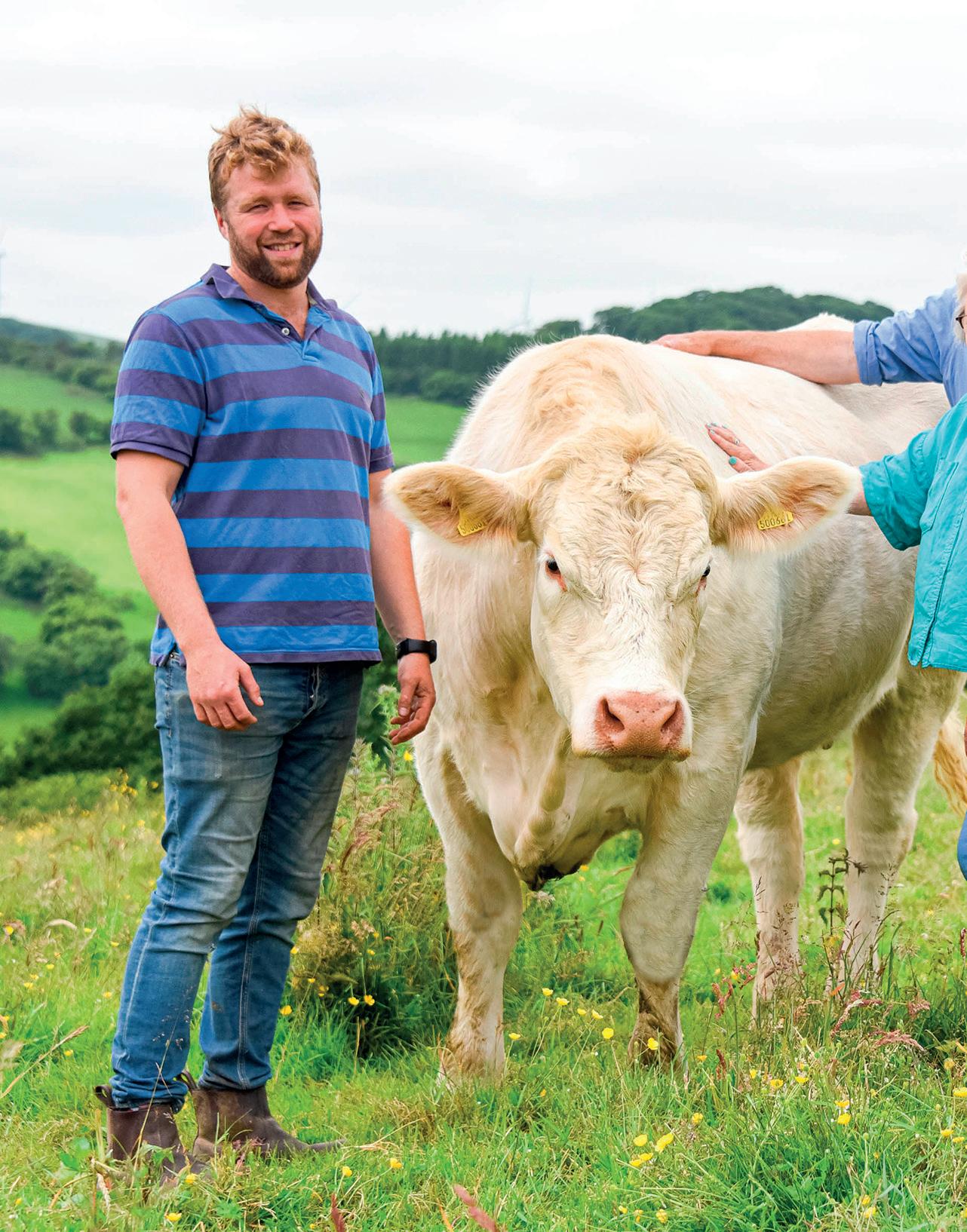
■ The Corbett family are firstgeneration farmers
■ Their Easycare sheep system runs alongside the pedigree cattle
■ Hosts of the 2022 World Charolais Cattle Congress
■ High health herd, which is BVD and lepto free and Johne’s level 1
■ Embryo transfer is used within the herd, with Beef Shorthorns used as recipients
■ Teme Charolais have also had their own successes at the Stirling bull sales making the 300-mile trip worthwhile, with Teme Sam selling in 2022 for 9,500gns
“Showing is a huge part of our social life and coming home with a prize card is a great achievement, but our primary focus is for us to get to and from the show safely, with the cattle looking their best.”
The family have had great success over the years in the Limousin breed with various cattle, all stemming back to Dyfri Estella.
One of their greatest achievements was with Temeside Infuse, which was placed first at the Royal Welsh Show







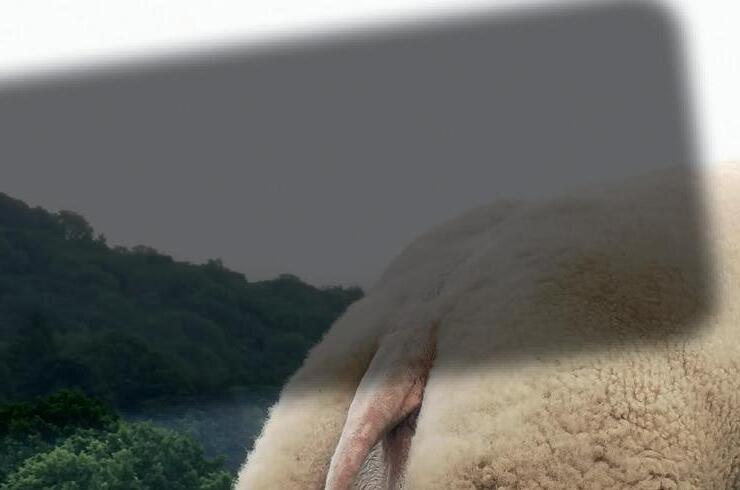












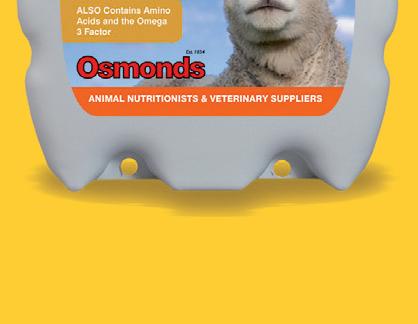











The
The social aspect of showing and selling cattle is a huge part for us as a family and the Royal Welsh is the showing pinnacle of our year
VINCE CORBETT
and was later champion at the Welshpool bull sale.
A major purchase which pushed their Limousin breeding forward was Rosecroft Dynamite, which was champion at Carlisle and had an influence on their female line.
Another favourite was a daughter of Dynamite, Temeside Nadia, which won inter-breed champion at Aberystwyth Show.
Due to the concentration of the breed in their locality, it meant high competition when selling bulls, so the decision was made to begin the transition to the Charolais breed, starting the Teme herd, which is registered under Melita and their daughters’ names to recognise the work they have all put into the family business.
Challenge
Vince says: “Our biggest challenge was initially finding females, but after buying Stobarts Freda, she got the ball rolling and put our herd in good stead.
“For the first year or so she was artificially inseminated as we grew numbers.”
Freda produced Teme Ivory, which bred Teme Magnolia, which itself was Royal Welsh Show breed champion in 2018 and has become ‘part of the family’.
Magnolia has been flushed and has

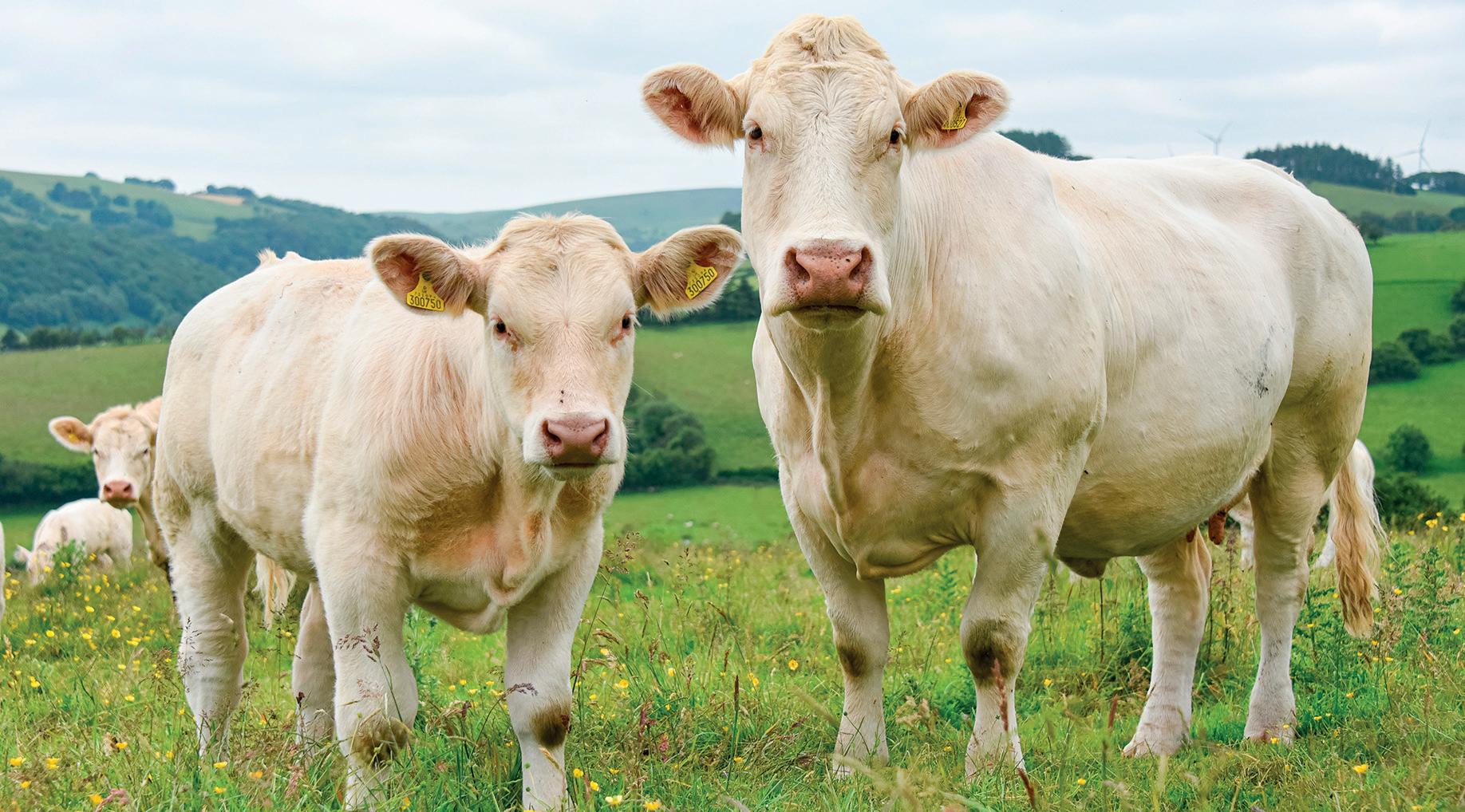
Corbetts breed most of their own replacements.
become its own breeding line, with most of their showring success since being its progeny and breeding line.
Her sisters Teme Nude, which has been reserve Royal Welsh breed champion and Teme Poshtotti, which was Aberystwyth supreme champion.
But their most recent success has been with two Teme Magnolia-bred animals, Stardust and Snowwhite. Last year, Stardust claimed reserve breed champion at the Royal Welsh Show and was a member of the interbreed group of five, following an interbreed title at the Royal Three Counties the month before.
Careful consideration has been put into breeding, especially to nurture the female line, says Vince.
“We breed our replacements, except a purchase on a rare occasion, so we want to keep them true to type and most importantly to us, correct in conformation.
“We want a feminine cow which has shape, but is not excessive, which is controlled by myostatin testing.
“Mobility and leg conformation are
The Corbetts predominantly keep Charolais cattle, with a handful of Limousins.
vital as living on a hill, our cattle need to be mobile and fit as the banks are steep, with most water access provided by the River Teme,” adds Vince.
In 2021, the family made a major investment of 28,000gns at the Stirling bull sale for the supreme and junior champion, Balthayock Ranger. Ranger is a Balthayock Imp sired bull and Thomas says he suited the herd’s needs perfectly.
Their current stock bull, Lochend Shell, was purchased privately and Vince says one of the main reasons for buying this bull at 16 months old was its exceptional calving figure, which is of upmost importance to the Corbetts.
He adds: “We rarely have an assisted calving and want that to be the same for any herd that acquires a bull from us.
“We believe that choosing a bull involves more than just their appearance; we look at breeding and myostatin to help a farmer choose a bull that suits both them and their cows, so that they will return to us.”
Teme sells about 15 bulls a year,
both privately and through the breed society’s Welshpool and Stirling sales.
The family has been involved in both the Limousin and Charolais breeds socially, which, in 2022, led them to host the World Charolais Cattle Congress.
Honour
Vince says: “It was an honour to host fellow breeders from across the globe, discussing a range of systems and breeding programmes.
“The social aspect of showing and selling cattle is a huge part for us as a family and the Royal Welsh is the showing pinnacle of our year, and it is only down the road from us. It is the experience from showing for nearly 30 years that helped provide us with the opportunity to host such a major event.”
Looking forward, Thomas says he is keen to keep the herd driving in the same direction and, alongside his parents, he aims to keep breeding high-quality, high-health pedigree cattle which serve a commercial purpose.



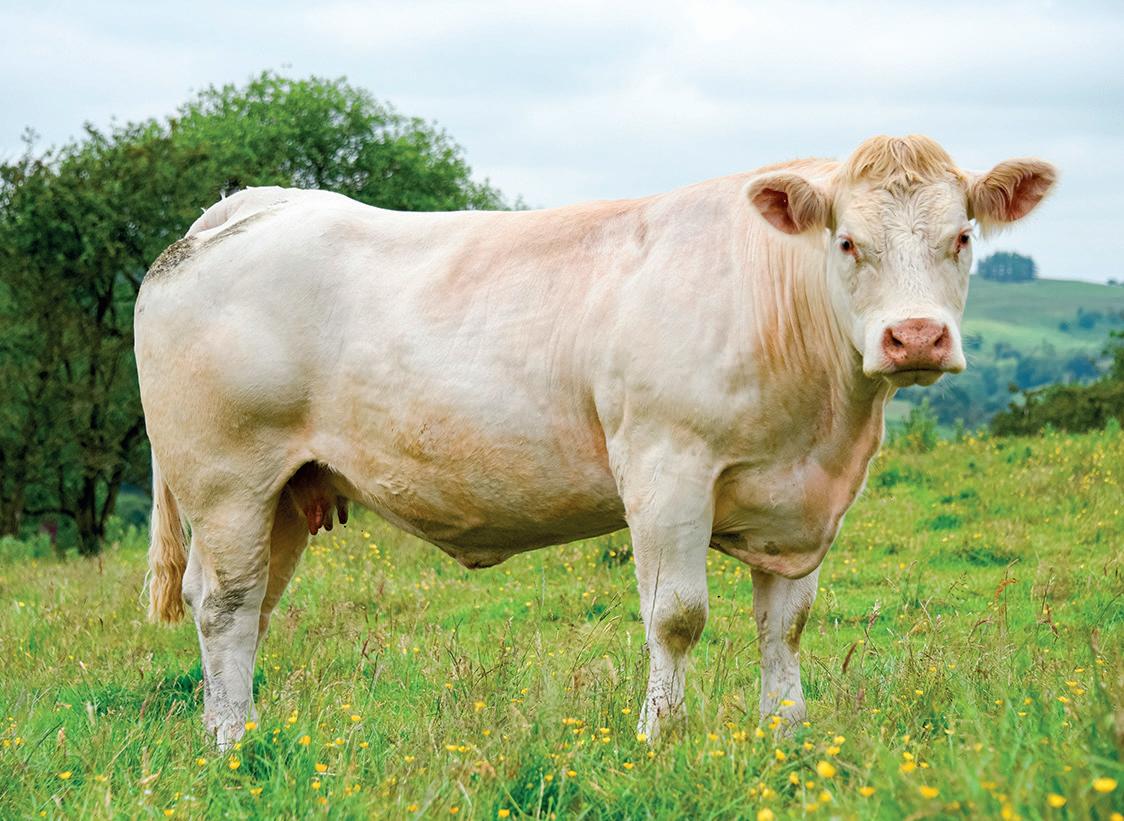
The farm hosted the 2022 World Charolais Cattle Congress.

We want to publish your trial dates and results. Please contact Ellie Layton on 07814 997 407 or ellie.layton@agriconnect.com


HEINDRICK Keinker from Germany, and his dog Star were winners of the Shabfest Double Gather Championship.
For winning results

Welsh
NEW INN OPEN, AM session (Judge, Brian McConnell) 1, Logan Williams, Efail Mick, 9; 2, Jack Howells, Cydros Boss, 10; 3, Misena Dubenova, Oak Mo, 12 OLF; 4, David Howells, Wyverne Pip, 12; 5, Stan Harden, Kennox Fly, 13; 6, Bradley Morgan, Tom, 17. PM session (Stan Harden) 1, Teifion Morgan, Kennox Tess, 25 OLF; 2, Brian McConnell, Tig, 25 OLF; 3, Matthew Evans, Faenor Jock, 25; 4, Kelvin Broad, Foxridge Colt, 27; 5, Heddwyn Thomas, Jet, 28; 6, Bettina Laemmle, Floss, 30 OLF. ACORNS CHARITY NOVICE (Angie Blackmore) Beginners 1, Michelle Thomas, Bec, 45T; 2, Hilary Lewis, Betsi, 44T; 3, Jayne Neville, Storm, 42T; 4, Jayne Neville, Ceri, 39T; 5, Jemma Saer, Ettie, 36T. Novice 1, Matt Hooper, Gyp, 81; 2, Steve Currie, Tilly, 80; 3, Bradley Morgan, Tom, 78 OLF; 4, Andrew Green, Don, 78; 5, Andrew Green, Jill, 75 OLF; 6, Beth Watts, Dev, 75. ACORNS (Angie Blackmore) 1, Michelle Thomas, Bec, 45T; 2, Hilary Lewis, Betsi, 44T; 3, Jayne Neville, Storm,
42T; 4, Jayne Neville, Ceri, 39T; 5, Jemma Saer, Ettie, 36T. SARN, 1, Arwyn Davies (Bryneglwys) Cynfal Gwen, 11; 2, Arwyn Davies (Bryneglwys) Eglwys Izzy, 18; 3, Jac Roberts (Bala) Jim, 20; 4, Idris Thomas (Dolgellau) Nel, 20; 5, Medwyn Ll. Evans (Dolgellau) Nan, 22; 6, Dylan Edwards (Penrhyndeadraeth) Wern Ben, 21.
MALTON (A. Temple) (40 dogs ran) 1, A. Wilkinson, Pip, 93; 2, S. Walton, Spot, 92; 3, S. Walton, Scalpsie Maid, 90; 3, B. Swinbank, Bill, 86 OLF; 4, A. Wilkinson, Grace, 86; 5, B. Bristow, Moss, 83. SHABFEST, 1, Hendrick Kienker, Star; 2, Jed Watson, Wren; 3, Dewi Jenkins, Jock; 4, Kevin Evans, Jet; 5, Iwan Rees, Pentre Meg; 6, Tom O’Sullican, Claire; 7, Aled Owen, Llangwm Tom; 8, Kevin Evans, Kemi Jack; 9, Hendrick Kienker, Dell; 10, Nigel Watkis, Nell. BROOMHEAD (Doug Lambie) 1, David Wood (Crookhill Farm) Polly, 89; 2, David Wood, Jon, 88; 3, Arthur Temple, Anne, 87; 4, Katy Cropper, Gin, 87; 5, Peter Wood, Bella, 84; 6, Alexander Wilkinson, Pip, 80. NORTHUMBERLAND LEAGUE (A. Ridley) 1, Helena Svobodova, Tray, 93; 2, Ron Macrae, Oats, 89 OLF; 3, Chris Caerts, Glen, 89; 4, Bevis Jordan, Chase, 88; 5, Mark Elliott, Nell, 86; 6, Peter Ellis, Scott, 79.
July 6. LLANFAIR CAEREINION (NWSDS), Hendre, Llanfair Caereinion, Montgomeryshire, Powys, SY21 0HY, pre-entry to North Wales Sheepdog Society, tel: 07880 238 721.
July 13. LLANWRST, Llanrwst, LL26 0NR, 8.30am start, tel: 01492 640 859.
July 13-14. LLANHARRY, Degar Farm, Llanharry, CF72 9JX, but use CF72 9LH for sat nav, what3words: revise.castle.contracts., 7.30am start, session one and two held on July 13, session three and double fetch final held on July 14, max. two dogs per session, single dogs can run in two of the sessions, top three from each session qualify for double fetch final, pre-entry required, entries full, reserve list in operation, contact secretary Cerys Millichap, tel: 07800 784 664.
July 19-20. MATHON, Charity trial in aid of Cancer Research, Air Ambulance and local hospices, local novice (25-mile radius), Upper House, Cradley, signposted off A4103 Hereford to Worcester Road, enter on field, 6pm start on July 19, 7.30am start on July 20, pre-entry only, entries for Saturday full, reserve list in operation, contact chair Greg Tustin, tel: 07725 480 456.
July 20. LLANERCHYMEDD, Llanerchymedd, LL71 8BD, 8.30am start, tel: 07837 424 839.
July 23-24. ROYAL WELSH AGRICULTURAL SHOW, Open National on both days, young handler competition on July 24, Royal Welsh Showground, Builth Wells, Radnorshire, contact Chloe Lewis, Royal Welsh livestock department, tel: 01982 554 404, or chloe@rwas.co.uk, entries closed.
July 6. TRAWDEN, Hull House Farm, Hellifield, BD23 4JP, 9am start, catering and running order will be drawn, reserve list now in place, contact Meg, tel: 07824 644 099.
July 6-7. DEVON AND EXMOOR, Pittsworthy Farm, Thorndon Cross, Okehampton, EX20 4NG, what3words: sunflower.circus.resting., field entry, contact T. Rolf, tel: 07811 958 001, or tonyrofe@ hotmail.co.uk.
July 7. NORTHUMBERLAND LEAGUE, Whitfield, Hexham, NE47 8HR, pre-entry for first 60 dogs, £5.00, contact Bevis Jordan, tel: 07714 469 981. ROMNEY MARSH, Westwell, Ashford, Kent, TN25 4NH, pre-entry, contact Liz Lauder, romneymarsh123@gmail.com, judge Mark Paice. ENGLISH NATIONAL FUNDRAISER, Lower Eastfield, Eastfield Lane, Thurgoland, Sheffield, S35 7AY, first 40 dogs, pre-entry to Stuart Wilkinson, tel: 07762 182 010, all proceeds going to the National.
July 13. THORNTON TOWER CHARITY TRIAL, Ron Bailey Cup Competition, held at NE47 5AN, 8.30am start, pre-entry for the first 45 dogs, contact M. Northwood, tel: 07816 533 804.
July 13-14. AVON VALLEY, by the kind permission of Frank and Dee Hodgkin, LE17 6DH, what3words: Foster.Vanish.Originals., 30 dogs per session, limit
of four dogs per handler per session, the same dogs can run in each session, £8 per run, hot and cold catering will be available throughout the day, preentry to Caileigh, tel: 07860 716 467, entries are only accepted on receipt of payment, if you choose to withdraw your runs a refund will be issued if we can fill your space.
July 14. BROMPTON REGIS CHARITY TRIAL, Novice, open Maltese cross, best young handler and new handler, Roll House Cup, novice, open driving, Kings Brompton Perpetual Challenge Cup, by kind permission of R. Cowling and family at Ruglands Farm, Brompton Regis, Dulverton, Somerset, TA22 9NZ, what3words: socialite.speeds.twit., 9.30am start, entries closed, contact secretary Julie Tucker, tel: 07970 033 813, or email: julie@bearwoodfarm. co.uk, charity trial with proceeds from trial and refreshments going to Fishing for Life.
July 6. BUCHANAN, Creityhall Farm, Buchanan, Drymen, G63 0AD, field entry, first 60 entered and paid dogs, £7 per entry. DURNESS, Keoldale Farm, Durness, Lairg, Sutherland, IV27 4QF, pre-entry, £10.00 per dog, contact Mary Mackay, tel: 01971 511 255. ST BOSWELLS, Greenend Farm, St Boswells, TD6 9ES, 8am start, new field so follow signs from A68, first 60 dogs, £6 per dog, no two dogs after lunchtime, catering on field, contact Andrew Dickman, tel: 07810 838 011, or email dickman. glencroft@btinternet.com.
July 10-13. TRIALS OF BUTE, Brace trial, The Plan Farm, PA20 9LX, information via trialsofbute.co.uk.
July 11-13. TRIALS OF BUTE, Scalpsie Farm, information via trialsofbute.co.uk.
July 12. TRIALS OF BUTE, Andros Farm, information via trialsofbute.co.uk. STAFFIN, trials held at IV51 9JE, 8am start, entry on the field, £10 per dog, enquiries to Ian MacDonald, tel: 07717 065 500 or 01470 562 388, or email quiraingview@aol. com.
July 13. WATERNISH, Waternish Farm, Waternish, Isle of Skye, IV55 8GB, 8am start, pre-paid dogs only, limit of 50 dogs, £10 per dog, max. two per handler, entries to Robert Montgomery, tel: 01470 592 793, or email robert@waternishfarm.com, catering on field, cheques payable to Waternish Farm. ABERFELDY AND DISTRICT, Croftmoraig Farm, Bolfracks Estate, Aberfeldy, PH15 2EY, first dog runs at 8am, £5 per dog, entries to Anna McDiarmid, Balbeg Farm, Lawers, Aberfeldy, PH15 2NZ, please include name, email address, address, contact number and number of dogs, max. two dogs per person, cheques payable to Aberfeldy and District Junior Agriculture Club, first 65 paid dogs. COLTCROOKS, Huntlywood, TD4 6BB, there will be a sign on the main road pointing down the track to the field, 8am start, enter on field, contact John, tel: 07928 165 469.
July 14. ISLE OF BUTE, Final for trials of Bute, Ardros Farm, PA20 0QF, information via trialsofbute. com, spectators welcome.





Inter-breed beef, continental and Simmental champion, Brandane
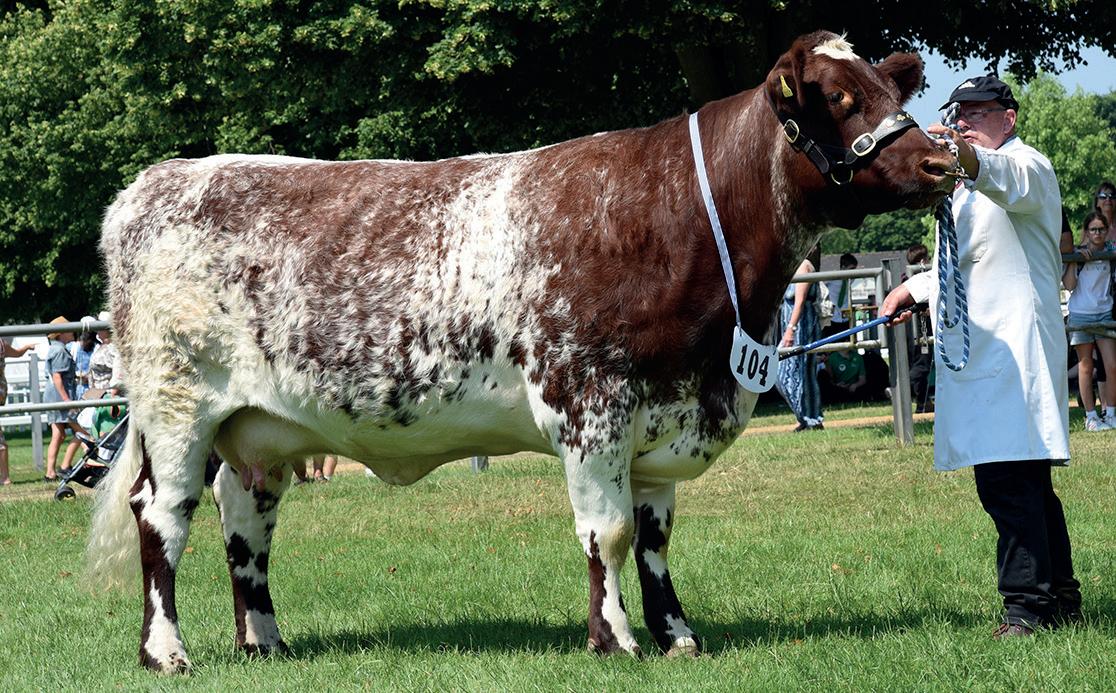
and
Beef

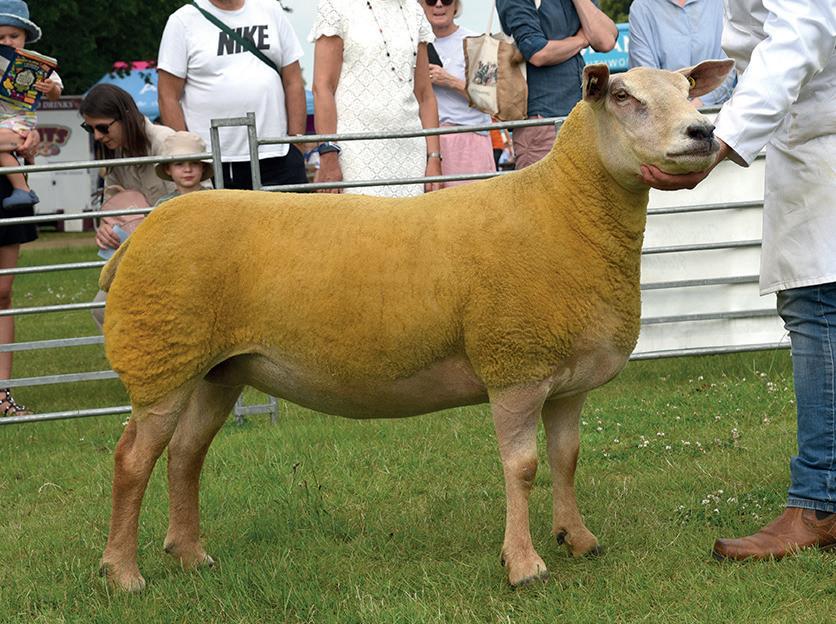
inter-breed sheep and Charollais champion, a 2022-born ewe, Rachael Eayrs and Will Abram, Dereham.
Inter-breed dairy and Jersey champion, Moonshine Responce Java, from Ben Etteridge, Bury St Peter.
Visitors and exhibitors enjoyed the sunshine at Royal Norfolk Show where there was a strong turnout of livestock. Angela Calvert reports.
IT was the Simmental champion, Brandane Kirsty, which headed a strong inter-breed line-up to claim the supreme beef title, after being crowned continental champion, at Royal Norfolk Show. The five-year-old cow by Sterling Gino, exhibited by
Marcus Searle, Kenninghall, was on its second outing of the season after having been inter-breed champion at Suffolk Show. Bred by Jimmy McMillan and bought from him last year, it was shown with its heifer calf by Woodhall Ferrari and in-calf again to the same sire. Standing reserve was the native and Beef Shorthorn champion, four-yearold Podehole Rita Petunia from the Horrell family, Peterborough, which

Reserve interbreed sheep and Jacob champion, a 2021-born home-bred ram, from Charlie and David Coe, Ipswich.

Reserve inter-breed dairy and Holstein champion, Poringland Grey 42, from C.R. Cawston, Woodton.
had a bull calf at foot by Stonehil Revelation and is in-calf again. The daughter of Knockenjig Hercules was breed champion at the Royal Highland Show in 2023 and breed champion at Rutland this year.
The judge, Phillipa Owens, Herefordshire, said the champion and reserve were both outstanding big cows which were great on their legs with good udders and were doing a good job of rearing their calves.
The overall junior championship went to the Charollais champion, Drumshane Urbangirl, a February 2023-born heifer by Elgin Oliver from Darren Knox, Nayland.
In the commercial section champion and reserve went to the Lyon family, Bourne, with the home-bred heifers, Lindy and Bella, out of British Blue cross cows and both by the Limousin bull Ironstone Hornblower.
Dairy
The dairy inter-breed title went to the Jersey champion, Moonshine Response Java, a sixth calver by Verbatim Response from Ben Etteridge, Bury St Peter, which had been breed champion at the show twice before, but was on its first outing this season.
The Holstein champion, Poringland Grey 42, a February 2020-born heifer by Wilder Dalliance on its first outing, having calved in November, from C.R. Cawston, Woodton, claimed reserve.
The judge, Ian Collins, West Yorkshire, said: “The Jersey is the most beautiful framed dairy animal and its ease of locomotion for a senior cow gave it the advantage over the Holstein which was a quality heifer with a lovely udder.”
In the sheep rings the supreme title
Dairy
Inter-breed (Judge, I. Collins, West Yorkshire) Supreme, B. Etteridge, Moonshire Response Java (Jersey); reserve, C.R. Cawston, Poringland Grey 42 (Holstein). Holstein (B. Tomlinson, Leicestershire) Sup., C.R. Cawston, Poringland Grey 42; res., C.R. Cawston, Poringland Bracelet 66. Ayrshire (B. Tomlinson) Sup., Harry’s Ayrshires, Marshview B-King Stella 4; res., Harry’s Ayrshires, Holmeswood Creepy Monica. Jersey (B. Tomlinson) Sup., B. Etteridge, Moonshine Response Java; res., C. Bolderston, Boldstar Tornado Festivity.
Beef
went to the Charollais champion, a 2022-born ewe from Rachael Eayrs and Will Abram, Dereham. By Bincombe Warrior, it was bought from Carol and Geoff Watson’s Sulwood flock last year and has already been inter-breed champion at Suffolk Show this season.
The couple also took the Blue Texel breed championship with a ewe lamb from their Beetley flock.
In reserve was the Jacob champion, Wenham Pict, a 2021-born home-bred ram from Charlie and David Coe, Ipswich, giving them their biggest success to date at the show.
The judge, Clive Roads, Worcestershire, said: “The champion is an outstanding sheep which caught my eye straight away. It has great presence and handled very well.
“The reserve is a very striking tup, again with great presence and style.”
Malcolm Hicks, Balsall Common, took both the champion and reserve rosettes in the pig inter-breed. Taking the top spot was his modern champion, Poplarburn Champion Lady 23, a July 2023-born Large White gilt.
His reserve was the traditional champion, Windmill Bluebell 30, an August 2020-born Gloucestershire Old Spot sow which had been breed champion at Bath and West Show and reserve inter-breed at Lincolnshire Show.
The judge, Chris Impey, Mid Glamorgan, said: “The champion is a beautiful clean pig which walks well and has tremendous length and conformation on the backend and is what we are looking for in breeding females to go on for a long time.”

Inter-breed pig, modern and Middle White champion, Poplarburn Champion Lady 23, from Malcolm Hicks, Balsall Common.
Inter-breed (P. Owens, Herefordshire) Sup. and sup. continental fem., M. Searle, Brandane Kirsty (Simmental); res. and native fem., C. Horrell, Podehole Rita Petunia (Beef Shorthorn); res. continental fem. and sup. junior, D. Knox, Drumshane Urbangirl (Charolais); res. native fem., H. Williamson, Coneygarth Nancy C299 (Lincoln Red); sup. junior native and res. sup. junior, Newtoncroft Farms, Newtoncroft 1 Aintree (Hereford); res. junior native, Iken Hall Farms, Meonside Catriona Rosebud (Beef Shorthorn); res. junior continental, R. Greenham, Boars Head Nelly 16 (Simmental); sup. native male, P.R.J. and L.R. Vincent, Pulham 1 Achilles (Hereford); res. native male, L. Oakes, Ricketstown Playboy (Beef Shorthorn).
Aberdeen-Angus (J. Playfair-Hannay, Roxburghshire) Sup. and fem., R. Mawer and E. Benge, Embrook Priceless Z144; res. and res. fem., J. Graves, Gladstone Miss Essence; male, M. Haistead, Wyddial Eric; res. male, J. Graves, Gladstone Duke Wilbur.
Beef Shorthorn (T. Richardson, Lancashire) Sup. and fem., C. Horrell, Podehole Rita Petunia; res. and res. fem., Iken Hall Farms, Meonside Catriona Rosebud; male, L. Oakes, Ricketstown Playboy; res. male, C. Horrell, Podehole Tradition. Belted Galloway (W. Wilcocks, Devon) Sup. and fem., B.J. and R.I. Burgess-Smith, Blackthorn Zara; res. and male, M. Robinson, Millbrook Arnie; res. fem., S. Morter, Mourneview Gail; res. male, M. Robinson, Gruige Orpheus.
British White (D. Bull, Dumfriesshire) Sup. and fem., V. St Joseph, Tollesbury Tahiti; res. and male, V. St Joseph, Tollesbury Pythagoras; res. fem., S. Cook, Alcroft Beetle; res. male, S. Cook, Alcroft Panther. Any other beef breed (D. Bull) Sup. and fem., B. Allsop, Rosebank Pepper Pot (British Blonde); res. fem., J. Crane, Fenland Kirsty (Murray Grey); male, N. Darling, Blue Cedar Utopia; res. sup., I. Stephen, Wretton Xamira (Longhorn).
Dexter (J. Hunt, Berkshire) Sup. and male, R. Creighton, Tannslane Terminator; res. and fem., J. Angel, Milldown Jasmine; res. fem., R. Creighton, Endway Viola. Hereford (D. Sapsed, Hertfordshire) Sup. and fem., B. Hutchinson, Harvey Bros Crocus Ariel; res. and male, P.R.J. and L.R. Vincent, Pulham 1 Achilles; res. fem., J. Spiers, Pepperstock 1 Blossom W869; res. male, Newtoncroft Farms 1 Aintree. Highland (R. Wain, Derbyshire) Sup. and fem., S. Tedbury, Garnit 2 of Hardham; res. and res. fem., I. Rainey, Elizabeth 28 of April.
Lincoln Red (K. Jackson, South Yorkshire) Sup. and fem. H. Williamson, Coneygarth Nancy C299; res. and male, Greenheath Farming, Wretton Clayton; res. fem., B. Holden Toft Hill Gift C3; res. male, R.I. Clough and Son, Beverley Bestmate. Red Poll (R. Hartshorn, Shropshire) Sup. and fem., Farmer Barnes Butchery, Hopeham Nova Star; res. and res. fem., Farmer Barnes Butchery, Hopeham Magdalen; male, Farmer Barns Butchery, Hopeham Liviticus.
South Devon (C.J. Edwards, Devon) Sup. and fem., M. Roberts, Chipden Eva 4; res. and male, A. Kendle, Tregondale Alfie 3; res. fem., C. Hanton, Chipden Eva 5; res. male, Benacre Company, Welland Valley Benacre Charlemagne.
Sussex (D. Masters, Kent) Sup. and male, J. Howard, Coopers Poll Regent 3; res. and fem., Chandler and Dunn, Goldstone Lofty Lily 62; res. male, WakehamDawson and Harmers, Offham Crusader 4; res. fem., Montreal Estate, Montreal Duke 7. British Blue (E. Wilson, North Yorkshire) Sup. and fem., J. and W. Waight, Witham Bank Syco; res. and res. fem., T. Lyon, Maes Sexy Spice; male, L. Todd, Torrington Toddy; res. male, J.R. Kent and Son, Mendham Supersonic.
Commercial (E. Wilson) Sup. T. Lyon, Lindy; res. T. Lyon, Bella. Charolais (R. Lawrence, Warwickshire) Sup. and fem., D. Knox, Drumshane Urbangirl; res. and res. fem., Wissington Charolais, Wissington Topwoman; male, P. Germany, Hautbois Unionjack. Limousin (R. Lawrence) Sup. and fem., Barwood and Padfield, Glenrock Ursula; res. and res. fem., S. Drury, Cinderhill Tinkerbell; male, S. Drury, Cinderhill Upperclass. Simmental (C. Martindale, Shropshire) Sup. and fem., M. Searle, Brandane Kirsty; res. and res. fem., P.A. and S.M. Cade, Cade Fifi’s Nala; male, P. Gunther, Fircovert Nigel; res. male, R.E. and S.H.W. Steggles, Wacton Peroni.
Sheep
Inter-breed (C. Roads, Worcestershire) Sup., W.J. Abram and R.J. Eayrs (Charollais); res., C.A. Coe and Son (Jacob).
Suffolk (M. Bulmer, North Yorkshire) Sup. and male, res. and fem., res. male and res. fem., K. Titmus.
Blue Texel (D. Gray, Selkirk) Sup. and fem. and res. male, W.J. Abram and R.J. Eayrs; res. and res. fem. and male, R. Mawer and E. Benge. Texel (D. Gray) Sup. and fem. and res. and male, J. Robb; res. fem. and res. male, R. Creighton. Hampshire Down (L. Heywood, Somerset) Sup. and male and res. fem., A. Byford; res. and fem and res. male, S. and J. Dilibero. Jacob (A. Gilbert, Devon) Sup. and male and res. male, C.A. Coe and Son; res. and fem. and res. fem., G. Christian.
Lincoln Longwool (H. Fussey, Lincolnshire) Sup. and fem., res. and male and res. fem., C.A. Coe and Son, res. male, J. Hird.
Norfolk Horn (T. Dodson, Norfolk) Sup. and male, R. Crowter; res. and fem. S. Leithall; res. male, D. Cassie; res. fem., Wretton Norfolk Horns.
Southdown (P. Humphrey, Sussex) Sup. and male and res. fem., A. Readhead-Higgins; res. and fem. and res. male, Sargent, Wakeham-Dawson and Harmer. Coloured Ryeland (C. Bateman, Brecknockshire) Sup. and fem. and res. male, J. Stone; res. and male, M. Varmen; res. fem., R. Cook. Greyface Dartmoor (A. Willcocks, Devon) Sup. and res. male, A. Collins, male, B. Atkinson; fem. and res. fem., B. Chapman.
Kerry Hill (T. Ward, Shropshire) Sup. and fem., Glenariff Pedigree Livestock; res. and male and res. male, A. Fisher; res. fem., H. Glover.
Shetland (C. Muddiman, Buckinghamshire) Sup. and male and res. and fem., D. King; res. male and res. fem., J. Preston. Border Leicester (M. Steel, Ayrshire) Sup. and male and res. and fem., B. Lugsden; res. male and res. fem., A. Hodges.
Any other British longwool breed (E. Bainbridge, North Yorkshire) Sup. and fem. and res. male, S. Holdich (Wensleydale); res. and male, M. Starkings (British Galway); res. fem., B. Evans (Leicester Longwool).
Any other British down breed (L. Heywood) Sup. and fem., Sargent, Wakeham-Dawson and Harmer; res. and res. fem. and res. male, H. Lugsden (Poll Dorset); male, J. and S. Dilibero.
Any other primitive breed (J. Holden-Wilde, Lancashire) Sup. and fem., D. Cassie (Hebridean); res. and res. fem., M. Ballard (Castlemilk Moorit); male, B. Pearson, Castlemilk Moorit; res. male, B. Coventry (Soay).
Any other native breed (E. Bainbridge) Sup. and male, res. and fem. and res. fem., N. Whitehead (Lleyn); res. male, G. Sprake (Lleyn).
Any other continental breed (T. Prentice, Suffolk) Sup. and fem. and res. male, W. Abram (Charollais); res. and male and res. fem., G. and C. Watson (Charollais).
Commercial lambs (T. Prentice) Sup., Hilgay Livestock; res., J. Hird.
Pigs
Inter-breed (C. Impey, Mid Glamorgan) Sup. and sup. modern, M. Hicks, Poplarburn Champion Lady 23 (Large White); res. and sup. traditional, M. Hicks, Windmill Bluebell 30 (Gloucestershire Old Spot); res. modern, S. Roberts and J. Fairclough, Raisinhall Anna 27 (Hampshire); res. traditional, O. Giles, Tedfold Fair Lady 400 (Middle White).
Middle White (T. Schofield, Lincolnshire) Sup. and fem., O. Giles, Tedfold Fair Lady 400; male, O. Giles, Tedfold Mischief 410; res. fem., M. Naylor, Brontegold Silk.
Large Black (T. Schofield) Sup. and male, P.E. Churchyard, Breckles Attempt 23; res. and fem., K. Cullington, Broccwood Diana; res. male, K. Cullington, Broccwood Attempt 2; res. fem., P.E. Churchyard, Breccles Grandeur 28. British Saddleback (T. Schofield) Sup. and fem., P. and D.J. Foster, Twindale Ivy; res. and male, K. Cullington, Broccwood Walter; res. fem., F. Shreeve, Kingscottage Fidra 4; res. male, A. Long, Grand Duke. Gloucestershire Old Spot (T. Schofield) Sup. and fem., M. Hicks, Windmill Bluebell 30; res. and male, M. Hicks, Windmill Gerald 59; res. fem., M. Hicks, Windmill Princess 72; res. male, T. Cook, Millfields Rufus.
Berkshire (T. Schofield) Sup. and male, J. Tiley, Fernlea Namatjira 3; res. and fem., M. Keymar, Tentrees Stonebow; res. male, M. Keymer, Tentrees Namatjira; res. fem., J. Tiley, Fernlea Farewell 4. Oxford Sandy and Black (T. Schofield) Sup. and fem., J. Farrell, Nightingale Gloria 17; res. and male, J. Farrell, Nightingale Jack 4; res. fem., J. Farrell, Nightingale Clarissa 11; res. male, J. Farrell, Nightingale Alexander 3. Welsh (T. Schofield) Sup. and fem., D. Cullington, Siskin Theresa 59; res. and male, Wakeham-Dawson and Harmer, Offham Earl 3; res. fem., D. Finch, Siskin Theresa 60; res. male, K. Cullington, Broccwood Ivor 2. Hampshire and Duroc (T. Schofield) Sup. and fem., S. Roberts and J. Fairclough, Raisinhall Anna 27 (Hampshire); res. and male, O. Giles, Tedfold Hulk 195 (Duroc); res. fem., S. Roberts and J. Fairclough, Raisinhall Anna 28 (Hampshire); res. male, S. Roberts and J. Fairclough, Raisinhall Peterbilt 10 (Hampshire). Any other modern breed (T. Schofield) Sup. and fem., P. and D.J. Foster, Twindale Pauline 17 (Pietrain); res. and male, S. Roberts and J. Fairclough, Raisinhall Merry (Pietrain); res. fem., S. Roberts and J. Fairclough, Raisinhall Renate 20 (Pietrain).






Source: LAA/MartEye
Source: LAA/MartEye




Source: LAA/MartEye











Figures show livestock numbers first, then average price per head.
1/605.0 4/620.0 1/1080.0
Source: LAA/MartEye



SHEEP and cattle prices were down at auction marts in England and Wales this week, as voters headed to the polls in a General Election week.
Steers decreased the most by 7.1p/kg to 268.5p/kg, while dairy-sired cull cows had dropped by 6p/kg to 155.2p/kg.
Young bulls had fallen in price by 3.2p/kg to 261p/kg, but heifers bucked the trend to increase by 0.7p/kg to 282.7p/kg.
Sheep values fell by 41.4p/kg to 306.7p/kg.
In the pig rings, baconers, porkers and cutters had all gained value.
As Farmers Guardian went to press on Wednesday (July 3) UK LIFFE wheat prices for November 2024 were trading at £197.50/tonne, an increase of £2/t on the previous week.
Source: MartEye/LAA


Deadweight prices for the week ending June 29, 2024. Source:




N/S deadweight prices for the week ending




Please note: AHDB weaner data has been suspended until further notice.
SOURCE: LAA/MartEye
SOURCE: LAA/MartEye
*FortradingDelinkagerefamounts;19pper£1 ofDelinkagereferenceamount.**Estimates. ENGLISH DELINKAGE REF DATA: averageof 2020/21/22claims.Seller’s2023claimnotneeded. Estimatedreturn£1.20/£1refamountwithbuyer’s delinkpaymentlessthan£30,000post-transfer. SubjecttoDelinkagevalues2025-27.
BIODIVERSITY NET GAIN: English:Defra estimates£25,000-£200,000/unitexcluding VATandassociatedfees,subjecttolotsize. LasttenderMay31,2024,nextJuly15,2024. NUTRIENT NEUTRALITY: Long-termsales alltypesagricmanexcludingspecialisthabitat creation.Nitrates£3,000-£4,000/unit(£18,000£206,000/ha);phosphates£50,000-£65,000/ unit(£2,000-£169,000/ha). CARBON: Woodland Carbon>£35/WCU>£25/PIU.May2023WCG reverseauctionaverage£19.76. WATER: English abstractionlicenceslessthan£3-£15/cu.m.




Thursday, June 20, 2024.
WeekendingJuly7,2024
Last updated July 2, 2024
Source: LAA/IAAS
April 2024
Source: AHDB
1.Thiscontractwillreceivea1.33pplguaranteedminimumpayment.2.Thiscontractwillreceivea0.50pplmemberpremiumpayment. 2.Thiscontractwillreceivea1.67pplTescocheesegrouppayment.3.Thiscontractwillreceivea1.00ppldirectpremiumpayment.4. Thiscontractwillreceivea0.54pplavesustainabilitypayment.5.Thiscontractwillreceivea0.25pplactual13thpayment. Retailerpricesupplementsareincludedwhereapplicable.Supplementslistedareinadditiontolistedmilkprices. Milkpricesshownarethemonthlyandannualaveragepricethatwouldbepaidonacontractfor12monthsgoingforwardifthe presentpricescheduleremainedthesame.Priceslistedaboveexcludecapitalretentions,administrationcharges,groupsubsand VATbutincludelevyandseasonalityadjustments.MilkcontractsareprovidedtoAHDBonavoluntarybasis.Allpricesshownare calculatedusingtheAHDBStandardLitre.ThisreflectstheaverageGBfarmandfromApril2024isbasedon1.5mlitres/year,4.20% butterfat,3.38%protein,160ksomaticcellcountand27kbactoscan.TherehasalsobeenaslightadjustmenttotheAHDBlevy, whichcameintoforceinApril2024.TocalculatepricesspecifictoyourownmilkvisittheAHDBMilkPriceCalculator.
























The first question that comes to mind when talking to Liz Tree is: how did a girl who grew up in Croydon, South London, become interested in farming?
Perhaps the answer can provide an insight into how we can attract fresh talent into the industry, but it is also about Liz – she is determined and passionate, so there is no doubt that when she did set her sights on farming, there was no turning back.
“I first became interested in farming during a chance encounter lambing in the Brecon Beacons when I was on holiday as a teenager. From then, I was hooked,” she says.
“I got as much experience as I could and ended up studying a degree in agriculture at Harper Adams University, and then did my Master of Research in agricultural education.”
Working with the charity Farms For City Children, her research was titled ‘An Evaluation into the Impact of the Charity Farms for City Children on Participants’ Agricultural Awareness and Well-being’. Her project was sponsored by Worshipful Company of Butch-
Liz Tree is not where she thought she would be, but she is certainly where she is meant to be. Emily Ashworth talks to her about her journey from London to the countryside and her new role with Morrisons.
ers and really shone a light on just how important getting agriculture into schools is. Her time at Harper Adams also opened many doors for her, including the chance to be part of some research with the Royal Countryside Fund into the barriers young people face within the industry, and talking at Groundswell.
She was also invited to the King’s Coronation, where she was featured live on the BBC.


Growing up in an urban area, I see how important this environmental story is to the public
Liz Tree
Liz went on to work for a sheep breeding and genetics company, travelling the country carrying out methane testing of sheep and meeting ‘a huge number of farmers within the sheep sector’.
Sustainability is something she is quite passionate about, and she says this experience developed her networking skills, which has helped her in her current role working for Harper Adams in the School of Sustainable Food and Farming (SSFF), where she is now the Morrisons farm network project manager.
She says: “Morrisons were one of the original contributors who

helped set up SSFF up as a precompetitive space working to educate, inspire and empower current and future farmers to work towards reducing emissions, enhancing nature and developing more climate-friendly businesses.
“This has been a nice circular journey for me, as Morrisons also work with the Royal Countryside Fund as a sponsor of their Farm Resilience Programme.”
Morrisons has an ambition to reach net zero in its direct farming supply by 2030, and Liz is helping to drive this mission forwards, especially with her role in its new pilot project. There will be 125 Morrisons

farmers – in honour of Morrisons’ 125-year anniversary –taking part in the project, which will see them streamline their farm businesses to become more sustainable.
“In turn, their farming businesses will become more resilient,” says Liz.
Working with other industry companies such as Map of Ag and Downforce, the idea is to understand emissions and then formulate a plan to move the businesses forwards with benchmarking, technical advice and specific plans for individual farms.
“When you utilise those environmental aspects, it
impacts the business and it has a positive knock-on effect on everything else,” says Liz.
This is a collaborative approach – the project’s idea of net zero does not mean every farm must achieve that status, but if each farm tweaks various elements of the businesses, it can be reached overall.
As the sector is driven more by environmental policies, it is also a key part of the farm-to-fork story for Morrisons – and working closely with farms in the supply chain is key in connecting to customers.
Liz says: “Growing up in an
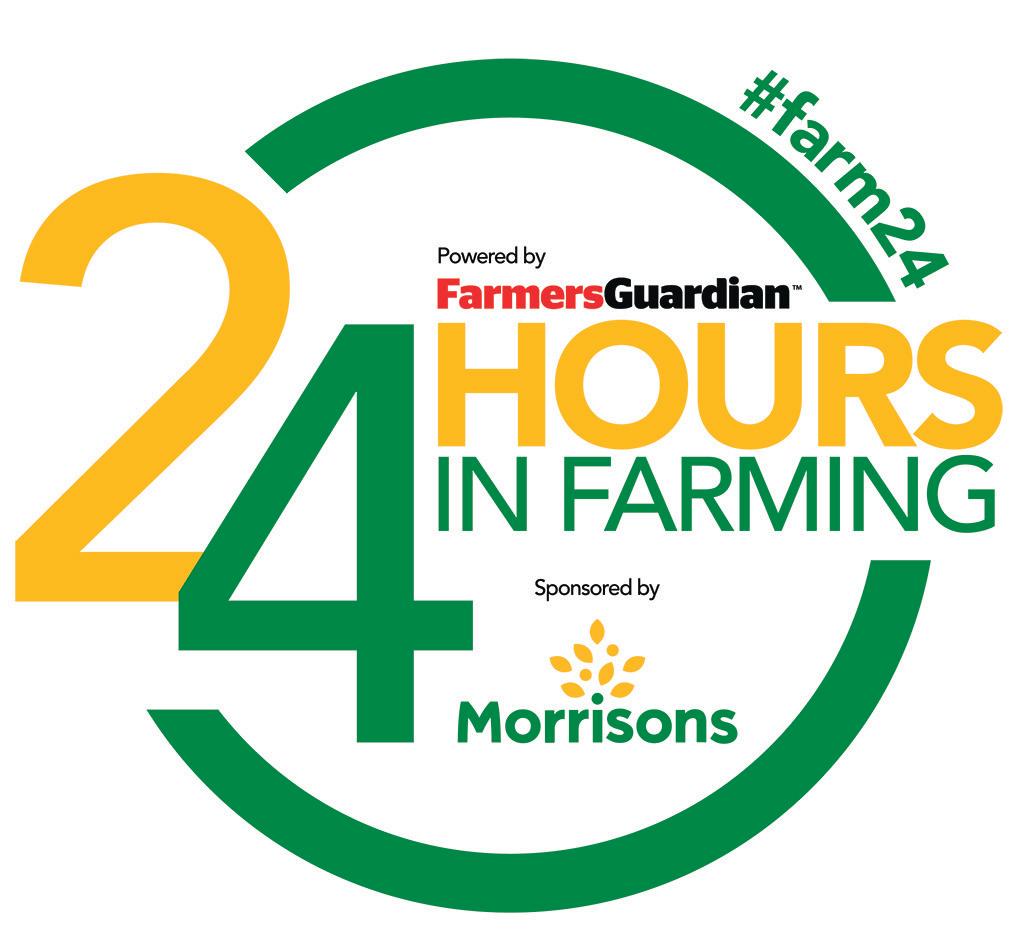

As Liz says, there is so much more to farming than people realise. So why not join us from August 8 at 5am to August 9 at 5am to showcase exactly what the industry is all about? #farm24 is agriculture’s biggest digital event. Post images, videos and stories across social media using the hashtag #farm24, and tag Farmers Guardian and Morrisons. Just like Liz, you never know who you might inspire to take a closer look at farming.
For more information about the event, scan the QR code opposite or visit farmersguardian.com/farm24
urban area, I see how important this environmental story is to the public.
“I see it as bridging that gap between what the consumer expects and the great work farmers are already doing, and building on that.”
It is difficult to imagine Liz doing anything else now, and with so much change going on

in agriculture – especially the drive to become more sustainable – she is enjoying playing a part in supporting farmers to create more resilient businesses that are fit for the future.
She adds: “We have had really positive feedback, and it is nice to think I am helping to create positive change within the industry.”


In this community section update, we share news from the heart of British rural life, focusing on all-things YFC, fundraising and events.

Last month, four National Sheep Association (NSA) Next Generation members travelled to France for the Next Generation Shepherds World Championships.
The week-long competition gave the young shepherds a chance to network and compete against fellow young farmers from around the world. Attendees travelled across the sheep farming regions of France, which provided a fantastic opportunity to learn more about the sheep industry outside of their home nations alongside welcoming them into an expanding international network committed to supporting the next generation of farmers.
The four UK competitors were Caryl Davies from Wales, Liam Doyle from Northern Ireland, Matthew Fearon from England, and Lana Bell from Scotland.




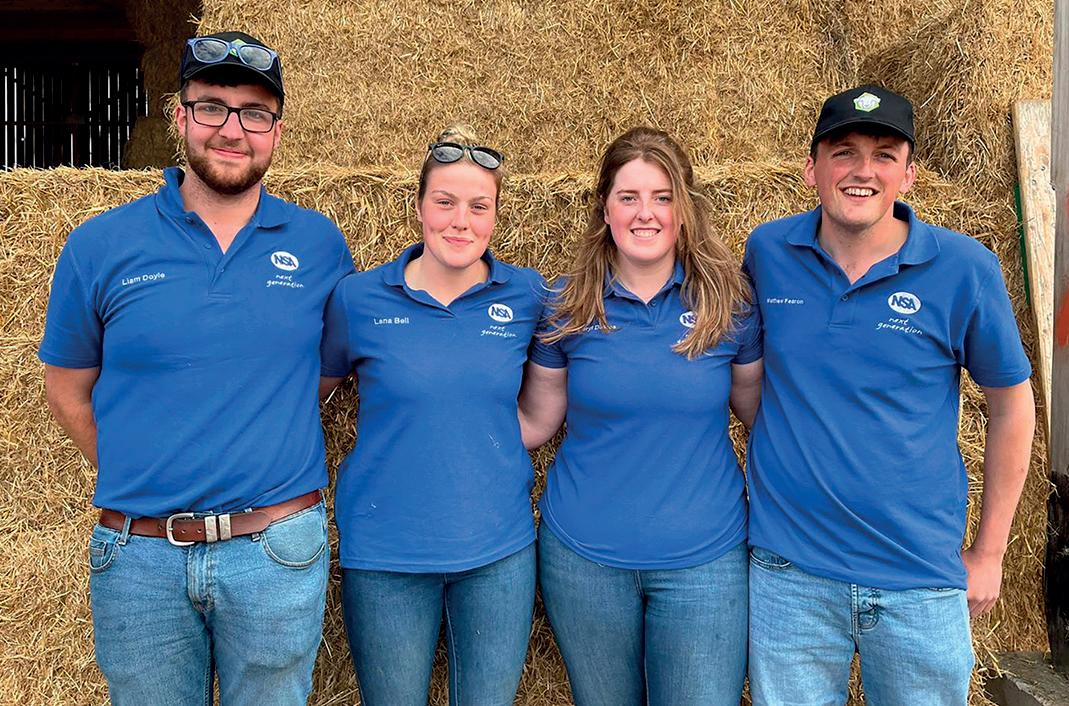
Competing for Wales was Pembrokeshire farmer’s daughter Caryl, who recently graduated from Aberystwyth University after studying a degree in agriculture. She says this once-in-a-lifetime experience was ‘simply luck’ after agreeing last minute to take part in the NSA Next Generation competition at the NSA Welsh Sheep event last May.
She placed as the second highest qualifying female at the Welsh event, and so was called up for the World Championships when the first placed qualifier was unable to attend.
Caryl says: “My attitude has always been to say yes to every opportunity, so when this arose – despite being very nervous to travel on my own and not knowing any other competitors – I knew it would be a great experience.”
There was a variety of competitions, which she met with a healthy competitive attitude that was gained through her Young Farmers Club. Despite the language barrier, with most of the competitors speaking French, she says meeting people who share the same interests was the best part of the trip, and that she has made some close friends.
“We did not view the week as a competition; it was a social experience which we helped each other through,” she adds.
Caryl was placed eighth highest shepherdess in the competition.








Following six competition stages that included tests of shearing, foot care, ewe and lamb selection, body condition scoring and electric fencing, Matthew – who works on his family’s hill farm in the Lake District, Cumbria – finished a respectable fifth out of 30 participants, while Liam, a student from Greenmount College, Co Antrim, placed ninth.
The four UK competitors were selected after competing at the NSA Sheep Event’s national finals of the NSA Next Generation Shepherd of the Year in 2022. This year’s NSA Sheep Event will once again host the Next Generation competition, taking place on July 30 at the Three Counties Showground, Malvern. There will be 18 skilled young farmers competing in the event, which is sponsored by the Texel Sheep Society.
















James Graham, of Clyde and Central, has been awarded Stockman of the Year for 2024. The 26-year-old Stirlingshire farmer continues his family legacy in the competition, joining his brother John on the coveted list of past winners. He says: “It has always been a lifetime ambition to win Stockman of the Year. I could not have done it without a top-class team and trainers behind me; it still has not fully sunk in. This competition has given me the ability to be confident in judging any breed of livestock and appreciating a good animal in any breed.”








About 3,000 children from 65 local primary schools attended the Essex Schools Food and Farming Day on June 25 to learn how their food travels from farm to fork. The event is organised by the Essex Agricultural Society and was held at ARU’s Writtle campus.


Event chair Annabelle Rout said: “We were delighted to welcome schoolchildren back for this year’s event. The showground was filled with exhibitors from across Essex in our five zones: livestock, machinery, food, crops and countryside and environment.”

Hands-on activities allowed children to come faceto-face with farm animals, see tractors and combine harvesters in action, and taste-test locally grown food.


Last weekend, YFC members travelled to Wiltshire for the South West Area Competitions day, with members competing in a range of competitions such as stockjudging, the club cubicle, fence erecting and tug of war. Devon YFC picked up the overall trophy for most points in competitions across the weekend.










A special shout-out to those from Bleary YFC, Lylehill YFC, Crumlin YFC, Holestone YFC, Cappagh YFC and Straid YFC who volunteered on-farm.


Young Farmers’ Clubs of Ulster (YFUC) members across Northern Ireland were delighted to help out during the Bank of Ireland Open Farm Weekend on June 15 and 16, which had more than 15,000 visitors. The event bridges the gap between urban and rural communities, providing insight into the agricultural sector so visitors can witness the origins of their food first-hand. The weekend highlighted the involvement and dedication from YFUC members, and it was to clear that everyone enjoyed it.


Harray YFC has been crowned the National Club of the Year for 2024 at this year’s Royal Highland Show. Despite travelling the furthest to attend the final, the presenting trio were still sharp in their presentations, handling the judges’ questions well and speaking passionately on behalf of their club. They especially impressed with their efforts to connect and contribute to the local community: volunteering with local care homes, churches and charities, and helping out with local farms and agricultural events. Runners up in this year’s competition were West Renfrewshire YFC in second place and Forss YFC in third place.












Every week we follow the ups and downs of farmers around the UK
KATE BEAVAN
Monmouthshire
Kate farms alongside her husband Jim on their farm near Abergavenny, Monmouthshire. Farming 122 hectares (300 acres), the main enterprise consists of 800 breeding ewes and cider made on-site from their orchards. She is a mum of two, runs Kate’s Country School on-farm and is the woodland creation officer for Stump Up For Trees.
By the time you read this, the UK parliamentary General Election results will have been announced.
It’s amazing how many politicians have made contact recently wanting to visit and discuss farming issues.
The conversations changed pretty quickly when I agreed to a visit and chat, but without the media. Funny that. One of the emails regarding a potential visit from a ‘political VIP’ was sent from Downing Street. It seems all parties were wanting to be seen supporting farms ahead of the election.
That said, I did meet (or maybe it was a polite ambush) our new Cabinet Secretary for Climate Change and Rural Affairs (Huw Irranca-Davies) last week and managed to have a cup of tea and honest chat without the media.
He listened and was genuinely surprised by the issues we are facing as a farmer-led charity working with other farmers trying to plant trees in the right place. Discussions will hopefully continue after the election (he got

‘There is a way forward, but we all need to be part of the discussions’
whisked away), but I’m usually a good judge of character and feel mildly optimistic. There is a way forward, but we all need to be part of the discussions.
It is good to talk. We had a successful open day at the tree nursery this week with tours, cake and lots of chat.
If you are farming in South Wales and would like to plant hedgerows, shelterbelts or agroforestry options, then please get in touch.
We offer capital and maintenance grants, we’re very friendly and not Government-funded, so flexible.

Our son Sam came home to help Jim finish shearing. Sam then headed up to the Scottish Highlands to help out there, it seems many shearing gangs across the UK are having problems recruiting.
It is hard work and the payment has not changed for a while. One of the old farming sayings used to be that you should never shear a sheep for less than the price of a pint of beer. I would normally say it’s a young person’s job, but Jim’s brother is planning to celebrate his 60th birthday this weekend
by shearing his first 400 in a day. Good luck Huw.
Jim took advantage of the mini heatwave and made some lovely meadow hay. It smells delicious. We’re sat outside this evening, the fragrant scent of hay in the air, watching clouds of mayfly rising from the river.
Stress levels are dropping (might be the cider), trout are jumping, sheep are bleating and the dipper, kingfishers and otters are closeby. Remember to take time out, even if it is only an hour or so. Take care all.





Cumbria James Robinson
Yorkshire Helen Stanier
Cheshire
Ian farms in partnership with his family near Knutsford, Cheshire. They manage 700 commercial pedigree Holstein/Friesians on 445 hectares (1,100 acres). Replacements are homereared and cows are on a composite system. Ian is a representative for Sainsbury’s Dairy Development Group and sits on the AHDB Genetics Advisory Forum.
The last few days of June has seen second cut silage clamped. The yields seem moderate but, as you might imagine, quality looks reasonable.
The weather was so hot that we even made some hay, as did all our neighbours. Grazing appears to be
recovering, albeit buffer-feeding on one farm has helped bring covers back to 2,200kg/hectare, which is acceptable.
Maize has been a concern. Cool, slow growth in spring has left some fields behind the target of ‘knee-high by the first of July’. This time last year it was comfortably waist-high.
I imagine the delay in sowing hasn’t helped. That said, the damp conditions allowed us to use pre-emergence
‘Wing-P’ at four litres/ha (full rate) and the results have been impressive. Very little need to consider going back in to add herbicide.
Uniform soil type has definitely been an advantage. Where maize has been sown into soil with any degree of variable soil type, no matter how well cultivated, the crop has emerged with mixed results.
It is good to see the open market milk price improving, but I suspect confidence in the dairy industry is low. Difficult weather, combined with


the likelihood of a Labour Government and its vote-grabbing headlines at the expense of good science, will be of concern to many.
The current inexhaustible appetite to encourage greening has many dairy farmers feeling vulnerable.
That said, excellent beef and lamb trade may tempt some with the ability to choose alternative income streams without the seven-day intensity of dairy.
Well documented difficulties in the dairy industry are seemingly not enough to improve milk prices. Only a lack of supply appears to have the ability to move things forward.
I was fortunate to attend a most informative dairy seminar at the Royal
Cheshire Show on the Tuesday evening. Chair Tony Rimmer, of Rostons, Graham Young, of NFU North West, and John Allen, of Kite, highlighted some of the global pressures and opportunities within dairying.
It was great to see an informed debate, good questions from the floor and, despite the aforementioned challenges, some real positive opportunities for the future.
One of the things the debate highlighted was the opportunities for US beef. Global weather challenges, greening and increased consumer demand have seen most impressive beef prices. It was quoted that US Angus dairy-bred bull calves, three weeks old were at £800/head.
Sendinyourcorrectentriestobeinwithachanceofwinning£20worthof Love2shopvoucherseverymonth.Sendto:CrosswordNo.1252, Farmers Guardian,Unit4,FulwoodBusinessPark,CaxtonRoad,Fulwood,Preston,PR29NZ.
1 Precursor is unfortunately reprocessed (11)
7 Clergyman taking in a nuclear device (7)
8 Ridicules with satire cat returning around last point (5,2)
10 Slightly crazy, marked with spots (5)
11 Length in adjusted hemlines in conformity to Greek ways (9)
12 Mum with enthusiasm becomes a baton wielder (7)
14 Plundering old Spanish white wine in gallons (7)
15 Age-old game incorporating witchcraft and upper-class element (7)
17 A learner leaving one country for another (7)
19 Article with a talent modified before delivery (9)
21 Source of oil discovered in overturned cellular pockets (5)
22 Element of last of nasty dry rum I swallowed (7)
23 Publish again revised series about upper-class (7)
24 Golden tones circling in this US national park, home of Old Faithful (11)
1 Soft child’s toy rabbit (7)
2 One guarding access, forgetting second way in (5)
3 Pathetic fellow is fisherman’s bait (9)
4 Carefully move large supporting framework (5)
5 Sets of words for prison terms? (9)
6 Composer admitting small sin to French king (7)
7 Basic day return I’m changing (11)
9 Oriental fruit, one of the apple family nana consumed (11)
13 Experiment involving endless racket game occurring once every three years (9)
14 Lightweight weapons; do little people have them? (5-4)
16 Remain longer than old regularly rusty support (7)
18 Comeback is mature involving original sound track (7)
20 Rate weird poet, essentially comic at heart (5)
21 Child in old strong cloth (5)
Answers to crossword 1250: Across: 1 Precious stone, 8 Issuer, 9 Popgun, 12 Eyrie, 13 Blizzards, 14 Summit, 15 Egomania, 18 Wisteria, 20 On edge, 23 Superhero, 25 Guava, 26 Potato, 27 Sea dog, 28 Jekyll and Hyde. Down: 2 Rostrum, 3 Cauterise, 4 Ourebi, 5 Saplings, 6 Topaz, 7 Neutron, 10 Leastwise, 11 Estate car, 16 Monograph, 17 Wire wool, 19 Suppose, 21 Diamond, 22 Worsen, 24 Ready.
When facing a challenge, it is helpful to look back and review what happened at the start. The ability to change our actions and strategies at the source has a compounding effect on how to navigate a way out.
One such challenge for the agricultural sector is the idea that supermarkets produce the food we eat.
Many consumers are unaware of the true origins of their food, leading to misconceptions such as thinking carrots grow pre-washed and packaged in plastic bags. The source of our food is not something everyone will consider when picking brightly coloured, attractive packages from the shelves.
It is crucial that, as an industry, we continue to strengthen the connection between producers and the public to foster a better understanding of food production. And where better to start than with the next generation?
The Glendale Agricultural Society recently hosted its 18th Children’s Countryside Day, an annual event that sees about 1,600 children from 32 schools descend on a grass field in

north Northumberland to learn about food, farming and the environment.
I am now in my fourth year volunteering as a steward, and the enthusiasm, interest and joy of the children never ceases to amaze me.
As a nose-to-tail convoy of buses arrives, flocks of children rush towards the tents and exhibits, eager to participate in the activities, shows, demonstrations and displays set up for the day.
Children excel at learning by using their senses. Touching a spiky straw bale, hearing traditional music or smelling the sheep and goats. Watching a carcase being cut up and tasting freshly cooked produce within just a few metres is an experience few children will forget. Literally education from farm to fork.
Underlying the day is the support the public has for British farming and the countryside – building the concepts of food production, environmental management and sustainability that we do so well.
And even better: What if events such as the Children’s Countryside Day spark a career in farming and the
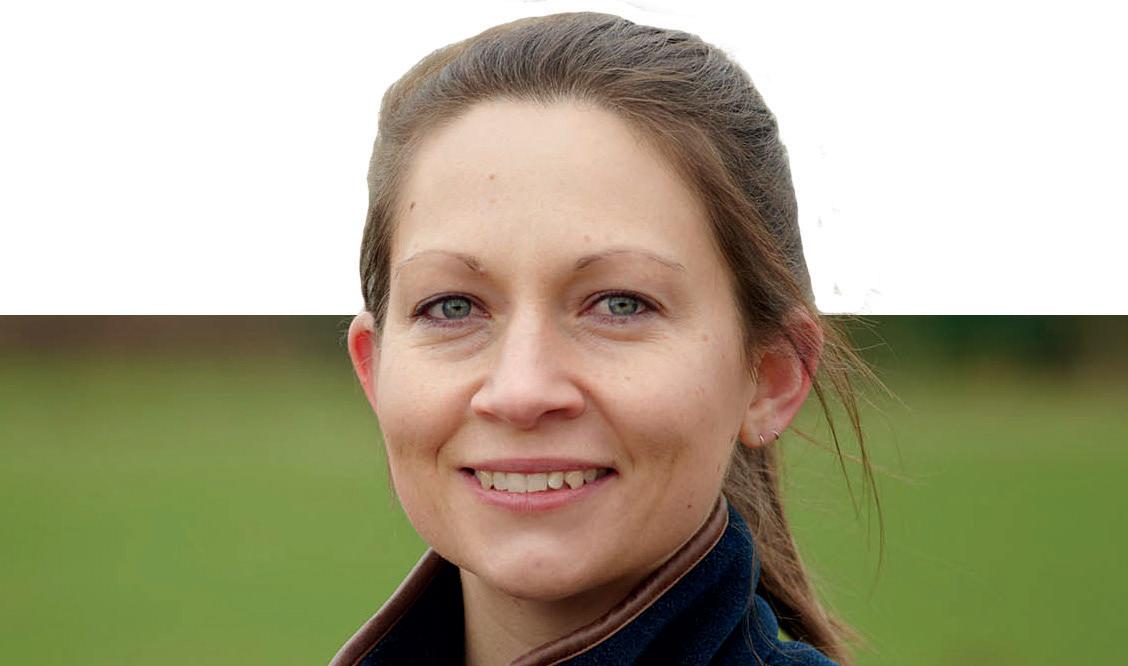


rural sector for those without an existing connection to the countryside, and what benefits to the wider community can that bring? Perhaps more children in local schools, greater healthcare facilities and more people to use the bus service?
The line of children I saw, staring wide-eyed at the combine header fired up with flashing lights, shows this is entirely possible.
Early engagement is so important, and offering the opportunity to those who would not normally have access to these experiences is key to generating that.
Many schools drive for over an hour to attend. One teacher told me that 50% of the children at their semi-urban school will not leave the town, citing socio-economic reasons such as lack of means to own a private vehicle and poor availability of public transport.
This is a shameful figure. If we cannot build this connection to the countryside in rural Northumberland, where can we do it?
By 2.30pm, all the buses are gone
and the tidy-up begins. This is a true community effort from local businesses, farmers and volunteers who planned and put together exhibits, transported their animals, hosed down muddy equipment and loaded it into their pickups, kept the handwashing stations filled, set up and took down the tents, completed the risk assessments and generally gave up their time.
This concept works, evidenced by the hundreds of happy, tired children clutching their drawstring bags full of leaflets, handmade wildflower seed packets, badges and stickers ready to show those at home what they learned.


The Glendale Agricultural Society hosts an annual Children’s Countryside Day, which welcomes about 1,600 children from 32 schools to learn about food, farming and the environment.








27-28 November 2024
NAEC | Stoneleigh



croptecshow.com











































































































































































































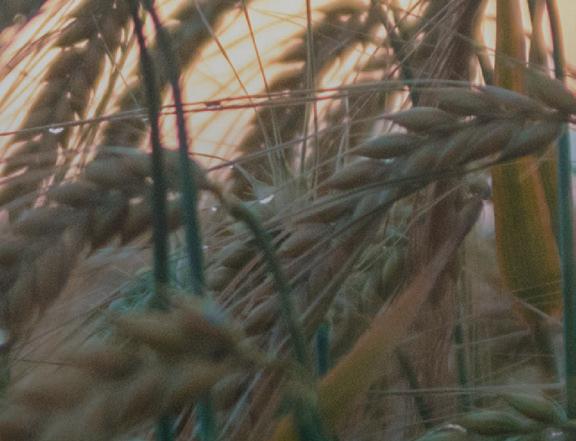

















































This year’s CropTec introduces three keynote theatres focusing on Innovation, Knowledge and Profit. Join us as we explore the
























































































































































































































































